Sites: news | india | latam | brasil | indonesia
Feeds: news | india | latam | brasil | indonesia
topic: Ex-situ Conservation
Social media activity version | Lean version
Spotted softshell turtle release boosts reptile conservation in Vietnam
- The rewilding of 50 captive-bred spotted softshell turtles has sparked hope among conservationists for the future of the rare and threatened species in Vietnam, a country where softshell turtles are widely considered a culinary delicacy.
- Described by scientists as recently as 2019, the species is considered critically endangered throughout its range in China and Southeast Asia due to hunting for human consumption and habitat loss.
- The reintroduction of the young turtles is the first rewilding of offspring reared at a dedicated turtle conservation breeding facility in northern Vietnam to safeguard Vietnam’s rare and threatened amphibian and reptile species.
- Turtle conservationists say that while it will be a long and perilous road to recovery for the species in Vietnam amid persistent threats, the work to preserve the species is a positive step toward changing people’s view of freshwater turtles as primarily a food item and curbing hunting pressure not only on this species, but many others as well.
New calf brings new hope, and new concerns, for embattled Sumatran rhinos
- A male Sumatran rhino calf was born Nov. 25 at Indonesia’s Sumatran Rhino Sanctuary in Way Kambas National Park, marking the second birth at the facility in as many months.
- Independent estimates put the species’ wild population at no more than 47 individuals, so each new birth increases hopes the species can be saved from extinction; the new calf brings the captive population up to 11.
- However, the birth also highlights weaknesses of the captive-breeding program: the father and mother of the new calf are related, a consequence of all the male rhinos currently in captivity being descended from a single genetic line.
For Vietnam’s rare reptiles, lack of captive populations may spell doom
- As an epicenter of biodiversity, Vietnam hosts a wide array of reptile species. But new research shows that many species that occur nowhere else on the planet are poorly known and lacking protection.
- The researchers also found that many of Vietnam’s rarest species are absent from the world’s zoo collections and conservation breeding programs, risking their disappearance forever should their wild populations collapse.
- They call on conservationists and authorities to focus on conservation measures to protect the country’s most vulnerable reptiles, including establishing assurance populations that could be used in the future to repopulate areas of wild habitat from which they have been lost.
Stem cells may make ‘impossible possible’ for near-extinct Sumatran rhino
- Wildlife scientists in Germany are developing a method to produce new living cells from a dead Sumatran rhinoceros in an effort to prevent the extinction of the critically endangered species.
- They have used skin samples of the last male rhino in Malaysia, known as Kertam, who died in May 2019, to grow stem cells and mini-brains as reported in the researchers’ recently published paper.
- Fewer than 80 rhinos remain in the world, and they all currently live in Indonesia in the wild, and some in a sanctuary for captive breeding.
- The captive breeding initiative of the Sumatran rhinos began in the 1980s, but over the years, the attempts have yielded both successes and failures.
Scotland changes course to save its last native wildcats
- The European wildcat has been put into an “intensive care” program of captive breeding and reintroduction in Scotland.
- Found only in a few small pockets in the north, it is the country’s only remaining native felid.
- But even the conservationists in charge of it accept that the program’s success is far from certain to save the “Highland tiger,” a species emblematic of Scotland’s wild landscapes.
Asia’s troubled trees need better conservation to reach restoration goals: Study
- South and Southeast Asia’s 19,000 tree species form the foundations of some of the world’s most biodiverse rainforests, as well as provide irreplaceable ecosystem services and underpin the livelihoods and diets of hundreds of millions of people.
- However, roughly three-quarters of the land deemed most important to protect regional tree diversity lies outside of protected areas, according to a new study that evaluates the distribution and threats facing 63 native tree species.
- The findings question whether countries will be able to fulfill their ambitious forest restoration targets; in particular, the researchers are concerned that crucial seed resources that could support reforestation efforts are being lost.
- The researchers recommend a more coordinated approach to conservation planning within the region, including improved cross-border collaboration and a holistic, landscape approach that integrates trees into production systems outside of protected areas.
It’s a girl: Super rare Sumatran rhino born in captive-breeding center
- Indonesia has reported the birth of a Sumatran rhinoceros in a captive-breeding program targeted to save the critically endangered species from extinction.
- The new calf is the first child of captive rhino Rosa at the Way Kambas Sumatran Rhino Sanctuary, and Andatu, a male who was himself born at the sanctuary in 2012.
- This new captive birth of a Sumatran rhino has rekindled hopes among experts and officials for more newborns in the future.
Cambodian project aims to revive flagging fish populations in Tonle Sap Lake
- Struggling freshwater fish populations in the Mekong River catchment received a boost earlier this month when a team of scientists and fisheries specialists released 1,500 captive-reared juvenile fish into Tonle Sap Lake in Cambodia.
- Experts say the release is the first step in rejuvenating the Mekong’s depleted fish populations and fisheries, which have been suffering in recent years due to overfishing, drought, habitat destruction, and the impacts of upstream dams on the Mekong River’s natural flow.
- The fish, including critically endangered Mekong giant catfish and giant barb, and endangered striped river catfish, were released into a series of fish sanctuaries and community conservation areas that protect crucial fish nursery habitat in Tonle Sap Lake, the world’s most productive inland fishery.
- Long-term survival of the Mekong’s threatened fish species will also depend on protection of migration corridors and upstream spawning grounds, and on maintenance of free-flowing and connected watercourses, say experts.
Wild release marks return of giant forest tortoises to Bangladesh hills
- Researchers and villagers last month released 10 captive-bred Asian giant tortoises into Bangladesh’s Chattogram Hill Tracts to boost numbers of the threatened species in the wild, once thought to be extinct in the country.
- Asian giant tortoises are critically endangered throughout their range in South and Southeast Asia due to heavy hunting pressure and habitat loss.
- The rewilding of the batch of juvenile tortoises is the first wild release of offspring reared at a dedicated turtle conservation breeding center that was set up in the Chattogram Hills in 2017 to safeguard the future of several rare and threatened species.
- Through tortoise conservation, researchers are working with local hill tribes to monitor local wildlife, curb hunting, and protect community-managed forests.
Snapshot of hatchlings raises hopes for Siamese crocs in northeast Cambodia
- Researchers have found and photographed eight Siamese crocodile (Crocodylus siamensis) hatchlings in northeastern Cambodia — the first confirmed evidence that the critically endangered species is breeding in this area.
- The new breeding population significantly expands the known breeding range of the species in Cambodia; until now, most breeding was recorded around the Cardamom Mountains landscape in the southwest.
- With fewer than 1,000 adults remaining in the wild globally, the species is on the brink of extinction; threats include habitat loss, hydropower schemes, poaching, and entanglement in fishing gear.
- Wildlife experts say conservation measures, including community engagement, captive breeding and reintroduction programs, will help to ensure Siamese crocodiles’ long-term survival.
Captive breeding of Sumatran rhinos: Where the program stands today
- In a series of video interviews, Mongabay speaks with Sumatran rhino experts to get up-to-date information on efforts to breed the species in captivity.
- The interviews focus on three locations that host the vast majority of Sumatran rhinos, whose entire population is believed to number no more than 80.
- The interviews reveal fears stemming from the dire state of the species, as well as optimism that officials and conservationists are finally working with united purpose to keep the species from sliding into extinction.
To count Sumatran rhinos in the wild, look for their poop, study says
- Sumatran rhino droppings could help researchers solve the decades-long question of how many of the critically endangered rhinos are left in the wild.
- This method allows researchers to collect DNA samples without bothering rhinos in the wild.
- For more accurate estimates, the researchers also identified “microsatellite markers” that they can use to help distinguish between individual animals.
- Current estimates suggest there are fewer than 80 Sumatran rhinos left on Earth, scattered in isolated populations on the Indonesian islands of Sumatra and Borneo.
Sumatran rhinos show low inbreeding — but when it happens, collapse is quick
- Fewer than 100 Sumatran rhinos are believed to remain on Earth, and the species faces dire threats due to a low birth rate, habitat loss and fragmentation, and poaching.
- A new study finds that, despite its small size, the population retains significant genetic diversity, and likely has the genomic “toolkit” necessary to survive threats like climate change or disease.
- The findings are good news for conservationists, but also come with a warning: an analysis of a recently extinct subpopulation revealed that a rapid spike in inbreeding preceded their extinction.
- The research highlights dilemmas currently facing conservationists working to breed Sumatran rhinos in captivity: Should subspecies be mixed? And, when no alternatives exist, should captive rhinos be bred with their relatives?
Video: Doomed or viable? Sumatran rhino captive breeding faces a dilemma
- A new animated short film from Mongabay, illustrated by artist Roger Peet, depicts one of the most urgent questions facing experts trying to save the Sumatran rhino from extinction.
- With no more than 80 Sumatran rhinos left on Earth, many of them isolated into groups too small to be viable, the species’ natural birthrate is so low that experts have reached a consensus that human intervention is necessary to stave off extinction.
- The question now is which rhinos to capture: Isolated ones are less likely to be healthy and fertile, but removing rhinos from populations that are still breeding in the wild could risk the survival of these last few viable groups.
Signs, but no sightings: The phantom rhinos of Sumatra’s Bukit Barisan Selatan
- Bukit Barisan Selatan National Park in Sumatra’s Lampung province is believed to be one of the last homes of the nearly extinct Sumatran rhinoceros.
- But the little evidence showing the existence of rhinos at the park has sparked concerns among some experts that the species may have already gone extinct there.
- While some Indonesian experts still believe Bukit Barisan Selatan holds a rhino population, the loss of forest to farms, roads and illegal encroachment inside the park makes that scenario increasingly unlikely.
- Indonesia is the last place on Earth with Sumatran rhinos, whose total population is estimated at fewer than 80 individuals.
Sexual harassment rife in Vietnam’s conservation sector, survey reveals
- A survey by WildAct, a Vietnamese conservation organization, found that 82.5% of respondents have experienced some form of sexual harassment in the last two years.
- Those surveyed said that they feel most vulnerable while working in the field, and particularly when alcohol is involved.
- In response, WildAct has called for other organizations and government agencies in the sector to prohibit alcohol consumption during fieldwork.
Building a road to recovery for subtle racism in conservation (commentary)
- The following stories are based on firsthand experiences, personal observations, and eyewitness accounts related to race and privilege in the conservation space in Africa.
- More than 20 African women from nearly a dozen countries, each conservation leaders in their own right, contributed to these stories.
- They came together with a desire not to pulverize the conservation space, but rather to heal it. The goal is to offer a chance for self-reflection and open conversation in a world where too many things go unsaid.
- This article is a commentary, the views expressed are not necessarily those of Mongabay.
On World Rhino Day, ‘real work’ is still needed to save Sumatran rhinos
- September 22 marks World Rhino Day, which looks to bring attention to the protection of the two African and three Asian rhino species that exist today.
- Of these five species, the Sumatran rhino is in the greatest peril, described as the most endangered large mammal on Earth.
- Its population is estimated at fewer than 80 individuals living in small, isolated habitats in Indonesia, where a low birth rate (a result of their isolation due to habitat fragmentation) is now the biggest threat to their survival.
- Rhino experts have called on the Indonesian government to do “real work” to save the species, including on a captive-breeding program widely seen as the last feasible means of staving off extinction.
A mysterious heart bone in chimps points to cardiac disease
- Chimpanzees and other great apes are widely afflicted by heart disease; three-quarters of chimps that die in captivity have been found to suffer from heart disease, and up to 90% of captive chimps could have it.
- Using high-resolution 3D imaging, a team of researchers discovered that some chimp hearts contain a tiny bone known as an os cordis.
- Researchers do not yet know how, or why, the bone forms in chimps, but it appears to be more prevalent in those with heart disease.
- Researchers hope this finding will help conservationists keep captive chimps healthy, and increase broader knowledge of chimpanzee pathology.
‘Every tool in the box’ to save Sumatran rhinos: Q&A with Nina Fascione of IRF
- In March 2020, Nina Fascione was named the new executive director of the International Rhino Foundation (IRF).
- The IRF works to protect all five rhino species, but none is as imperiled at the Sumatran rhino, which numbers fewer than 80.
- Mongabay spoke with Fascione about her background, her new job, and her organization’s plans to save the Sumatran rhino.
For two rhino species on brink of extinction, it’s collaboration vs. stonewalling
- An ocean apart, and genetically separated into two distinct genera, the Sumatran and northern white rhinos have something in common: populations so small that researchers are looking to artificial reproductive technologies (ART) to ensure their survival.
- The situation is particularly dire for the northern white rhino, with just two known living individuals, both female. However, in 2019, a team of international experts successfully created northern white rhino embryos in a lab.
- With an estimated population of 80, Sumatran rhinos are more numerous, but ART efforts have been slowed by strict regulations imposed by the Indonesian government.
Reproductive woes spell need for more viable females in Sumatran rhino program
- A captive-breeding program for Sumatran rhinos should focus on trapping fertile females from the wild, scientists say in a new paper.
- The study looked at the high prevalence of reproductive diseases among captured female rhinos and determined that those in the wild were also susceptible to these conditions.
- The recommendation is markedly different from the Indonesian government’s current focus on capturing so-called doomed rhinos — those defined as living alone or in groups too small to sustain natural breeding in the wild.
- Even if more fertile females are captured, there’s no guarantee that they will go on to produce calves, according to the scientist who pioneered the captive-breeding process for the species.
Indonesia-WWF split puts rhino breeding project in Borneo in limbo
- A recent decision by Indonesia’s environment ministry to abruptly cut ties with WWF Indonesia has thrown a crucial effort to conserve Sumatran rhinos into limbo.
- WWF Indonesia had been deeply involved in an initiative to start a captive-breeding program for the species in Indonesian Borneo.
- Experts agree that captive-breeding of the species is the best way to boost a birth rate that has dropped below natural replacement levels, and the capture of wild rhinos from Borneo was seen as key to boosting the available genetic pool.
- It’s not clear how the program will now proceed, but WWF Indonesia says it remains open to supporting the government on the conservation cause.
Time is running out for Southeast Asia
- Several species and subspecies have gone extinct in the last 100 years. Others remain missing.
- Most of Southeast Asia’s large-bodied animals are now threatened with extinction.
- Deforestation and the wildlife trade have even left smaller-bodied species decimated as well.
- Southeast Asia has to decide if preserving its irreplaceable and unique wildlife is a priority – or the losses will continue to mount.
Malaysian attempt at Sumatran rhino IVF fails on low quality of sperm
- A recent effort to produce a Sumatran rhino embryo from egg and sperm samples taken from the last of the species in Malaysia has failed, officials said.
- The low quality of the sperm, extracted in 2015 and 2016 from an aging rhino that has since died, was cited as the main cause of the failure to fertilize the egg.
- Malaysian officials say they will continue to improve and attempt their in vitro fertilization attempts, and have called on Indonesia to send sperm samples from younger rhinos held in Sumatra.
- Indonesia has refused to send any samples, citing the need for a formal agreement, but conservationists say that captive-breeding of Sumatran rhinos is the only feasible solution to protect the species from extinction.
At India’s Assam Zoo, decades of experience lead to rhino-breeding success
- Assam State Zoo in northeastern India has been breeding greater one-horned rhinos in captivity since the 1960s.
- However, until 2011 the country lacked a formal, nationally coordinated program dedicated to maintaining a viable captive population of the species, which is considered by the IUCN to be vulnerable to extinction due to poaching.
- India launched an official captive-breeding initiative in 2011. One calf has already been born at the Assam Zoo as part of the program, and another is on the way. An additional six have been born in the Patna Zoo in India’s Bihar state.
Sumatra survey looks to identify at-risk rhinos for captive breeding
- The Leuser Ecosystem in northern Sumatra is home to as many as 50 Sumatran rhinos, out of no more than 80 believed to survive in the wild.
- Surveys in the area have identified some subpopulations large enough to breed naturally, as well as isolated individuals or small groups unlikely to find mates.
- Indonesia’s current plan calls for larger groups to be protected in situ, while more isolated rhinos are to be gathered into sanctuaries for a captive-breeding program.
- Both national and local officials back a plan to create a new sanctuary in the northern Sumatran province of Aceh.
Bid to breed Sumatran rhino is handicapped by bureaucratic ‘quibbling’
- A group of international scientists working in Malaysia have successfully extracted an egg cell from the country’s last Sumatran rhino and injected sperm into it, in a last-ditch attempt at breeding the world’s most threatened rhino species.
- However, the scientists say the prospects of a successful fertilization are “not bright,” given the poor quality of the genetic samples they had to work with.
- They blame a bureaucratic impasse between Malaysia and Indonesia for depriving them of high-quality sperm from rhinos held in captivity in Indonesia, which they say would have given a better chance of fertilization.
- An Indonesian official says no exchange of genetic material, including sperm and eggs, can proceed until the requisite paperwork is signed, but conservationists say this is “quibbling” at a time when the species faces extinction.
Indonesia agrees to attempt Sumatran rhino IVF with eggs from Malaysia
- Conservationists have welcomed a long-awaited agreement by Indonesia and Malaysia to move ahead with assisted reproductive technology for the captive breeding of the nearly extinct Sumatran rhino.
- Indonesia has long balked at sending rhino sperm to Malaysia for use in artificial insemination, but has now agreed to accept eggs from Malaysia to carry out in vitro fertilization.
- If successful, the program would give the species a much-needed boost in genetic diversity.
- Scientists in Germany last year used IVF to successfully produced embryos — though not a baby — of white rhinos, an African species.
When it comes to captive breeding, not all Sumatran rhinos are equal
- A new partnership called Sumatran Rhino Rescue aims to capture critically endangered Sumatran rhinoceroses to reinvigorate a captive-breeding program.
- Most experts agree that captive breeding is necessary to prevent extinction; with wild populations small and fragmented, too few baby rhinos are being born to keep the species alive.
- The current plan approved by the Indonesian government focuses on capturing “doomed” or “isolated” animals in populations too small to survive in the long term.
- However, female Sumatran rhinos living in isolation are particularly susceptible to reproductive problems, leading some experts to argue that it makes more sense to focus on capturing rhinos from healthier populations where rhinos are known to be breeding successfully — perhaps at the risk of harming the survival prospects of those populations.
Great Indian bustard eggs being collected to kick-start captive breeding
- The critically endangered great Indian bustard is now down to just 160-odd individuals, most of them surviving in the Thar Desert in India’s Rajasthan state.
- In a last-ditch effort, wildlife researchers along with the forest department have started a hunt for the birds’ eggs to begin the process of captive breeding of the species. Last week, they managed to collect two bustard eggs from the wild; they have permission to collect up to six a year.
- Two captive breeding facilities for the bustard are being built: a main, bigger facility in the south of Rajasthan, and a second, smaller facility in the west, close to where many of the wild birds breed.
- This is the first time that great Indian bustard eggs have ever been collected from the wild for the purpose of captive breeding, and protocols are still being figured out, says Rajasthan’s chief wildlife warden.
Leopards get a $20m boost from Panthera pact with Saudi prince
- Big-cat conservation group Panthera has signed an agreement with Saudi prince and culture minister Bader bin Abdullah bin Mohammad bin Farhan Al Saud in which the latter’s royal commission has pledged $20 million to the protection of leopards around the world, including the Arabian leopard, over the next decade.
- The funds will support a survey of the animals in Saudi Arabia and a captive-breeding program.
- The coalition also hopes to reintroduce the Arabian leopard into the governorate of Al-Ula, which Bader heads and which the kingdom’s leaders believe could jump-start the local tourism sector.
In Ethiopia’s Addis Ababa, Gullele Botanical Garden captivates city dwellers
- Gullele Botanic Garden (GBG) is the first of its kind located in Addis Ababa, Ethiopia.
- Officially inaugurated and opened to the public in January 2019, it has become increasingly popular among the city’s residents and educators.
- On a smaller scale, similar initiatives such as Shashemene Botanical Garden are being undertaken elsewhere in the country.
To rescue Sumatran rhinos, Indonesia starts by counting them first
- In February, authorities in Indonesia held an exercise for Sumatran rhino researchers to track and tally the remaining wild population of the species.
- The government aims to finalize an official count of the critically endangered rhino within three years, according to the environment ministry.
- Natural breeding for the rhinos has been particularly difficult as the remaining individuals live in fragmented lowland forests away from each other. On top of that, rhinos are slow breeders and the females have a short fertility period.
- Estimates of the current size of the wild Sumatran rhino population range from 30 to 100 individuals. Another nine live in captivity in Indonesia and Malaysia.
Better than sex? For hard-to-breed rhinos, technology strives for a solution
- Assisted reproductive technologies (ART) are being developed to improve the outcomes of captive-breeding programs for rhinos.
- If successful, these efforts could help create a self-sustaining reserve population and help diversify the gene pool of wild populations.
- ARTs have been successfully used in both humans and livestock since the 1970s, but have not been as effective in wildlife species such as rhinos.
- Experts say they believe ART could play an important role in rhino conservation, but caution that these technologies are only one part of the solution.
Sumatran tiger killed at London Zoo by potential mate
- Melati, a 10-year-old female Sumatran tiger (Panthera tigris sumatrae), was killed Feb. 8 at ZSL London Zoo when she was introduced to a 7-year-old male called Asim.
- Asim had been transferred from Denmark as part of the European Endangered Species Programme, a captive-breeding program.
- The two tigers had been kept in separate but adjacent paddocks for 10 days before zookeepers opened the door between them on the morning of Feb. 8.
- Scientists believe that fewer than 400 Sumatran tigers live on their namesake Indonesian island.
The long journey to saving the Sumatran rhino, via Borneo (commentary)
- The presence of near-extinct Sumatran rhinos in Indonesian Borneo was for a long time the stuff of legend, with no hard evidence to support it. Still, wildlife experts spared no effort to investigate every scrap of information.
- Those rumors eventually bore fruit with the capture of two individuals by conservationists in the past two years. The first rhino, however, died of injuries sustained before its capture.
- Today, a facility in eastern Borneo holds the other rhino, a female, with around-the-clock care from vets and experts, as part of a wider effort to kick-start a captive-breeding program.
- This post is a commentary. The views expressed are those of the author, not necessarily Mongabay.
A Zambian sanctuary finds caring for chimps is a lifetime commitment
- Home to more than 130 apes, Zambia’s Chimfunshi Wildlife Orphanage is one of the world’s oldest and largest chimpanzee sanctuaries.
- Chimpanzees can live for 50 years or more, so each new animal the center takes in will require decades of care and financial support.
- With an ever-growing number of chimps in need of a home, simply financing daily operations is a challenge for this award-winning facility.
First wild Sumatran rhino in Borneo captured for breeding campaign
- A female Sumatran rhinoceros has been captured in Indonesian Borneo and moved to a local sanctuary as part of an initiative to conserve the near-extinct species through captive breeding.
- A team of veterinarians and rhino experts is now caring for the rhino around the clock, and will seek to establish whether she is viable for breeding.
- Conservationists and government officials have welcomed news of the capture and rescue, a key step toward replenishing a species whose total population may be as low as 30 individuals.
- The capture comes two years after another female rhino was trapped in the same district, only to die less than a month later.
Face-to-face with what may be the last of the world’s smallest rhino, the Bornean rhinoceros (insider)
- Jeremy Hance writes about his experience of meeting Tam, one of the last surviving Bornean rhinos, in Malaysia.
- “Nothing can really prepare a person for coming face-to-face with what may be the last of a species,” he writes.
- This is an insider story. To read, please become a member.
Zoos: Why a revolution is necessary to justify them (insider)
- Jeremy Hance writes about zoos.
- You and I and all of us are the reason these animals sit behind glass or bars; we are the reason only a fraction of their habitat remains; we are the reason they have been driven to almost nothing and may very well, sooner than we can imagine, be extinct and gone, forever cast from existence.
- What right do we have to this authority? And what right do zoos have to exist, if not to show us our illusion of mastery, our waste of creation, and our responsibility to make it right — as right as it can be?
- This is an insider story. To read, please become a member.
Indonesian government puts off Sumatran rhino IVF program
- Indonesia says a long-awaited program to breed Sumatran rhinos through IVF has been postponed, citing the lack of viable eggs from a female rhino in Malaysia.
- The news becomes the latest setback in the years-long saga between the two countries, with some conservationists in Malaysia blaming the Indonesian government inaction for the dwindling odds of a successful artificial insemination attempt.
- There are only an estimated 40 to 100 Sumatran rhinos left in the world, scattered on the islands of Sumatra and Borneo.
The rhino reckoning
- The Sumatran rhino captive-breeding program caught 40 rhinos from 1984 to 1995. To date, the program has produced five calves.
- Some view these figures as evidence of a colossal failure. Others point to the births achieved as proof of the program’s eventual success.
- Momentum has been growing to relaunch efforts to capture wild rhinos. The most significant step yet was the September announcement of a new initiative dubbed the Sumatran Rhino Rescue.
The great rhino U-turn
- As the 20th century drew to a close the Sumatran rhino captive breeding program, launched in 1984, had yet to produce a single calf.
- Home to the last two Sumatran rhinos in the United States, the Cincinnati Zoo made several key discoveries about the species’ reproductive behavior, including the fact that females only ovulate when they have contact with males.
- Andalas, the first Sumatran rhino bred in captivity in more than a century, was born in Cincinnati in 2001. This success, and the subsequent birth of four other calves, has led to a re-evaluation of the program as a whole.
- Now, attention is turned to breeding centers in the rhinos’ original habitat as the future of captive breeding efforts.
A herd of dead rhinos
- An agreement to launch a captive breeding program was brokered in 1984. By 1985, key participants began pulling out, including the Malaysian state of Sabah.
- Despite the setbacks, efforts to capture rhinos quickly got up and running. Keeping the animals healthy proved to be a much greater challenge.
- By 1995, nearly half of the 40 rhinos caught were dead, and none of them had successfully bred in captivity.
1984: the meeting that changed everything for Sumatran rhinos
- A 1984 agreement between zoos, conservationists and government officials marked the formal beginning of an international program that brought 40 Sumatran rhinos into captivity in an attempt to ward off extinction. Within 11 years, the program collapsed.
- The program was long viewed as an epic failure due to high mortality rates and the lack of live births for over a decade; it also paved the way for later breeding successes that just may offer the Sumatran rhino hope for the future.
- As conservationists mull a new plan to capture more rhinos, what lessons do past efforts offer?
In Brazil, a forest community helps seed new trees far and wide
- Brazil’s Atlantic Forest is dotted with quilombos, communities originally founded by former slaves, some of which have been around for more than 300 years.
- Following the example of indigenous communities in the Xingu area of Mato Grosso state, quilombos in São Paulo state’s Vale do Ribeira region are collecting and selling seeds as a source of income.
- They ship the seeds by mail, in mixed batches called muvuca, to landowners who use them to reforest degraded lands through direct seeding.
- The project has not only helped financially empower the quilombos, but also raised the communities’ understanding and appreciation for the native trees and plants of their land.
Brazil’s plant biodiversity still not fully present in its seed banks
- Seed banks are a cheap and effective way of protecting species against extinction and securing genetic diversity.
- The most important seed banks in Brazil are devoted to agricultural species and varieties. Seeds from native species and species that are threatened of extinction are still a minority.
- The Global Strategy for Plan Conservation, a program from the Convention on Biological Diversity, establishes that every country should keep 75 percent of its endangered plant species in off-site collections, such as seed banks, by 2020.
- Brazil will not meet the target and experts argue for the need of a national policy.
And then there were 12: Why don’t we hear about extinction until it’s too late? (commentary)
- Species threatened with extinction often don’t get the public’s attention until they no longer exist.
- The author, zoologist Sam Turvey, argues that more attention to these critical cases is required.
- Ahead of International Save the Vaquita Day on July 7, Turvey points out that the world’s most endangered marine mammal is dangerously close to extinction, and it’s not alone.
- This post is a commentary. The views expressed are those of the author, not necessarily Mongabay.
Geneticists: It’s time to mix the Sumatran rhino subspecies
- The Sumatran rhino populations living in Borneo and Sumatra have been genetically separated for hundreds of thousands of years.
- The species as a whole has no more than 100 living individuals in the wild, and perhaps as few as 30. Another nine are in captivity.
- In a recent study of Sumatran rhinos’ mitochondrial DNA, geneticists argue it’s time to combine the subspecies, despite the potential risks and drawbacks.
- The question is given extra urgency with plans afoot to capture a female rhino in Indonesian Borneo.
There is still a chance to save the Sumatran rhino (commentary)
- In 2017, rhino experts from around the world and government officials reached a consensus that saving the Sumatran rhino requires the capture and consolidation of remaining wild populations in intensively managed captive breeding facilities.
- A female rhino has been identified for immediate capture in Indonesian Borneo.
- In this commentary, WWF Wildlife Practice Leader Margaret Kinnaird and IUCN Species Survival Commission Chair Jon Paul Rodriguez say that local and international conservation groups are ready to support the Indonesian government’s efforts to save the Sumatran rhino through captive breeding and release into safe sites.
- This post is a commentary. The views expressed are those of the author, not necessarily Mongabay.
Conservationist known as a caretaker for Kenya’s orphaned elephants dies at 83
- Conservationist Daphne Sheldrick died of breast cancer on April 12, according to the conservation organization she founded.
- Born in Kenya, she spent her life working to care for orphaned elephants in Kenya and fighting to save the species through her advocacy.
- She started the David Sheldrick Wildlife Trust, named for her husband, in 1977.
- The organization runs an orphan elephant project, as well as de-snaring and veterinary care teams.
Save the Sumatran rhino ‘because we can’ (commentary)
- Mongabay sent contributing editor Jeremy Hance to Indonesia in 2017 to visit the last remaining Sumatran rhinos in the forests and protected sanctuaries where captive breeding is having some limited success.
- Hance argues today in an opinion piece for the Sydney Morning Herald that we should save the Sumatran rhino, not only because losing biodiversity is bad for the health of humanity’s environment, but also “because we can.”
- To keep these ‘lovably weird’ rhinos from extinction, the Indonesian government must act, he argues, because even if there’s 100 left, that size population is unlikely to be viable in the long term.
Baby photos of 10 of the world’s rarest turtles from the zoo trying to save them
- This photo essay comes via Mongabay’s partnership with the Wildlife Conservation Society’s Wild View blog.
- Once a month we’ll publish a contribution from Wild View that highlights an animal species or group.
- This month, the Wildlife Conservation Society’s Don Boyer, Avishai Shuter, and Julie Larsen Maher write about endangered turtles and tortoises WCS is trying to save.
- All photos by Julie Larsen Maher, head photographer for WCS.
The fate of the Sumatran rhino is in the Indonesian government’s hands
- As the Sumatran rhino edges closer to extinction, aggressive interventions have stalled. Even ongoing efforts like ranger protection have been undercut by lack of government support.
- As of May, conservation groups are united in their calls to ramp up captive-breeding efforts in Indonesia, but the government has not yet responded.
- Frustrated conservationists cite bureaucracy, risk aversion, opaque and arbitrary decisions, and territorial squabbling as barriers to progress — but remain hopeful the government will act in time.
Is anyone going to save the Sumatran rhino?
- As the Sumatran rhino’s population dwindled, conservationists were locked in a debate about whether resources should be directed toward captive breeding or protecting wild populations.
- With captive breeding efforts showing success, and wild populations becoming non-viable, the pendulum has swung in favor of captive breeding.
- Experts agree that action is needed now more than ever, but any steps rely on support from the Indonesian government.
Where, oh where, are the rhinos of Bukit Barisan Selatan?
- Some claim a small but viable population of about a dozen rhinos persists deep within the forests of Bukit Barisan Selatan National Park on Sumatra’s southwestern coast.
- Camera traps haven’t captured a single rhino there since 2014, spurring doubts there are any rhinos remaining at all.
- The disputed numbers lead to questions about what should happen to any rhinos that might remain in the park — and to the rangers assigned to protect them.
Worst-case scenario: There could be only 30 wild Sumatran rhinos left
- In 1986, scientists estimated there could be as many as 800 Sumatran rhinos left. That fell to 400 in 1996, then 275 in 2008.
- Today the official estimate is 100 rhinos, but almost all experts believe that figure is overly optimistic.
- Adding up the minimum estimate for each of the four known wild populations yields a total of just 30 wild Sumatran rhinos left on earth, plus another nine in captivity.
Mexico takes ‘unprecedented’ action to save vaquita
- A team of marine mammal experts have begun a search for the last vaquitas (Phocoena sinus) in a last-ditch effort to capture the remaining 30 porpoises until they’re no longer threatened by gillnets.
- VaquitaCPR seeks to house the vaquita in sea pens and includes plans for long-term care and breeding.
- Though seen as ‘risky’ and ‘bold,’ many conservation organizations agree that finding the animals before it’s too late is the only option.
A rhino called hope
- Only 50-100 Sumatran rhinos are believed to remain. Seven live at the Sumatran Rhino Sanctuary in Indonesia.
- One of the sanctuary’s residents, Harapan, was transferred from the Cincinnati Zoo two years ago.
- Harapan’s caretakers say he is in good health, is settling into the facility and will soon be introduced to one the center’s female rhinos in hopes of siring offspring.
Photos: Bald eagle bird bath
- This photo essay comes via Mongabay’s partnership with the Wildlife Conservation Society’s Wild View blog.
- Once a month we’ll publish a contribution from Wild View that highlights an animal species.
- This month, Julie Larsen Maher and Megan Maher write about the bald eagle.
Footprints in the forest: The future of the Sumatran rhino
- Fewer than 100 Sumatran rhinos (Dicerorhinus sumatrensis) remain in the wild, a number many biologists say is too low to ensure the survival of the species.
- Several organizations have begun to build momentum toward a single program that pools resources and know-how in Malaysia and Indonesia, the last places in Southeast Asia where captive and wild rhinos still live.
- Advocates for intensive efforts to breed animals in captivity fear that an emphasis on the protection of the remaining wild animals may divert attention and funding away from such projects.
- They worry that if they don’t act now, the Sumatran rhino may pass a point of no return from which it cannot recover.
If we wish to save the Javan rhinoceros, we must work to know it (commentary)
- The Javan rhino survives in a single population of roughly 60 individuals in Indonesia’s Ujung Kulon National Park.
- Despite successful efforts to protect the park’s rhinos from poachers, the species remains at risk due to multiple threats including lack of genetic diversity, disease and natural disasters.
- Designing effective conservation strategies requires filling crucial gaps in knowledge about the population’s size, status and behavior.
- This post is a commentary. The views expressed are those of the author, not necessarily Mongabay.
Audio: Crystal Davis, director of Global Forest Watch, on conservation and Big Data
- Mongabay has partnered with Global Forest Watch (GFW) over the years, and GFW has even funded some of our coverage of global forest issues.
- Crystal Davis fills us in on how the GFW tool and dataset is being used to inform forest conservation initiatives right now, new features planned for the future, and her thoughts on the ways Big Data is changing how we approach conservation.
- We also speak with Francesca Cunninghame, the Mangrove Finch Project Leader for the Charles Darwin Foundation for the Galapagos Islands, in our latest Field Notes segment.
Scimitar-horned oryx return to the Sahara nearly two decades after going extinct in the wild
- This is the second group to be returned to the wild since the species was listed as Extinct in the Wild on the IUCN Red List in 2000.
- Eight female and six male scimitar-horned oryx were released on January 21 in the hopes that they would join the herd of 21 oryx that were reintroduced to Chad’s Ouadi Rimé-Ouadi Achim Reserve on August 14, 2016.
- The initial group of oryx — 13 females and 8 males — have reportedly thrived in their new habitat. In fact, on September 21, 2016, the herd welcomed what is believed to be the first scimitar-horned oryx born in the wild in more than 20 years.
27 critically endangered Javan slow lorises rescued from online traders in Indonesia
- The Javan slow loris (Nycticebus javanicus) is listed as Critically Endangered on the IUCN Red List of Threatened Species, and is considered one of the most endangered primate species in the world due mainly to habitat loss and the illegal wildlife trade.
- Mortality rates of confiscated lorises is typically quite high, according to Christine Rattel, a program advisor at International Animal Rescue Indonesia, because traders load them into small, cramped crates, which can cause wounds, stress, and more serious medical problems that can result in death.
- Perpetrators of wildlife crime can be prosecuted under Indonesia’s Natural Protection Law and face up to five years in prison as well as fines of 100 million Indonesian Rupiah (about $7,400).
Saving the Sumatran rhino requires changing the status quo
- With a small, fragmented population, the Sumatran rhino is currently on the path to extinction.
- Despite dedicated efforts by conservationists, existing policies — population surveys, anti-poaching efforts and a small breeding program — have been unable to reverse this trend.
- Attorney and nonprofit consultant W. Aaron Vandiver argues that we now face a binary choice between maintaining the status quo until the species goes extinct, or embracing the expense and “risk” required to carry out an ambitious plan to capture and manage the surviving population.
- This post is a commentary. The views expressed are those of the author, not necessarily Mongabay.
Conservation’s best kept secret (database)
- The ZIMS database manages millions of medical and genetic records on 21,000 species cared for in captivity.
- Long-used by zoos and aquariums, ZIMS could be useful for managing small populations of endangered species in the wild.
- Data from ZIMS is now being used to improve wildlife recovery efforts and to better understand wildlife trade patterns.
Cash-strapped rhino groups turn to crowdfunding, with little success
- Bornean and northern white rhinos have little chance to avoid extinction without cutting-edge assisted reproductive technology.
- Conservation groups find it difficult to attract funding to develop these technologies, which are costly and not guaranteed to succeed.
- Organizations in Kenya and Malaysia have launched separate crowd-funding appeals to fund efforts to develop in vitro fertilization techniques.
- Both campaigns are far below targeted donation levels.
From Ohio to Indonesia: captive-bred Sumatran rhinos may be the species’ only hope for a future
- Andalas, the first rhino born at the Cincinnati Zoo, has already fathered two calves with a female at the Sumatran Rhino Sanctuary in Indonesia. Hopes are now pinned on his brother successfully breeding there too.
- Researchers in Malaysian Borneo, where the last three rhinos surviving in captivity all have fertility problems, have turned to in vitro fertilization to try and produce a calf.
- Experts say they have to be optimistic about the future, but Sumatran rhinos face daunting challenges: small numbers, low fertility, bureaucratic obstacles and questions over the wisdom of expending so many resources on so few animals.
From Indonesia to Ohio: the struggle to breed Sumatran rhinos in captivity
- Sumatran rhinos were once widespread across southern Asia; today, fewer than 100 are believed to be left in the wild.
- An international captive breeding program was launched in 1984, sending rhinos to the United States and United Kingdom.
- The first calf wasn’t born until 2001, because maintaining and breeding these rare rhinos turned out to be an unusual challenge.
It’s a girl: rare rhino gives birth to second calf in Sumatra
- The father, Andalas, was born in captivity in the Cincinnati Zoo before being transferred to Indonesia.
- An uncle, Harapan, was the last Sumatran rhino in the Western hemisphere before following his brother to Indonesia earlier this year.
- The mother, Ratu, has now given birth twice, raising the population of Indonesia’s Sumatran Rhino Sanctuary to seven.
Do we really want to save the Sumatran rhinoceros? (commentary)
- The Sumatran rhino is on the verge of extinction.
- Nardelli says that despite the recent death of a Sumatran rhino after capture in Indonesian Borneo, past efforts have demonstrated that safe capture is possible.
- Nardelli argues that captive breeding efforts are critical to save the species from extinction.
- The opinions expressed in this commentary are the author’s own.
Another tiger perishes at Indonesia’s ‘Death Zoo’
- Allegations of mistreatment and corruption have plagued the Surabaya Zoo. A cascade of animals have perished at the facility.
- Some are calling for the zoo to be closed. An online petition to that effect has more than 800,000 signatures.
- Others believe it should stay open, with improved management.
Recovery of Island foxes a ‘historic success’; officials recommend removing them from endangered species list
- One of America’s rarest mammals, the Island fox is found only on six Channel Islands off the coast of southern California.
- In the 1990s, four subspecies of the foxes suffered catastrophic declines mainly due to predation by golden eagles.
- Now, following an aggressive recovery plan resulting in the “fastest successful recovery for any Endangered Species Act (ESA)-listed mammal in the United States”, the U.S. Fish and Wildlife Service is proposing to remove three subspecies from the Federal List of Threatened and Endangered Wildlife, and downlist one subspecies from Endangered to Threatened.
Cincinnati-born Harapan the rhino adjusting well to life in Sumatra
- The last Sumatran rhino at the Cincinnati Zoo has been relocated to Indonesia’s Sumatran Rhino Sanctuary.
- Harapan’s parents were sent overseas in the 1990s as part of a captive breeding program meant to rejuvenate the critically endangered species.
- With Sumatran rhinos on the brink of extinction, scientists hope Harapan will help produce a new generation of Indoensian rhinos.
Can we save the Sumatran rhino? Indonesia holds out hope
 Can a sanctuary in Indonesia keep the world’s most imperiled rhino from extinction? “One percent of the world’s population,” veterinarian Zulfi Arsan says as he nods towards Bina, a 714-kilogram (1,574-pound), 30-year-old female Sumatran rhinoceros leisurely crunching branches whole. A gentle and easygoing rhino, pink-hued Bina doesn’t seem to mind the two-legged hominids snapping pictures […]
Can a sanctuary in Indonesia keep the world’s most imperiled rhino from extinction? “One percent of the world’s population,” veterinarian Zulfi Arsan says as he nods towards Bina, a 714-kilogram (1,574-pound), 30-year-old female Sumatran rhinoceros leisurely crunching branches whole. A gentle and easygoing rhino, pink-hued Bina doesn’t seem to mind the two-legged hominids snapping pictures […]
Photos: new zoo exhibit dramatically displays real threat to Asian turtle
BenTapley.jpg) The new Annam leaf turtle exhibit at the London Zoo. Photo by: Ben Tapley/ZSL. Usually animal pens in zoos are designed to resemble a species’ native habitat: lions in sprawling savanna, pandas in bamboo forests, and crocodiles in mangroves. But a new pen at the Zoological Society of London (ZSL)’s London Zoo is meant to […]
The new Annam leaf turtle exhibit at the London Zoo. Photo by: Ben Tapley/ZSL. Usually animal pens in zoos are designed to resemble a species’ native habitat: lions in sprawling savanna, pandas in bamboo forests, and crocodiles in mangroves. But a new pen at the Zoological Society of London (ZSL)’s London Zoo is meant to […]
Officials: Sumatran rhino is extinct in the wild in Sabah
 Malaysian officials admit the Bornean rhino may only be represented by three surviving captive animals Tam, here at Borneo Rhino Sanctuary in Sabah, may be the world’s last male Bornean rhino and one of the last Sumatran rhinos. Photo by: Jeremy Hance. There are no Sumatran rhinos left in the wild in the Malaysian state […]
Malaysian officials admit the Bornean rhino may only be represented by three surviving captive animals Tam, here at Borneo Rhino Sanctuary in Sabah, may be the world’s last male Bornean rhino and one of the last Sumatran rhinos. Photo by: Jeremy Hance. There are no Sumatran rhinos left in the wild in the Malaysian state […]
Then there were five: rhino death moves species closer to extinction
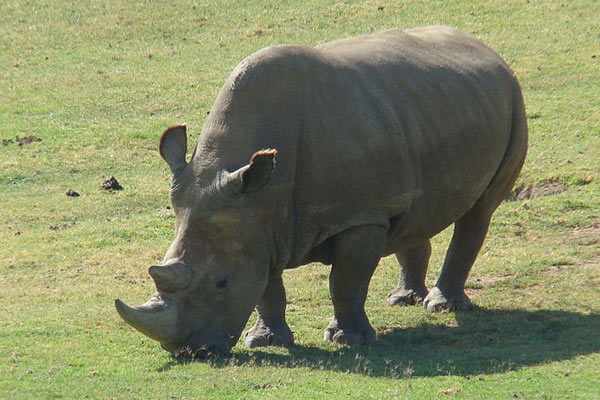 As if news for rhinos couldn’t get any worse: this weekend, Angalifu, died a the San Diego Zoo. Forty four-year-old Angalifu was a male northern white rhino (Ceratotherium simum cottoni) and his death means only five of this subspecies remains on the planet. Angalifu’s death, which keepers suspect was simply from old age, follows soon […]
As if news for rhinos couldn’t get any worse: this weekend, Angalifu, died a the San Diego Zoo. Forty four-year-old Angalifu was a male northern white rhino (Ceratotherium simum cottoni) and his death means only five of this subspecies remains on the planet. Angalifu’s death, which keepers suspect was simply from old age, follows soon […]
With death of rhino, only six northern white rhinos left on the planet
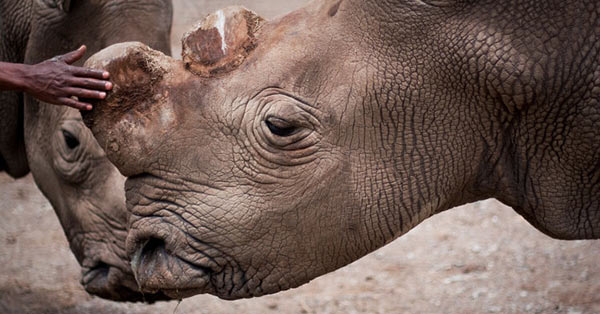 Rhino conservation suffered another tragic setback this weekend with the sudden death of Suni, a male northern white rhinoceros (Ceratotherium simum cottoni) at the Ol Pejeta Conservancy in Kenya. Suni’s passing means there are only six northern white rhinos left in the world, and only one breeding male. “Consequently the species now stands at the […]
Rhino conservation suffered another tragic setback this weekend with the sudden death of Suni, a male northern white rhinoceros (Ceratotherium simum cottoni) at the Ol Pejeta Conservancy in Kenya. Suni’s passing means there are only six northern white rhinos left in the world, and only one breeding male. “Consequently the species now stands at the […]
Ever heard of the hirola? New survey shows world’s rarest antelope holding steady
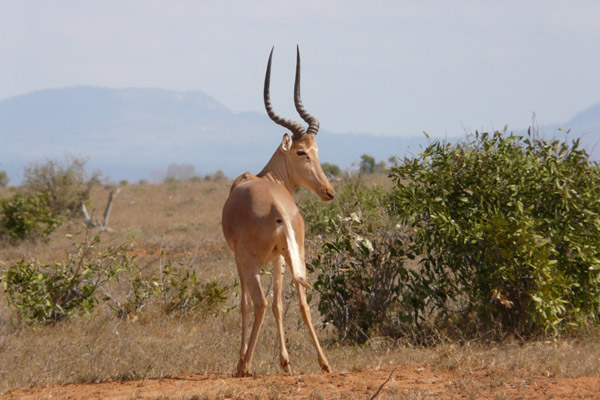 An hirola in Tsavo East National Park. Photo by: James Probert. In 2008 and 2009, severe droughts killed numerous elephants, hippos and rhinos in Kenya’s Tsavo East National Park. But the tiny population of the Critically Endangered Hunter’s hartebeest or hirola (Beatragus hunteri) survived without any catastrophic consequences, a recent study has found. “Hirola are […]
An hirola in Tsavo East National Park. Photo by: James Probert. In 2008 and 2009, severe droughts killed numerous elephants, hippos and rhinos in Kenya’s Tsavo East National Park. But the tiny population of the Critically Endangered Hunter’s hartebeest or hirola (Beatragus hunteri) survived without any catastrophic consequences, a recent study has found. “Hirola are […]
The quiet zoo revolution
 How the world’s best zoos are working to save biodiversity in an age of extinction. Tiger meets human at the Minnesota Zoo. Physical spaces where people can easily encounter and connect with wild species, zoos and aquariums are unique institutions. Yet in an age of environmental crises, are they doing enough to save species from […]
How the world’s best zoos are working to save biodiversity in an age of extinction. Tiger meets human at the Minnesota Zoo. Physical spaces where people can easily encounter and connect with wild species, zoos and aquariums are unique institutions. Yet in an age of environmental crises, are they doing enough to save species from […]
Scientists release odd-looking, Critically Endangered crocodiles back into the wild (PHOTOS)
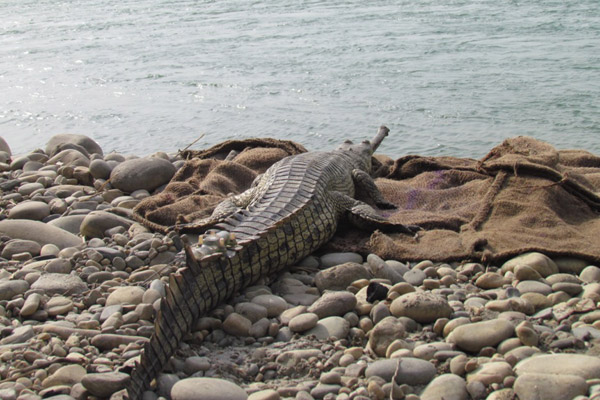 Among the largest and most endangered crocodilians in the world, the gharial (Gavialis gangeticus) is on the verge of extinction today. This harmless fish-eating crocodile has fewer than 200 adult breeding individuals in the wild, their numbers having plummeted rapidly over the past few decades due to destruction of their riverine habitats, entanglement in fishing […]
Among the largest and most endangered crocodilians in the world, the gharial (Gavialis gangeticus) is on the verge of extinction today. This harmless fish-eating crocodile has fewer than 200 adult breeding individuals in the wild, their numbers having plummeted rapidly over the past few decades due to destruction of their riverine habitats, entanglement in fishing […]
Riddled with tumors: another blow to the Sumatran rhino species
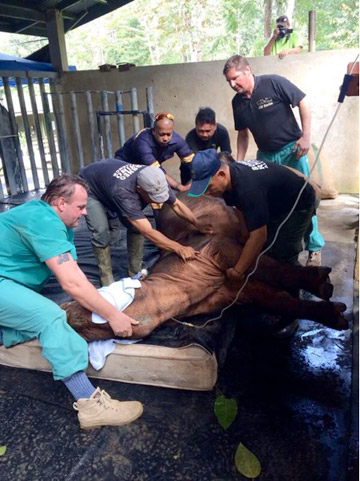 Conservation for Sumatran rhinos suffered another blow last week, only days after Suci—one of only ten rhinos in captive breeding efforts—died at Cincinnati Zoo. Scientists in the Malaysian state of Sabah revealed that a newly captured female, Iman, suffers from an assortment of tumors in her uterus, hugely complicating reproduction efforts. Conservationists believe less than […]
Conservation for Sumatran rhinos suffered another blow last week, only days after Suci—one of only ten rhinos in captive breeding efforts—died at Cincinnati Zoo. Scientists in the Malaysian state of Sabah revealed that a newly captured female, Iman, suffers from an assortment of tumors in her uterus, hugely complicating reproduction efforts. Conservationists believe less than […]
Death of young Sumatran rhino shouldn’t discourage captive breeding efforts say conservationists
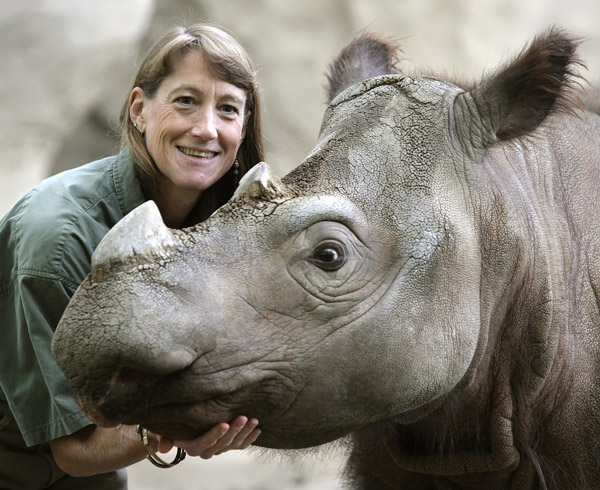 Just over two weeks ago, conservationists in the Malaysian state of Sabah managed to finally catch a wild Sumatran rhino female after months of failed attempts; the female, named Iman, was quickly helicoptered to a semi-wild rhino reserve in hopes that she may breed with the resident male, Tam. But following such hopeful events, comes […]
Just over two weeks ago, conservationists in the Malaysian state of Sabah managed to finally catch a wild Sumatran rhino female after months of failed attempts; the female, named Iman, was quickly helicoptered to a semi-wild rhino reserve in hopes that she may breed with the resident male, Tam. But following such hopeful events, comes […]
Meet Iman: the Sumatran rhino’s newest hope for survival
 Iman wallowing in the mud. Photo by: John Payne/BORA. Hopes for one of the world’s most imperiled megafauna rose this month when wildlife conservationists succeeded in catching a female Sumatran rhino named Iman in the Malaysian state of Sabah. The female, which experts believe to be fertile, has since been successfully transferred via helicopter to […]
Iman wallowing in the mud. Photo by: John Payne/BORA. Hopes for one of the world’s most imperiled megafauna rose this month when wildlife conservationists succeeded in catching a female Sumatran rhino named Iman in the Malaysian state of Sabah. The female, which experts believe to be fertile, has since been successfully transferred via helicopter to […]
Conservationists catch wild Sumatran rhino, raising hope for world’s most endangered rhinoceros
 Conservationists have succeeded in catching a wild Sumatran rhino in the Malaysia state of Sabah in Borneo, according to local media reports. Officials are currently transferring the rhino, an unnamed female, to a rhino sanctuary in Tabin National Park where experts will attempt to mate her with the resident male, Tam. The Sumatran rhino (Dicerorhinus […]
Conservationists have succeeded in catching a wild Sumatran rhino in the Malaysia state of Sabah in Borneo, according to local media reports. Officials are currently transferring the rhino, an unnamed female, to a rhino sanctuary in Tabin National Park where experts will attempt to mate her with the resident male, Tam. The Sumatran rhino (Dicerorhinus […]
Requiem or recovery?: the Sumatran rhino 200 years after its description

Conservation Hail Mary works: Mate for near-extinct fish found!
 Mangarahara cichlid (Ptychochromis Insolitus). (c) ZSL Researchers are celebrating after an urgent global search turned up a female mate for a fish that is on the brink of extinction. In May, aquarists at ZSL London Zoo launched a worldwide appeal to find a female Mangarahara cichlid (Ptychochromis Insolitus), a fish that was feared to be […]
Mangarahara cichlid (Ptychochromis Insolitus). (c) ZSL Researchers are celebrating after an urgent global search turned up a female mate for a fish that is on the brink of extinction. In May, aquarists at ZSL London Zoo launched a worldwide appeal to find a female Mangarahara cichlid (Ptychochromis Insolitus), a fish that was feared to be […]
Reversing local extinction: scientists bring the northern bald ibis back to Europe after 300 years
 The unmistakable northern bald ibis (Geronticus eremita). Photo by: Waldrappteam. The northern bald ibis (Geronticus eremita), also called the hermit ibis or waldrapp, is a migratory bird. Once, the bald ibis lived in the Middle East, northern Africa and southern and central Europe, but due to hunting, loss of habitat and pesticide-use, the birds disappeared […]
The unmistakable northern bald ibis (Geronticus eremita). Photo by: Waldrappteam. The northern bald ibis (Geronticus eremita), also called the hermit ibis or waldrapp, is a migratory bird. Once, the bald ibis lived in the Middle East, northern Africa and southern and central Europe, but due to hunting, loss of habitat and pesticide-use, the birds disappeared […]
Attempt to export nearly-extinct pygmy sloths sets off international incident in Panama
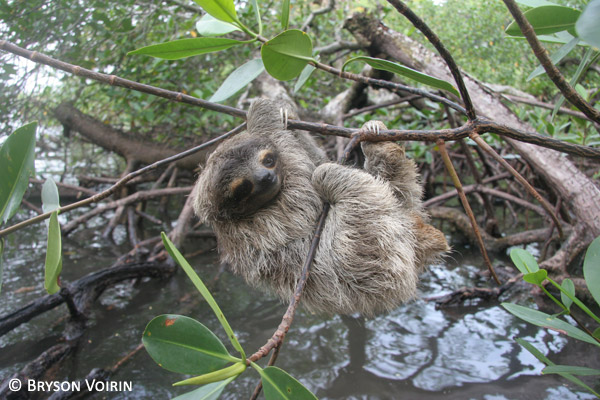 After this story was published, Dallas World Aquarium (DWA) complained that its side of the story had not been fairly represented, that elements of our reporting contained inaccuracies and made legal threats against Mongabay. As a result of the new input we have added a series of annotations, correcting several points and adding DWA’s views. […]
After this story was published, Dallas World Aquarium (DWA) complained that its side of the story had not been fairly represented, that elements of our reporting contained inaccuracies and made legal threats against Mongabay. As a result of the new input we have added a series of annotations, correcting several points and adding DWA’s views. […]
Illegally captured parrots finally free to fly
 In 2010, Bulgarian airport authorities confiscated 108 African grey parrots (Psittacus erithacus) from a smuggler. Last month, the 28 parrots who survived the stress of being stuffed into dog kennels, constantly handled by humans, and the absence of their native habitat, completed their three-year journey to freedom. The journey began late one afternoon in 2010, […]
In 2010, Bulgarian airport authorities confiscated 108 African grey parrots (Psittacus erithacus) from a smuggler. Last month, the 28 parrots who survived the stress of being stuffed into dog kennels, constantly handled by humans, and the absence of their native habitat, completed their three-year journey to freedom. The journey began late one afternoon in 2010, […]
Zoo races to save extreme butterfly from extinction
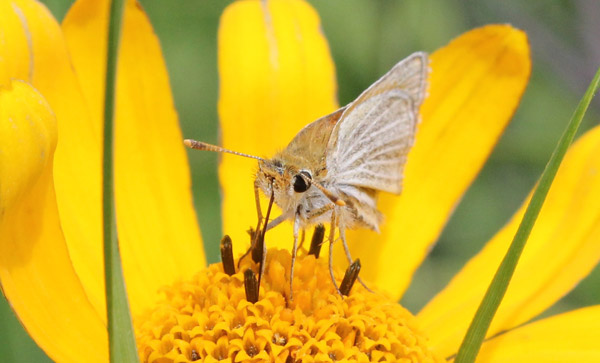 In a large room that used to house aquatic mammals at the Minnesota Zoo, Erik Runquist holds up a vial and says, “Here are its eggs.” I peer inside and see small specks, pale with a dot of brown at the top; they look like a single grain of cous cous or quinoa. Runquist explains […]
In a large room that used to house aquatic mammals at the Minnesota Zoo, Erik Runquist holds up a vial and says, “Here are its eggs.” I peer inside and see small specks, pale with a dot of brown at the top; they look like a single grain of cous cous or quinoa. Runquist explains […]
The comeback kids: the role of zoos in saving species from oblivion (photos)
.600.jpg) The 2013 Zoos and Aquariums: Committing to Conservation (ZACC) conference runs from July 8th – July 12th in Des Moines, Iowa, hosted by the Blank Park Zoo. Ahead of the event, Mongabay.com is running a series of Q&As with presenters. For more interviews, please see our ZACC feed. Red wolf: after going extinct in the […]
The 2013 Zoos and Aquariums: Committing to Conservation (ZACC) conference runs from July 8th – July 12th in Des Moines, Iowa, hosted by the Blank Park Zoo. Ahead of the event, Mongabay.com is running a series of Q&As with presenters. For more interviews, please see our ZACC feed. Red wolf: after going extinct in the […]
Rhino populations in Sumatra, Borneo should be combined to save Sumatran rhino from extinction
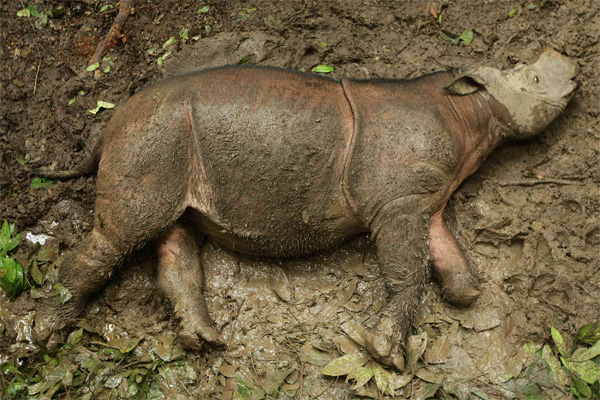 A new study argues for treating endangered Sumatran populations in Borneo and Sumatra as “a single conservation unit”, lending academic support to a controversial proposal to move wild rhinos from Malaysia to Indonesia. The paper, authored by an international team of rhino experts and published in the journal Oryx, says that genetic differences between the […]
A new study argues for treating endangered Sumatran populations in Borneo and Sumatra as “a single conservation unit”, lending academic support to a controversial proposal to move wild rhinos from Malaysia to Indonesia. The paper, authored by an international team of rhino experts and published in the journal Oryx, says that genetic differences between the […]
Aquarium launches desperate search to save a species down to 3 individuals
 Aquarists at ZSL London Zoo have launched a worldwide appeal to find a female mate for a fish species that is believed to have gone extinct in the wild. The fish, Mangarahara cichlid (Ptychochromis Insolitus), was once found in the Mangarahara River in Madagascar, but dams have dried up its habitat. The last two known […]
Aquarists at ZSL London Zoo have launched a worldwide appeal to find a female mate for a fish species that is believed to have gone extinct in the wild. The fish, Mangarahara cichlid (Ptychochromis Insolitus), was once found in the Mangarahara River in Madagascar, but dams have dried up its habitat. The last two known […]
World’s rarest duck on the rebound in Madagascar
 After a final sighting in 1991, the Madagascar pochard was thought to have vanished for good. But this diving duck was rediscovered in 2006 when a flock of 22 individuals was found on Lake Matsaborimena in northern Madagascar by conservationists during an expedition. Soon after Madagascar pochard eggs were taken and incubated in a joint […]
After a final sighting in 1991, the Madagascar pochard was thought to have vanished for good. But this diving duck was rediscovered in 2006 when a flock of 22 individuals was found on Lake Matsaborimena in northern Madagascar by conservationists during an expedition. Soon after Madagascar pochard eggs were taken and incubated in a joint […]
Malaysia may loan Indonesia rhinos to save species from extinction
 Conservationists and officials meeting last month at a rhino crisis summit in Singapore agreed to a radical plan to loan Sumatran rhinos between nations if it means saving the critically endangered species from extinction. The proposal, which could still be thwarted by red tape and political opposition, could lead Malaysia to send some of its […]
Conservationists and officials meeting last month at a rhino crisis summit in Singapore agreed to a radical plan to loan Sumatran rhinos between nations if it means saving the critically endangered species from extinction. The proposal, which could still be thwarted by red tape and political opposition, could lead Malaysia to send some of its […]
How many animals do we need to keep extinction at bay?
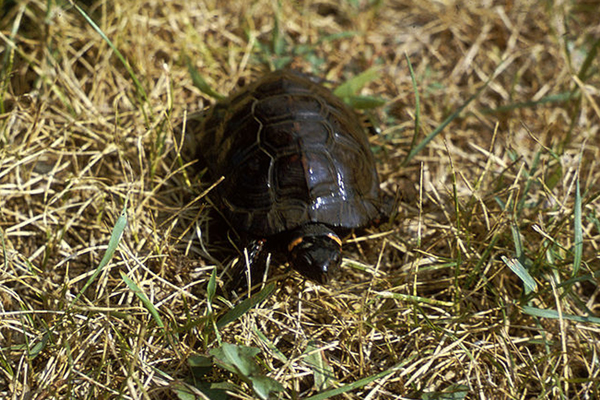 How many animal individuals are needed to ensure a species isn’t doomed to extinction even with our best conservation efforts? While no one knows exactly, scientists have created complex models to attempt an answer. They call this important threshold the “minimum viable population” and have spilled plenty of ink trying to decipher estimates, many of […]
How many animal individuals are needed to ensure a species isn’t doomed to extinction even with our best conservation efforts? While no one knows exactly, scientists have created complex models to attempt an answer. They call this important threshold the “minimum viable population” and have spilled plenty of ink trying to decipher estimates, many of […]
Sumatran rhino population plunges, down to 100 animals
 Less than 100 Sumatran rhinos survive in the world today, according to a bleak new population estimate by experts. The last survey in 2008 estimated that around 250 Sumatran rhinos survived, but that estimate now appears optimistic and has been slashed by 60 percent. However conservationists are responding with a major new agreement between the […]
Less than 100 Sumatran rhinos survive in the world today, according to a bleak new population estimate by experts. The last survey in 2008 estimated that around 250 Sumatran rhinos survived, but that estimate now appears optimistic and has been slashed by 60 percent. However conservationists are responding with a major new agreement between the […]
Forging zoos into global conservation centers, an interview with Cristian Samper, head of WCS
 For the Wildlife Conservation Society’s new CEO, scientific principles and working partnerships are key to conservation. A Man of Science: Dr Cristian Samper, CEO of the WCS. The Wildlife Conservation Society (WCS) is one of the world’s leading environmental organizations. Founded in 1895 (originally as the New York Zoological Society), the WCS manages 200 million […]
For the Wildlife Conservation Society’s new CEO, scientific principles and working partnerships are key to conservation. A Man of Science: Dr Cristian Samper, CEO of the WCS. The Wildlife Conservation Society (WCS) is one of the world’s leading environmental organizations. Founded in 1895 (originally as the New York Zoological Society), the WCS manages 200 million […]
Scientists successfully freeze Barbary sheep embryos for conservation purposes
 Barbary sheep in Tennoji Zoo. Photo by: Kuribo. The Barbary sheep (Ammotragus lervia), or aoudad, is a goat-antelope found in northern Africa. It is currently listed as Vulnerable by the IUCN Red List, with populations imperiled by hunting, habitat loss, and competition with livestock. Still little is known about its remaining population, prompting scientists in […]
Barbary sheep in Tennoji Zoo. Photo by: Kuribo. The Barbary sheep (Ammotragus lervia), or aoudad, is a goat-antelope found in northern Africa. It is currently listed as Vulnerable by the IUCN Red List, with populations imperiled by hunting, habitat loss, and competition with livestock. Still little is known about its remaining population, prompting scientists in […]
Scientists clone extinct frog that births young from its mouth
 Australian scientists have produced cloned embryos of an extinct species of frog known for its strange reproductive behavior, reports the University of New South Wales. The amphibian, the gastric-brooding frog (Rheobatrachus silus), one of only two species that swallowed its eggs, brooded the young in its stomach, and gave birth through its mouth. But it […]
Australian scientists have produced cloned embryos of an extinct species of frog known for its strange reproductive behavior, reports the University of New South Wales. The amphibian, the gastric-brooding frog (Rheobatrachus silus), one of only two species that swallowed its eggs, brooded the young in its stomach, and gave birth through its mouth. But it […]
Pity the pangolin: little-known mammal most common victim of the wildlife trade
 World Pangolin Day is celebrated this weekend: Saturday, February 16th, 2013 Last year tens-of-thousands of elephants and hundreds of rhinos were butchered to feed the growing appetite of the illegal wildlife trade. This black market, largely centered in East Asia, also devoured tigers, sharks, leopards, turtles, snakes, and hundreds of other animals. Estimated at $19 […]
World Pangolin Day is celebrated this weekend: Saturday, February 16th, 2013 Last year tens-of-thousands of elephants and hundreds of rhinos were butchered to feed the growing appetite of the illegal wildlife trade. This black market, largely centered in East Asia, also devoured tigers, sharks, leopards, turtles, snakes, and hundreds of other animals. Estimated at $19 […]
Geneticists discover distinct lion group in squalid conditions
 Behind bars and waiting for science: the power of genetic testing for the Addis Fifteen. Male and female Addis lions in the Addis Ababa Lion Zoo. Photo courtesy of: Klaus Eulenberger. They languished behind bars in squalid conditions, their very survival in jeopardy. Outside, an international team of advocates strove to bring worldwide attention to […]
Behind bars and waiting for science: the power of genetic testing for the Addis Fifteen. Male and female Addis lions in the Addis Ababa Lion Zoo. Photo courtesy of: Klaus Eulenberger. They languished behind bars in squalid conditions, their very survival in jeopardy. Outside, an international team of advocates strove to bring worldwide attention to […]
Photos: one of the world’s rarest turtles hatches at the Bronx Zoo
 Chinese Yellow-headed Box Turtle. Photo by Julie Larsen Maher of WCS Turtle conservationists received some good news this week when five critically endangered Chinese yellow-headed box turtles hatched at Wildlife Conservation Society’s Bronx Zoo. The breeding program is part of WCS’s conservation initiative that targets half the world’s 25 most critically endangered turtle species. With […]
Chinese Yellow-headed Box Turtle. Photo by Julie Larsen Maher of WCS Turtle conservationists received some good news this week when five critically endangered Chinese yellow-headed box turtles hatched at Wildlife Conservation Society’s Bronx Zoo. The breeding program is part of WCS’s conservation initiative that targets half the world’s 25 most critically endangered turtle species. With […]
Photos of flooded New York Aquarium released
 Jon Forrest Dohlin, director of the WCS New York Aquarium, surveying a sea lion exhibit while walking through flood waters. Photo by Julie Larsen Maher of WCS The Wildlife Conservation Society (WCS) today released pictures showing damage caused earlier this week at the New York Aquarium by Hurricane Sandy. The photos show extensive flooding in […]
Jon Forrest Dohlin, director of the WCS New York Aquarium, surveying a sea lion exhibit while walking through flood waters. Photo by Julie Larsen Maher of WCS The Wildlife Conservation Society (WCS) today released pictures showing damage caused earlier this week at the New York Aquarium by Hurricane Sandy. The photos show extensive flooding in […]
Artificial ‘misting system’ allows vanished toad to be released back into the wild
 A captive Kihansi spray toad at the WCS Bronx Zoo. Photo by: Rhett A. Butler. In 1996 scientists discovered a new species of dwarf toad: the Kihansi spray toad (Nectophrynoides asperginis). Although surviving on only two hectares near the Kihansi Gorge in Tanzania, the toads proved populous: around 17,000 individuals crowded the smallest known habitat […]
A captive Kihansi spray toad at the WCS Bronx Zoo. Photo by: Rhett A. Butler. In 1996 scientists discovered a new species of dwarf toad: the Kihansi spray toad (Nectophrynoides asperginis). Although surviving on only two hectares near the Kihansi Gorge in Tanzania, the toads proved populous: around 17,000 individuals crowded the smallest known habitat […]
New York Aquarium entirely ‘underwater’
 Update: New York Aquarium closed indefinitely The WCS New York Aquarium sits on the boardwalk of Coney Island. Photo by: David Shankbone. Hurricane Sandy, which brought storm surges that reportedly reached 14 feet to New York City, has put the Wildlife Conservation Society’s New York Aquarium “under water,” according to a statement from the organization. […]
Update: New York Aquarium closed indefinitely The WCS New York Aquarium sits on the boardwalk of Coney Island. Photo by: David Shankbone. Hurricane Sandy, which brought storm surges that reportedly reached 14 feet to New York City, has put the Wildlife Conservation Society’s New York Aquarium “under water,” according to a statement from the organization. […]
Remarkable comeback: blue iguana downgraded to Endangered after determined conservation efforts
 Blue iguana in Queen Elizabeth II Botanic Park. Photo by: Lhb1239. The wild blue iguana population has increased by at least 15 times in the last ten years, prompting the IUCN Red List to move the species from Critically Endangered to just Endangered. A targeted, ambitious conservation program, headed by the Blue Iguana Recovery Team, […]
Blue iguana in Queen Elizabeth II Botanic Park. Photo by: Lhb1239. The wild blue iguana population has increased by at least 15 times in the last ten years, prompting the IUCN Red List to move the species from Critically Endangered to just Endangered. A targeted, ambitious conservation program, headed by the Blue Iguana Recovery Team, […]
Cute animal picture of the day: baby pygmy hippo
 Eight week old pygmy hippo calf, Georgina, born at Zoological Society of London (ZSL) Whipsnade Zoo. Photo courtesy of ZSL Whipsnade Zoo. A new pygmy hippo calf has been born at the Zoological Society of London (ZSL) Whipsnade Zoo. Named Georgina, the calf is the second for parents Flora and Tapon. Found in the rainforests […]
Eight week old pygmy hippo calf, Georgina, born at Zoological Society of London (ZSL) Whipsnade Zoo. Photo courtesy of ZSL Whipsnade Zoo. A new pygmy hippo calf has been born at the Zoological Society of London (ZSL) Whipsnade Zoo. Named Georgina, the calf is the second for parents Flora and Tapon. Found in the rainforests […]
Picture of the day: baby Grevy’s zebra
 Three-week old Grevy’s zebra at the Zoological Society of London’s (ZSL) Whipsnade Zoo. Photo by: ZSL. Not only is the Grevy’s zebra (Equus grevyi) the biggest of the three zebra species, it is also the world’s largest wild horse species. Once roaming throughout the horn of Africa, today the species is confined to a few […]
Three-week old Grevy’s zebra at the Zoological Society of London’s (ZSL) Whipsnade Zoo. Photo by: ZSL. Not only is the Grevy’s zebra (Equus grevyi) the biggest of the three zebra species, it is also the world’s largest wild horse species. Once roaming throughout the horn of Africa, today the species is confined to a few […]
Animal picture of the day: Critically Endangered macaws
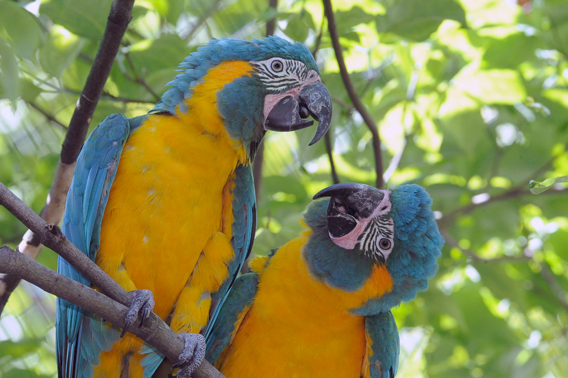 Two blue-throated macaws perch on a branch in the historic aviary at the Wildlife Conservation Society’s Queens Zoo. Photo by: Julie Larsen Maher. Found in only one location in northern Bolivia, the blue-throated macaw (Ara glaucogularis) is thought to number little more than 100 individuals in the wild. However the species is protected from utter […]
Two blue-throated macaws perch on a branch in the historic aviary at the Wildlife Conservation Society’s Queens Zoo. Photo by: Julie Larsen Maher. Found in only one location in northern Bolivia, the blue-throated macaw (Ara glaucogularis) is thought to number little more than 100 individuals in the wild. However the species is protected from utter […]
Featured video: a Sumatran rhino love story
Efforts to save the Sumatran rhino in Borneo have sped up ever since the capture of Puntung last Christmas. A female rhino, who lost one foot to a snare, Puntung represents the first viable mate for Tam, a male rhino who has been kept in a large rainforest enclosure since his rescue in an oil […]
Animal pictures of the day: booming captive breeding for Mauritius skinks
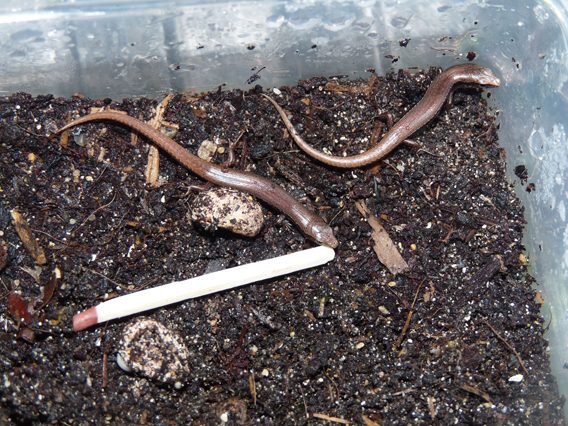 Orange-tailed skink hatchlings meet their match in a matchstick. Photo courtesy of the Durrell Wildlife Conservation Trust (DWCT). Three female orange-tailed skinks skinks have produced 16 skink babies in just four months, according to the Durrell Wildlife Conservation Trust (DWCT), which is captive breeding the Critically Endangered species. The breeding efforts are all the more […]
Orange-tailed skink hatchlings meet their match in a matchstick. Photo courtesy of the Durrell Wildlife Conservation Trust (DWCT). Three female orange-tailed skinks skinks have produced 16 skink babies in just four months, according to the Durrell Wildlife Conservation Trust (DWCT), which is captive breeding the Critically Endangered species. The breeding efforts are all the more […]
Cute animal picture of the day: African penguin chick
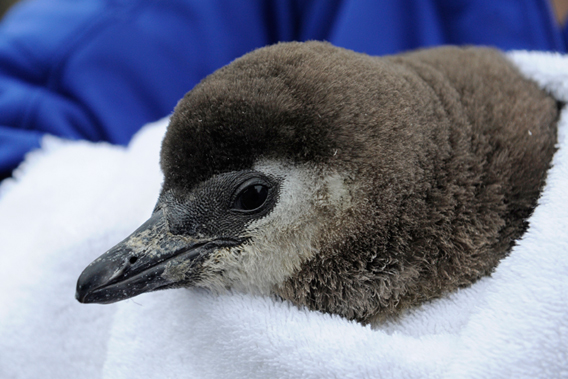 This African penguin chick is the first one to be born at the Wildlife Conservation Society’s (WCS) New York Aquarium in 15 years. Photo by: Julie Larsen Maher. Found along the coast of southern Africa, the African penguin (Spheniscus demersus) is listed as Endangered by the IUCN Red List largely due to overfishing, which is […]
This African penguin chick is the first one to be born at the Wildlife Conservation Society’s (WCS) New York Aquarium in 15 years. Photo by: Julie Larsen Maher. Found along the coast of southern Africa, the African penguin (Spheniscus demersus) is listed as Endangered by the IUCN Red List largely due to overfishing, which is […]
Cute animal picture of the day: baby bamboo lemur
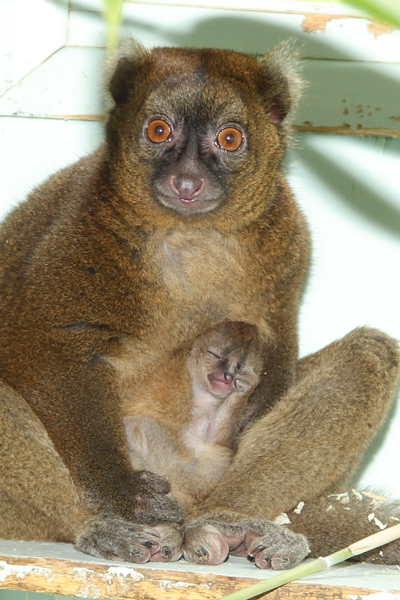 A newborn greater bamboo lemur baby at the Port Lympne Wild Animal Park. Photo by: Dave Rolfe. Greater bamboo lemurs (Prolemur simus) are one of over a hundred lemur species found only on the island of Madagascar. Listed as Critically Endangered, there are only around 150 individuals known in the wild, making them one of […]
A newborn greater bamboo lemur baby at the Port Lympne Wild Animal Park. Photo by: Dave Rolfe. Greater bamboo lemurs (Prolemur simus) are one of over a hundred lemur species found only on the island of Madagascar. Listed as Critically Endangered, there are only around 150 individuals known in the wild, making them one of […]
Cute animal picture of the day: stranded sea lion finds new home
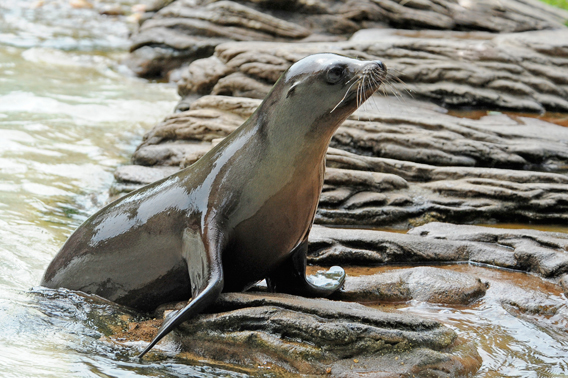 This young California sea lion was saved after stranding herself one too many times. Photo by: Julie Larsen Maher. A young female California sea lion (Zalophus californianus), who had stranded herself three times, has found a new home at the Bronx Zoo. After her most recent escapade of showing up at a beachside bar in […]
This young California sea lion was saved after stranding herself one too many times. Photo by: Julie Larsen Maher. A young female California sea lion (Zalophus californianus), who had stranded herself three times, has found a new home at the Bronx Zoo. After her most recent escapade of showing up at a beachside bar in […]
New Sumatran rhino mama filmed giving birth and nursing
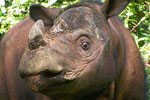 On early Saturday morning, scientists were elated when first-time Sumatran rhino mother, Ratu, gave birth to a healthy male calf. The birth was filmed with footage also taken of the little tike—with massive eyes—nursing (see videos below). The new calf gives hope to a species on the very brink of extinction. “We are overjoyed that […]
On early Saturday morning, scientists were elated when first-time Sumatran rhino mother, Ratu, gave birth to a healthy male calf. The birth was filmed with footage also taken of the little tike—with massive eyes—nursing (see videos below). The new calf gives hope to a species on the very brink of extinction. “We are overjoyed that […]
Cute animal picture of the day: moose twins
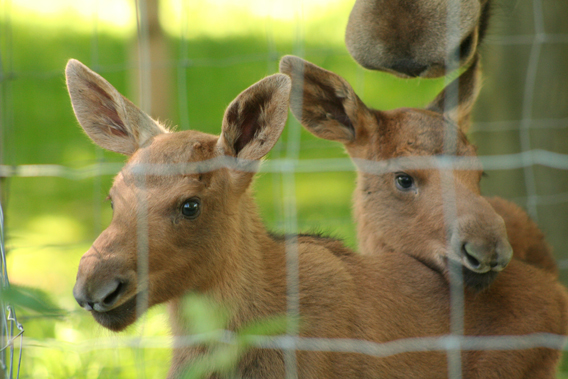 Moose twins born at the ZSL Whipsnade Zoo. Photo by: ZSL Whipsnade Zoo. On May 21st, two Eurasian moose twins (Alces alces) were born at the Zoological Society of London’s (ZSL) Whipsnade Zoo. The twins were named Toffee and Caramel. Moose, also known as elk in Europe, are the world’s largest deer. They span the […]
Moose twins born at the ZSL Whipsnade Zoo. Photo by: ZSL Whipsnade Zoo. On May 21st, two Eurasian moose twins (Alces alces) were born at the Zoological Society of London’s (ZSL) Whipsnade Zoo. The twins were named Toffee and Caramel. Moose, also known as elk in Europe, are the world’s largest deer. They span the […]
Historic birth for the Sumatran rhino
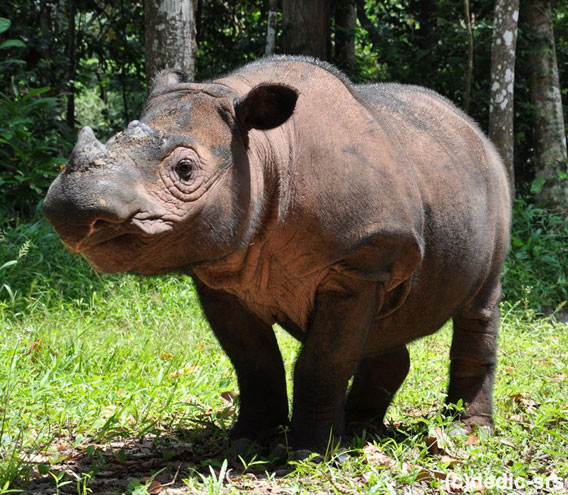 Ratu (above) and the baby male are doing well. Photo by: International Rhino Foundation. After two miscarriages and a pregnancy that lasted 15 months, Ratu, a female Sumatra rhino, has given birth to a healthy male calf, conservationists happily announced this weekend. The birth at a rhino sanctuary in Way Kambas National Park in Sumatra […]
Ratu (above) and the baby male are doing well. Photo by: International Rhino Foundation. After two miscarriages and a pregnancy that lasted 15 months, Ratu, a female Sumatra rhino, has given birth to a healthy male calf, conservationists happily announced this weekend. The birth at a rhino sanctuary in Way Kambas National Park in Sumatra […]
Forgotten Species: the wonder-inducing giant clam
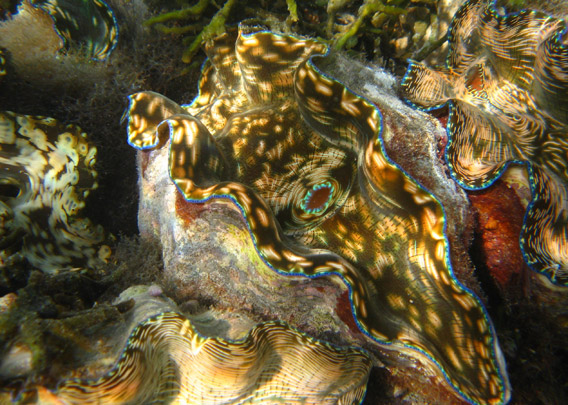 Everyone knows the tiger, the panda, the blue whale, but what about the other five to thirty million species estimated to inhabit our Earth? Many of these marvelous, stunning, and rare species have received little attention from the media, conservation groups, and the public. This series is an attempt to give these ‘forgotten species‘ some […]
Everyone knows the tiger, the panda, the blue whale, but what about the other five to thirty million species estimated to inhabit our Earth? Many of these marvelous, stunning, and rare species have received little attention from the media, conservation groups, and the public. This series is an attempt to give these ‘forgotten species‘ some […]
Island bat goes extinct after Australian officials hesitate
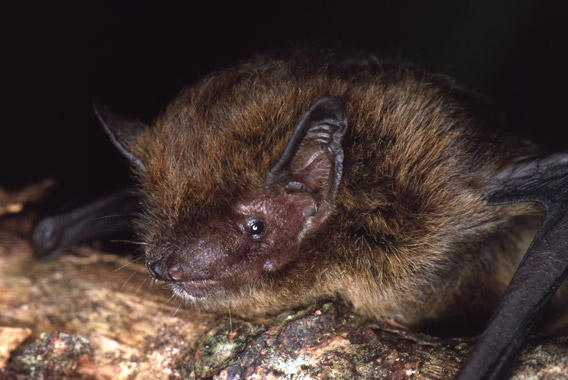 Now extinct: the Christmas Island pipistrelle. Photo by: Lindy Lumsden. Nights on Christmas Island in the Indian Ocean will never again be the same. The last echolocation call of a tiny bat native to the island, the Christmas Island pipistrelle (Pipistrellus murrayi), was recorded on August 26th 2009, and since then there has been only […]
Now extinct: the Christmas Island pipistrelle. Photo by: Lindy Lumsden. Nights on Christmas Island in the Indian Ocean will never again be the same. The last echolocation call of a tiny bat native to the island, the Christmas Island pipistrelle (Pipistrellus murrayi), was recorded on August 26th 2009, and since then there has been only […]
Hail Mary effort aims to save the world’s most endangered turtles
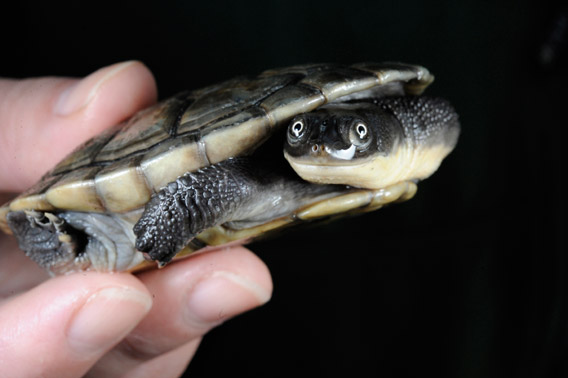 Roti snake island turtle, which is number 12 of the world’s most endangered turtles, are being captive bred at the WCS’s Bronx Zoo. Photo by: Julie Larsen Maher/WCS. The Wildlife Conservation Society (WCS) has pledged to work with all of its institutions to save at least half of the world’s most 25 endangered turtles as […]
Roti snake island turtle, which is number 12 of the world’s most endangered turtles, are being captive bred at the WCS’s Bronx Zoo. Photo by: Julie Larsen Maher/WCS. The Wildlife Conservation Society (WCS) has pledged to work with all of its institutions to save at least half of the world’s most 25 endangered turtles as […]
How a crippled rhino may save a species
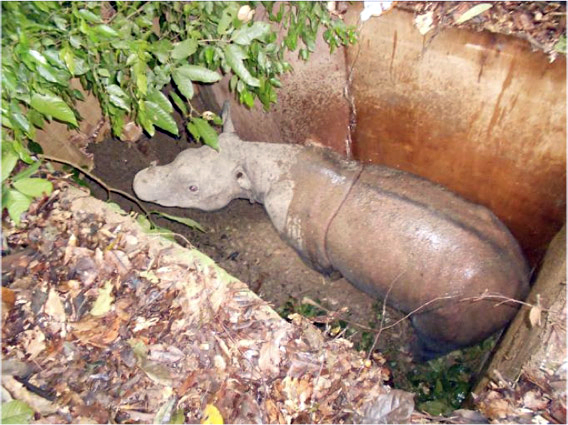 An interview with John Payne Puntung, a female Sumatran rhino, is captured safely in a pit trap after years of monitoring and planning in Malaysian Borneo. Photo by: Dr Zainal Zahari Zainuddin/BORA. On December 18th, 2011, a female Sumatran rhino took a sudden plunge. Falling into a manmade pit trap, the rhino may have feared […]
An interview with John Payne Puntung, a female Sumatran rhino, is captured safely in a pit trap after years of monitoring and planning in Malaysian Borneo. Photo by: Dr Zainal Zahari Zainuddin/BORA. On December 18th, 2011, a female Sumatran rhino took a sudden plunge. Falling into a manmade pit trap, the rhino may have feared […]
Cute animal picture of the day: endangered baby giraffe
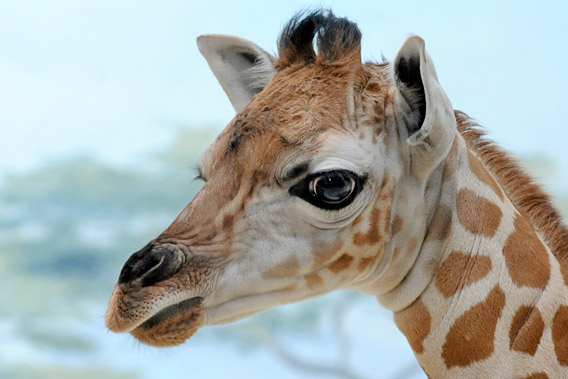 The baby giraffe was born at 6 feet tall and weighing in at around 100 pounds. Photo by: Julie Larsen Maher/WCS. A baby Rothschild’s giraffe (Giraffa camelopardalis rothschildi) was recently born at the Wildlife Conservation Society’s (WCS) Bronx Zoo. The subspecies was classified as Endangered in 2010 with a wild population of less than 700 […]
The baby giraffe was born at 6 feet tall and weighing in at around 100 pounds. Photo by: Julie Larsen Maher/WCS. A baby Rothschild’s giraffe (Giraffa camelopardalis rothschildi) was recently born at the Wildlife Conservation Society’s (WCS) Bronx Zoo. The subspecies was classified as Endangered in 2010 with a wild population of less than 700 […]
Animal picture of the day: a baby bongo
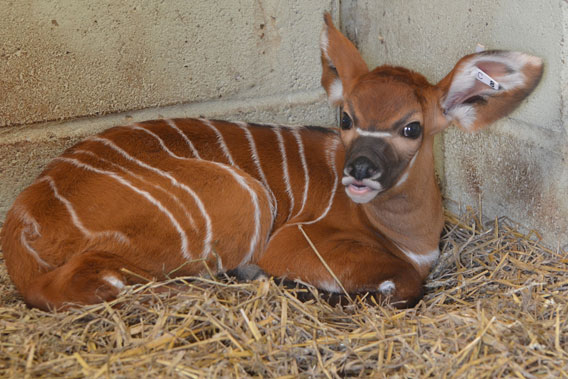 Baby bongo. Photo courtesy of ZSL Whipsande Zoo. A female bongo (Tragelaphus eurycerus) was born at the Zoological Society of London’s Whipsnade Zoo last month. “The calf and her mum are happy to sit with other members of the group and the calf is not always found with mum—babysitting is common with the bongo,” Mark […]
Baby bongo. Photo courtesy of ZSL Whipsande Zoo. A female bongo (Tragelaphus eurycerus) was born at the Zoological Society of London’s Whipsnade Zoo last month. “The calf and her mum are happy to sit with other members of the group and the calf is not always found with mum—babysitting is common with the bongo,” Mark […]
Animal photos of the day: elephants in the English countryside
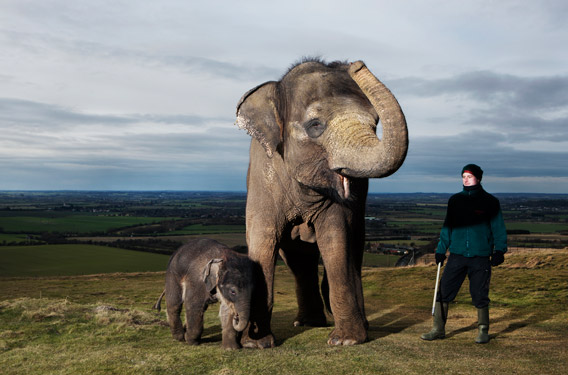 Calf scott and mother Azizah on their walkabout. Photo courtesy of ZSL Whipsnade Zoo. Elephants have been spotted roaming the pastoral fields of eastern England. Released for a jaunt from the Zoological Society of London’s Whipsnade Zoo, a herd of Asian elephants (Elephas maximus), including a four-month-old calf named Scott, took in the scenic views […]
Calf scott and mother Azizah on their walkabout. Photo courtesy of ZSL Whipsnade Zoo. Elephants have been spotted roaming the pastoral fields of eastern England. Released for a jaunt from the Zoological Society of London’s Whipsnade Zoo, a herd of Asian elephants (Elephas maximus), including a four-month-old calf named Scott, took in the scenic views […]
Cute baby animal photos of the day: baby pot-bellied seahorses
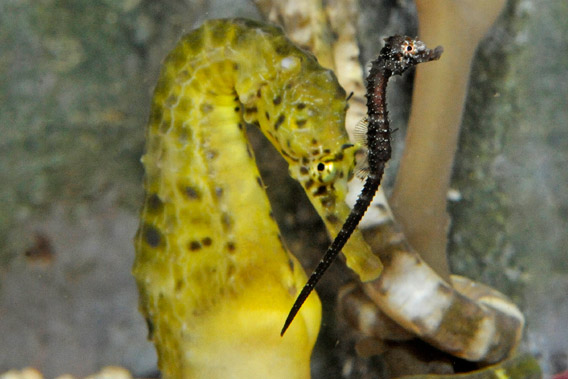 Pot-bellied seahorse: adult and baby. Babies, or fry, are brown black but turn yellow over time. Photo by: Julie Larsen Maher. The Wildlife Conservation Society’s (WCS) New York Aquarium has recently celebrated the arrival of “fry” (baby) pot-bellied seahorses (Hippocampus abdominalis). Found in the seas surrounding Australia, the pot-bellied seahorse is protected under CITES (Convention […]
Pot-bellied seahorse: adult and baby. Babies, or fry, are brown black but turn yellow over time. Photo by: Julie Larsen Maher. The Wildlife Conservation Society’s (WCS) New York Aquarium has recently celebrated the arrival of “fry” (baby) pot-bellied seahorses (Hippocampus abdominalis). Found in the seas surrounding Australia, the pot-bellied seahorse is protected under CITES (Convention […]
Cute baby animal photos of the day: twin Malagasy giant jumping rats born at London Zoo
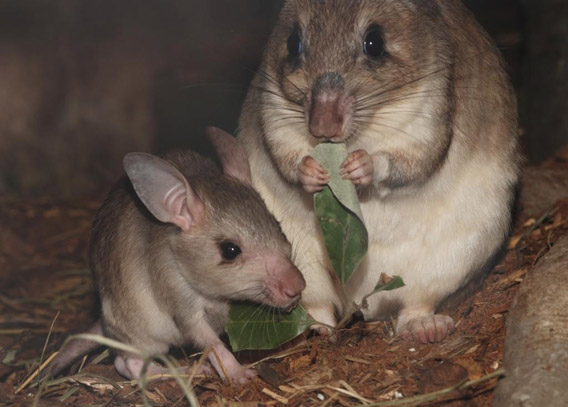 Mom and baby enjoy lunch. Malagasy giant jumping rats are born blind and hairless. Photo courtesy of ZSL. Twin Malagasy giant jumping rats (Hypogeomys antimena) were born in the Zoological Society of London’s (ZSL) zoo in London this month. Found only on the island of Madagascar, also home to the world’s lemurs, these rodents are […]
Mom and baby enjoy lunch. Malagasy giant jumping rats are born blind and hairless. Photo courtesy of ZSL. Twin Malagasy giant jumping rats (Hypogeomys antimena) were born in the Zoological Society of London’s (ZSL) zoo in London this month. Found only on the island of Madagascar, also home to the world’s lemurs, these rodents are […]
Wild orangutans to watch film about orangutans
 Orphaned Bornean orangutan in the Indonesian state of Kalimantan on the island of Borneo. Photo by: Rhett A. Butler. Born to be Wild 3D, an IMAX documentary in part about the plight of orphaned and injured Bornean orangutans (Pongo pygmaeus), will soon be aired in the rainforest that inspired it. Producer Drew Fellman is setting […]
Orphaned Bornean orangutan in the Indonesian state of Kalimantan on the island of Borneo. Photo by: Rhett A. Butler. Born to be Wild 3D, an IMAX documentary in part about the plight of orphaned and injured Bornean orangutans (Pongo pygmaeus), will soon be aired in the rainforest that inspired it. Producer Drew Fellman is setting […]
Celebrate frogs on leap day!
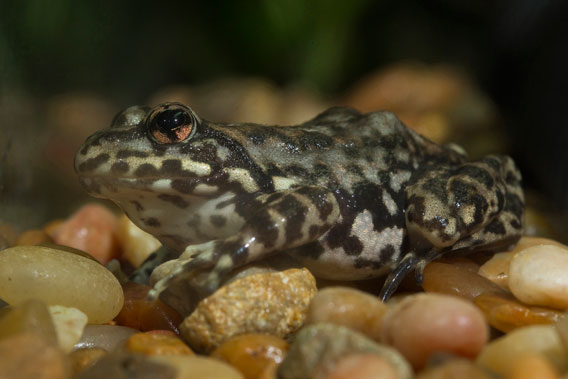 The San Diego Zoo Institute for Conservation Research in California, USA has been a partner in the recovery of the Southern California population of Mountain Yellow-legged Frogs, Rana muscosa, over the past five years and continues to make progress in captive breeding and reintroduction efforts of this endangered species. Photo: Ken Bohn, San Diego Zoo. […]
The San Diego Zoo Institute for Conservation Research in California, USA has been a partner in the recovery of the Southern California population of Mountain Yellow-legged Frogs, Rana muscosa, over the past five years and continues to make progress in captive breeding and reintroduction efforts of this endangered species. Photo: Ken Bohn, San Diego Zoo. […]
Sumatran rhino pregnant: conservationists hope third time’s the charm
 Conservationists hope Ratu, pictured above, has a successful third pregnancy. Photo by: International Rhino Foundation. Ratu, a female Sumatra rhino (Dicerorhinus sumatrensis), is in the eleventh month of her third pregnancy raising hopes for a successful birth of one of the world’s most imperiled big mammals. Ratu suffered two prior miscarriages, but researchers believe the […]
Conservationists hope Ratu, pictured above, has a successful third pregnancy. Photo by: International Rhino Foundation. Ratu, a female Sumatra rhino (Dicerorhinus sumatrensis), is in the eleventh month of her third pregnancy raising hopes for a successful birth of one of the world’s most imperiled big mammals. Ratu suffered two prior miscarriages, but researchers believe the […]
‘Christmas miracle’ for endangered rhinos
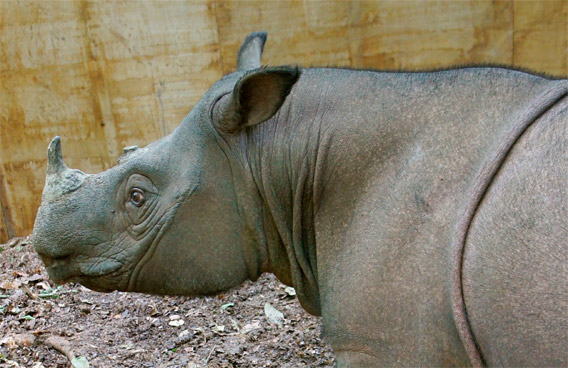 A close up of Puntung taken by Assoc. Prof. Abdul Hamid Ahmad, Chairman of BORA. Photo credit BORA/Abdul Hamid Ahmad. Conservationists and wildlife officials in the Malaysian state of Sabah airlifted a young female Sumatran Rhinoceros — one of the world’s most endangered animals — to an area of forest where she would encounter a […]
A close up of Puntung taken by Assoc. Prof. Abdul Hamid Ahmad, Chairman of BORA. Photo credit BORA/Abdul Hamid Ahmad. Conservationists and wildlife officials in the Malaysian state of Sabah airlifted a young female Sumatran Rhinoceros — one of the world’s most endangered animals — to an area of forest where she would encounter a […]
New large horned viper discovered, but biologists keep location quiet
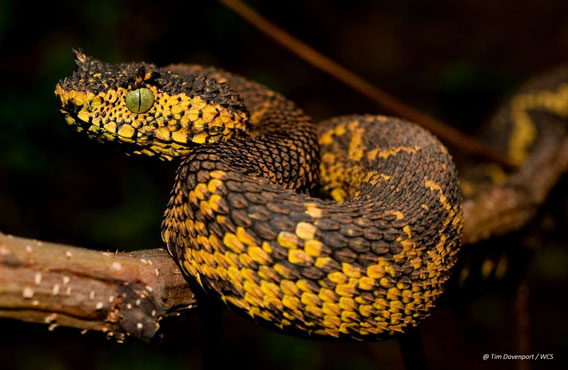 Matilda’s horned viper. Photo by: Tim Davenport. In a remote forest fragment in Tanzania, scientists have made a remarkable discovery: a uniquely-colored horned viper extending over two feet long (643 millimeters) that evolved from its closest relative over two million years ago. Unfortunately, however, the new species—named Matilda’s horned viper (Atheris matildae)—survives in a small […]
Matilda’s horned viper. Photo by: Tim Davenport. In a remote forest fragment in Tanzania, scientists have made a remarkable discovery: a uniquely-colored horned viper extending over two feet long (643 millimeters) that evolved from its closest relative over two million years ago. Unfortunately, however, the new species—named Matilda’s horned viper (Atheris matildae)—survives in a small […]
Interview with conservation legend George Schaller
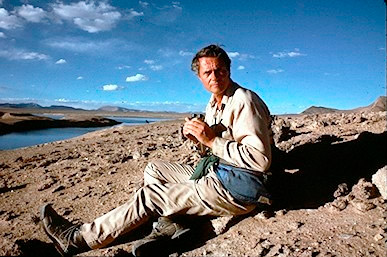 Dr George Schaller is a veteran ecologist affiliated with two conservation organizations in New York, Panthera and the Wildlife Conservation Society. Spending much of his time during the past six decades in various countries of Asia, Africa and South America, he has studied and helped protect species as diverse as the Tiger, Mountain Gorilla, Giant […]
Dr George Schaller is a veteran ecologist affiliated with two conservation organizations in New York, Panthera and the Wildlife Conservation Society. Spending much of his time during the past six decades in various countries of Asia, Africa and South America, he has studied and helped protect species as diverse as the Tiger, Mountain Gorilla, Giant […]
Featured video: saving baby orphaned sloths
The world’s only sloth sanctuary works to save orphaned and injured sloths in Costa Rica. A recent short film (below) by Lucy Cooke highlights a few of the stars of the sloth sanctuary. Cooke has a new hour long film debuting on Animal Planet on December 17th at 8 PM EST, following the adventures of […]
Effort to save world’s rarest frogs recognized with conservation award
 The Panamanian golden toad, a species now extinct in the wild, is being bred in a number of facilities around the world to ensure its survival. Photo by Rhett A. Butler. An effort to save the world’s most endangered amphibians has won mongabay.com’s 2011 conservation award. Amphibian Ark [Donate] — a joint effort of the […]
The Panamanian golden toad, a species now extinct in the wild, is being bred in a number of facilities around the world to ensure its survival. Photo by Rhett A. Butler. An effort to save the world’s most endangered amphibians has won mongabay.com’s 2011 conservation award. Amphibian Ark [Donate] — a joint effort of the […]
Picture of the day: Baby monkey clutching a teddy bear
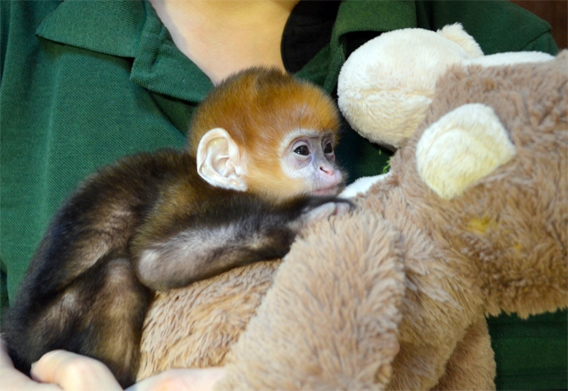 Baby Francois langur at ZSL A three-week-old Francois langur monkey that was rejected by its mother is now in the care of a zookeeper at the London Zoo, says the Zoological Society of London (ZSL). The endangered newborn, which measures a mere four inches in length, is now out of intensive care and is being […]
Baby Francois langur at ZSL A three-week-old Francois langur monkey that was rejected by its mother is now in the care of a zookeeper at the London Zoo, says the Zoological Society of London (ZSL). The endangered newborn, which measures a mere four inches in length, is now out of intensive care and is being […]
PHOTO: Adorable penguin chicks score their own blog
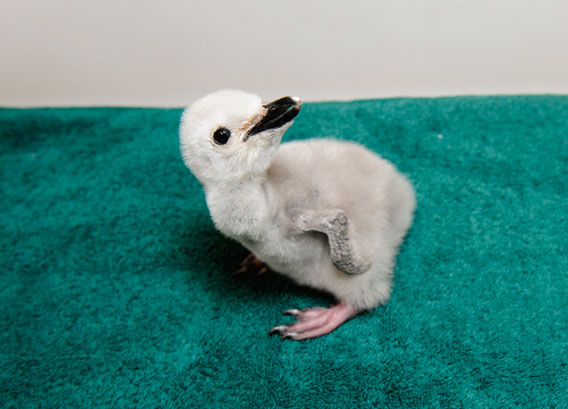 Chinstrap penguin chick. Photo by: Julie Larsen Maher. A new blog, dubbed the Real Chicks of Central Park, is allowing visitors an intimate look at eight impossibly-cute penguin chicks. Including video, photos, and interviews the blog is an attempt to raise awareness about penguins. The highlighted chicks include four gentoo penguins (Pygoscelis papua) and four […]
Chinstrap penguin chick. Photo by: Julie Larsen Maher. A new blog, dubbed the Real Chicks of Central Park, is allowing visitors an intimate look at eight impossibly-cute penguin chicks. Including video, photos, and interviews the blog is an attempt to raise awareness about penguins. The highlighted chicks include four gentoo penguins (Pygoscelis papua) and four […]
800 nearly-extinct giant snails freeze to death in conservation center
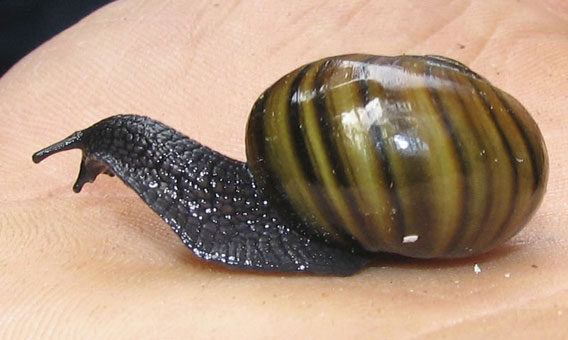 New Zealand’s Powelliphanta snail. Photo by: Alan Liefting. Eight hundred large carnivorous snails, known as Powelliphanta snails (Powelliphanta augusta), died in a Department of Conservation (DOC) fridge in New Zealand over the weekend. A faulty temperature gauge caused the fridge to cool down to zero degrees Celsius, slowly killing all the molluscs but a lone […]
New Zealand’s Powelliphanta snail. Photo by: Alan Liefting. Eight hundred large carnivorous snails, known as Powelliphanta snails (Powelliphanta augusta), died in a Department of Conservation (DOC) fridge in New Zealand over the weekend. A faulty temperature gauge caused the fridge to cool down to zero degrees Celsius, slowly killing all the molluscs but a lone […]
Aloha, and welcome to the planet’s extinction capital
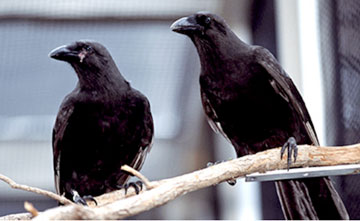 Hawaii evokes images of a tropical paradise where fragrant flowers, vivid colors, exotic plants, birds, and fish abound. Unfortunately, much of Hawaii’s original native flora and fauna has disappeared since the arrival of Europeans in the 18th Century. Hawaii now has the dubious distinction as having become the planet’s extinction capital, having lost more than […]
Hawaii evokes images of a tropical paradise where fragrant flowers, vivid colors, exotic plants, birds, and fish abound. Unfortunately, much of Hawaii’s original native flora and fauna has disappeared since the arrival of Europeans in the 18th Century. Hawaii now has the dubious distinction as having become the planet’s extinction capital, having lost more than […]
Malaysia must take action to avoid extinction of its last rhinos
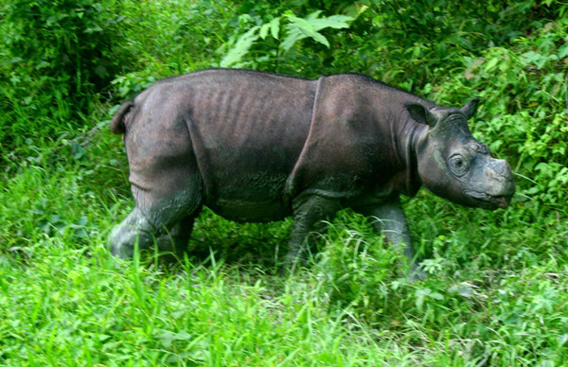 Tam, a male Sumatran rhino is kept in semi-captivity in Borneo with hopes to mate him with a female. The Sumatran rhinos on Borneo are actually a unique subspecies, dubbed the Borneo rhino, they are the world’s smallest.Photo by: Jeremy Hance. Malaysia must take immediate action to prevent the extinction of the handful of rhinos […]
Tam, a male Sumatran rhino is kept in semi-captivity in Borneo with hopes to mate him with a female. The Sumatran rhinos on Borneo are actually a unique subspecies, dubbed the Borneo rhino, they are the world’s smallest.Photo by: Jeremy Hance. Malaysia must take immediate action to prevent the extinction of the handful of rhinos […]
New site is a match-maker for world’s endangered frogs
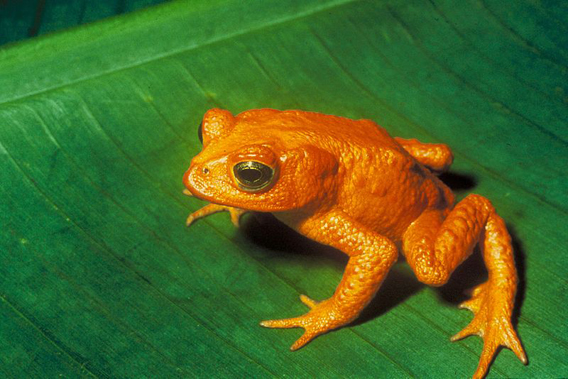 The golden toad (Bufo periglenes) is one of well-over a hundred frogs that are believed to have gone extinct over the past few decades. Photo by: US Fish and Wildlife Service. A new initiative by the conservation group, Amphibian Ark, hopes to match lonely, vanishing frogs with a prince/princess to to save them. Dubbed FrogMatchMaker.com […]
The golden toad (Bufo periglenes) is one of well-over a hundred frogs that are believed to have gone extinct over the past few decades. Photo by: US Fish and Wildlife Service. A new initiative by the conservation group, Amphibian Ark, hopes to match lonely, vanishing frogs with a prince/princess to to save them. Dubbed FrogMatchMaker.com […]
Scientists find frog genes that provide immunity to extinction plague
 Scientist trying to save a La Loma tree frog, a species imperiled by chytridiomycosis at Panama’s Amphibian Rescue and Conservation Project. Photo by: Rhett A. Butler. Scientists with Cornell have discovered genetics that may provide immunity to frogs in face of the killer amphibian-disease chytridiomycosis. This plague, which is spreading to amphibian populations worldwide, is […]
Scientist trying to save a La Loma tree frog, a species imperiled by chytridiomycosis at Panama’s Amphibian Rescue and Conservation Project. Photo by: Rhett A. Butler. Scientists with Cornell have discovered genetics that may provide immunity to frogs in face of the killer amphibian-disease chytridiomycosis. This plague, which is spreading to amphibian populations worldwide, is […]
The glass is half-full: conservation has made a difference
 Focused conservation efforts, including reintroduction of captive individuals into the wild, have saved the golden lion tamarin from extinction. Photo by: Rhett A. Butler. Don’t despair: that’s the message of a new paper in Trends in Ecology and Evolution, which argues that decades of conservation actions at multiple scales have had a positive impact for […]
Focused conservation efforts, including reintroduction of captive individuals into the wild, have saved the golden lion tamarin from extinction. Photo by: Rhett A. Butler. Don’t despair: that’s the message of a new paper in Trends in Ecology and Evolution, which argues that decades of conservation actions at multiple scales have had a positive impact for […]
Blue iguana back from the dead
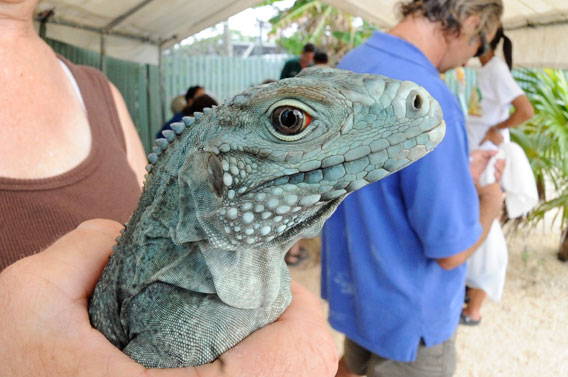 A young blue iguana awaiting a health assessment. Photo credit: Julie Larsen Maher/Wildlife Conservation Society. The blue iguana (Cyclura lewisi) was once king of the Caribbean Island, Grand Cayman. Weighting in at 25 pounds, measuring over 5 feet, and living for over sixty years, nothing could touch this regal lizard. But then the unthinkable happened: […]
A young blue iguana awaiting a health assessment. Photo credit: Julie Larsen Maher/Wildlife Conservation Society. The blue iguana (Cyclura lewisi) was once king of the Caribbean Island, Grand Cayman. Weighting in at 25 pounds, measuring over 5 feet, and living for over sixty years, nothing could touch this regal lizard. But then the unthinkable happened: […]
Forgotten species: the rebellious spotted handfish
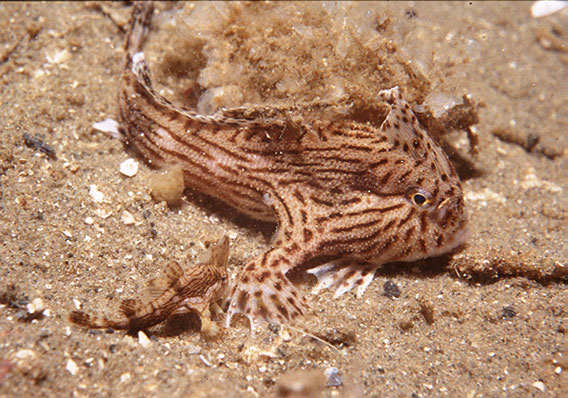 Everyone knows the tiger, the panda, the blue whale, but what about the other five to thirty million species estimated to inhabit our Earth? Many of these marvelous, stunning, and rare species have received little attention from the media, conservation groups, and the public. This series is an attempt to give these ‘forgotten species‘ some […]
Everyone knows the tiger, the panda, the blue whale, but what about the other five to thirty million species estimated to inhabit our Earth? Many of these marvelous, stunning, and rare species have received little attention from the media, conservation groups, and the public. This series is an attempt to give these ‘forgotten species‘ some […]
How do we save the Sumatran rhino?
 Tam, a male Sumatran rhino is kept in semi-captivity in Borneo with hopes to mate him with a female. The Sumatran rhinos on Borneo are actually a unique subspecies, dubbed the Borneo rhino, they are the world’s smallest.Photo by: Jeremy Hance. Some conservation challenges are more daunting than others. For example, how do you save […]
Tam, a male Sumatran rhino is kept in semi-captivity in Borneo with hopes to mate him with a female. The Sumatran rhinos on Borneo are actually a unique subspecies, dubbed the Borneo rhino, they are the world’s smallest.Photo by: Jeremy Hance. Some conservation challenges are more daunting than others. For example, how do you save […]
On the edge of extinction, Philippine eagles being picked off one-by-one
 Down to a few hundred individuals, every Philippine eagle is important if the species is to survive. However, the Philippine Eagle Foundation (PEF) has recently announced that people continue to illegally trap and keep eagles captive. Since December the organization has taken-in four confiscated Philippine eagles (Pithecophaga jefferyi), according to The Philippine Star. One died […]
Down to a few hundred individuals, every Philippine eagle is important if the species is to survive. However, the Philippine Eagle Foundation (PEF) has recently announced that people continue to illegally trap and keep eagles captive. Since December the organization has taken-in four confiscated Philippine eagles (Pithecophaga jefferyi), according to The Philippine Star. One died […]
Scientists scramble to save dying amphibians
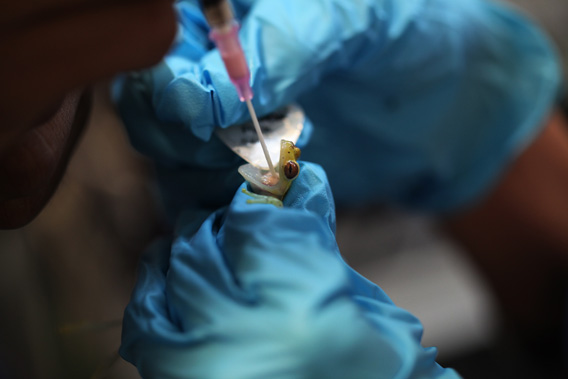 Hyloscirtus colymba tree frog being fed after being treated for Chytridiomycosis. Photo taken by Rhett A. Butler at Summit Park. In forests, ponds, swamps, and other ecosystems around the world, amphibians are dying at rates never before observed. The reasons are many: habitat destruction, pollution from pesticides, climate change, invasive species, and the emergence of […]
Hyloscirtus colymba tree frog being fed after being treated for Chytridiomycosis. Photo taken by Rhett A. Butler at Summit Park. In forests, ponds, swamps, and other ecosystems around the world, amphibians are dying at rates never before observed. The reasons are many: habitat destruction, pollution from pesticides, climate change, invasive species, and the emergence of […]
Richard Branson’s pet lemur project won’t help save wildlife in Madagascar
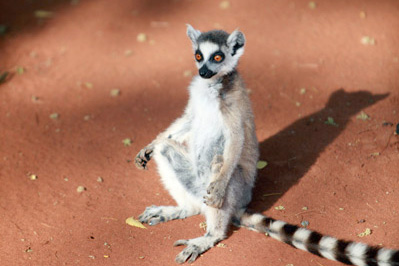 Richard Branson’s plan to introduce lemurs on one of his private islands in the Caribbean is a terrible idea if his aim is really to protect the primates from extinction. Beyond the much-discussed ecological impact of bringing in non-native primates, Branson’s scheme risks undermining conservation efforts where lemurs actually exist in the wild: Madagascar. As […]
Richard Branson’s plan to introduce lemurs on one of his private islands in the Caribbean is a terrible idea if his aim is really to protect the primates from extinction. Beyond the much-discussed ecological impact of bringing in non-native primates, Branson’s scheme risks undermining conservation efforts where lemurs actually exist in the wild: Madagascar. As […]
Escaped Bronx Zoo cobra found! (picture)
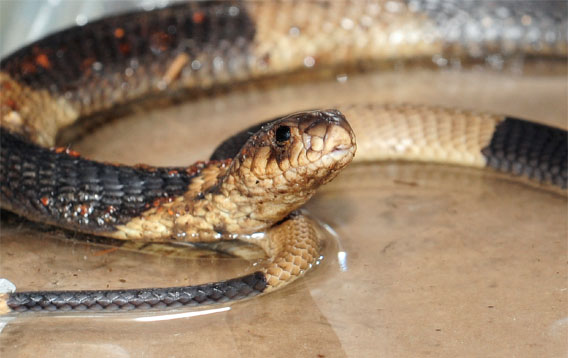 The missing Bronx Zoo cobra has been recaptured. Photo by Julie Larsen Maher of WCS. The missing Bronx Zoo cobra that became a pop culture sensation and caused consternation among some New York residents whas been found after a thorough search of the zoo’s Reptile House. The escaped serpent was found in a non-public, off-exhibit […]
The missing Bronx Zoo cobra has been recaptured. Photo by Julie Larsen Maher of WCS. The missing Bronx Zoo cobra that became a pop culture sensation and caused consternation among some New York residents whas been found after a thorough search of the zoo’s Reptile House. The escaped serpent was found in a non-public, off-exhibit […]
Alien plants invade Nigerian protected ‘gene bank’
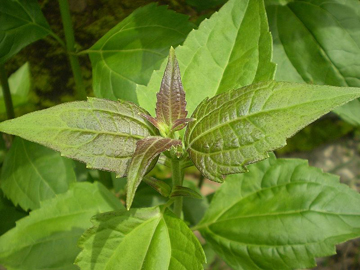 Very few studies have been conducted on invasive species in Nigeria, however a new study in mongabay.com’s open access journal Tropical Conservation Science has discovered 25 invasive plants in a field gene bank at the National Center for Genetic Resources and Biotechnology (NASGRAB) in Ibadan. The gene bank is used to establish populations of important […]
Very few studies have been conducted on invasive species in Nigeria, however a new study in mongabay.com’s open access journal Tropical Conservation Science has discovered 25 invasive plants in a field gene bank at the National Center for Genetic Resources and Biotechnology (NASGRAB) in Ibadan. The gene bank is used to establish populations of important […]
Pet trade, palm oil, and poaching: the challenges of saving the ‘forgotten bear’
 This interview is an excerpt from The WildLife with Laurel Neme, a program that explores the mysteries of the animal world through interviews with scientists and other wildlife investigators. “The WildLife” airs every Monday from 1-2 pm EST on WOMM-LP, 105.9 FM in Burlington, Vermont. You can livestream it at theradiator.org or download the podcast […]
This interview is an excerpt from The WildLife with Laurel Neme, a program that explores the mysteries of the animal world through interviews with scientists and other wildlife investigators. “The WildLife” airs every Monday from 1-2 pm EST on WOMM-LP, 105.9 FM in Burlington, Vermont. You can livestream it at theradiator.org or download the podcast […]
Top 25 most endangered turtles: Asian species in crisis
 Surviving hundreds of millions of years on Earth have not saved turtles from facing extinction at human hands. A new report by the Wildlife Conservation Society (WCS) and the Turtle Conservation Coalition, identifies the world’s 25 most imperiled turtles, including one that is practically assured extinction: ‘Lonesome George’ the last Abdington Island tortoise in the […]
Surviving hundreds of millions of years on Earth have not saved turtles from facing extinction at human hands. A new report by the Wildlife Conservation Society (WCS) and the Turtle Conservation Coalition, identifies the world’s 25 most imperiled turtles, including one that is practically assured extinction: ‘Lonesome George’ the last Abdington Island tortoise in the […]
Woman turns home bird sanctuary into effort to save rare birds
 Twelve percent of the world’s species are considered threatened with extinction according to the IUCN Red List, the authority on such matters. While habitat destruction and alien invasive species bear the brunt of the responsibility, the commercial pet trade has contributed to the decline of some of the world’s most beautiful species. But with several […]
Twelve percent of the world’s species are considered threatened with extinction according to the IUCN Red List, the authority on such matters. While habitat destruction and alien invasive species bear the brunt of the responsibility, the commercial pet trade has contributed to the decline of some of the world’s most beautiful species. But with several […]
Teaching orangutans to be wild – orangutan rehabilitation
 This interview is an excerpt from The WildLife with Laurel Neme, a program that explores the mysteries of the animal world through interviews with scientists and other wildlife investigators. “The WildLife” airs every Monday from 1-2 pm EST on WOMM-LP, 105.9 FM in Burlington, Vermont. You can livestream it at theradiator.org or download the podcast […]
This interview is an excerpt from The WildLife with Laurel Neme, a program that explores the mysteries of the animal world through interviews with scientists and other wildlife investigators. “The WildLife” airs every Monday from 1-2 pm EST on WOMM-LP, 105.9 FM in Burlington, Vermont. You can livestream it at theradiator.org or download the podcast […]
The problem-solving ape: what makes orangutans special and why they are threatened
 This interview is an excerpt from The WildLife with Laurel Neme, a program that explores the mysteries of the animal world through interviews with scientists and other wildlife investigators. “The WildLife” airs every Monday from 1-2 pm EST on WOMM-LP, 105.9 FM in Burlington, Vermont. You can livestream it at theradiator.org or download the podcast […]
This interview is an excerpt from The WildLife with Laurel Neme, a program that explores the mysteries of the animal world through interviews with scientists and other wildlife investigators. “The WildLife” airs every Monday from 1-2 pm EST on WOMM-LP, 105.9 FM in Burlington, Vermont. You can livestream it at theradiator.org or download the podcast […]
Rebuttal: Slaughtering farmed-raised tigers won’t save tigers
 An interview with Alasdair Cameron of the Environmental Investigation Agency (EIA). A recent interview with Kirsten Conrad on how legalizing the tiger trade could possibly save wild tigers sparked off some heated reactions, ranging from well-thought out to deeply emotional. While, we at mongabay.com were not at all surprised by this, we felt it was […]
An interview with Alasdair Cameron of the Environmental Investigation Agency (EIA). A recent interview with Kirsten Conrad on how legalizing the tiger trade could possibly save wild tigers sparked off some heated reactions, ranging from well-thought out to deeply emotional. While, we at mongabay.com were not at all surprised by this, we felt it was […]
Critics say Obama slow on endangered species
The Obama Administration is lagging behind past administrations in its listing of dwindling species under the Endangered Species Act (ESA). To date the US Fish and Wildlife Service has added 51 species to the ESA since Obama’s took office, according to the conservation group, Center for Biological Diversity. By contrast, the Clinton Administration averaged 65 […]
Would legalizing the trade in tiger parts save the tiger?
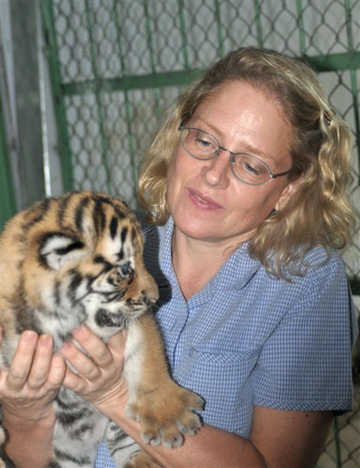 An interview with Kirsten Conrad. Just the mention of the idea is enough to send shivers down many tiger conservationists’ spines: re-legalize the trade in tiger parts. The trade has been largely illegal since 1975 under the Convention on International Trade in Endangered Species (CITES). The concept was, of course, a reasonable one: if we […]
An interview with Kirsten Conrad. Just the mention of the idea is enough to send shivers down many tiger conservationists’ spines: re-legalize the trade in tiger parts. The trade has been largely illegal since 1975 under the Convention on International Trade in Endangered Species (CITES). The concept was, of course, a reasonable one: if we […]
Saving the best for last: a journey into the final phases of orangutan rehabilitation
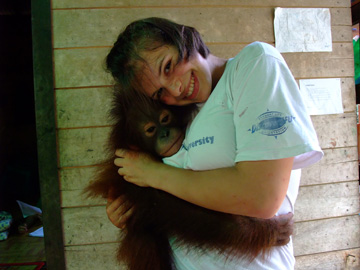 Rehabilitation is a powerful word these days. Fashionable, too. In wildlife conservation, rehabilitation can serve functions ranging from augmenting threatened animal populations to desperate attempts to save species from permanent extinction. At its base, rehabilitation consists of handling, preparing and releasing wild animals that have been in some way negatively affected by humans. Rehabilitation programs […]
Rehabilitation is a powerful word these days. Fashionable, too. In wildlife conservation, rehabilitation can serve functions ranging from augmenting threatened animal populations to desperate attempts to save species from permanent extinction. At its base, rehabilitation consists of handling, preparing and releasing wild animals that have been in some way negatively affected by humans. Rehabilitation programs […]
The march to extinction accelerates
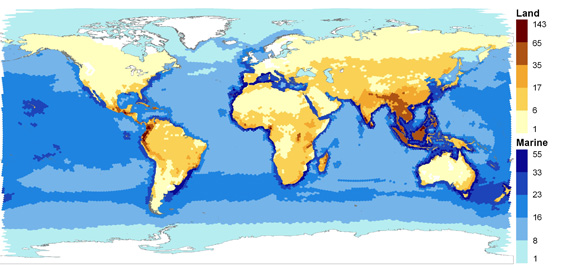 A fifth of the world’s vertebrate species (i.e. mammals, birds, reptiles, amphibians, and fish) are threatened with extinction, according to a massive new study by the International Union for the Conservation of Nature (IUCN); and the situation is worsening for the world’s wildlife: on average 52 species of mammals, birds, and amphibians move one category […]
A fifth of the world’s vertebrate species (i.e. mammals, birds, reptiles, amphibians, and fish) are threatened with extinction, according to a massive new study by the International Union for the Conservation of Nature (IUCN); and the situation is worsening for the world’s wildlife: on average 52 species of mammals, birds, and amphibians move one category […]
Frogs and friends at risk from booming global wildlife trade
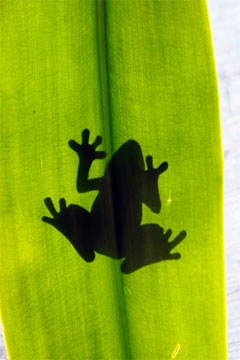 Alejandra Goyenechea, International Counsel at Defenders of Wildlife and Chair of the Species Survival Network’s (SSN) Amphibian Working Group, spoke with Laurel Neme on her “The WildLife” radio show and podcast about the global amphibian trade. This interview originally aired February 8, 2010. Assistance for this article was provided by Ben Kennedy. Alejandra Goyenechea, International […]
Alejandra Goyenechea, International Counsel at Defenders of Wildlife and Chair of the Species Survival Network’s (SSN) Amphibian Working Group, spoke with Laurel Neme on her “The WildLife” radio show and podcast about the global amphibian trade. This interview originally aired February 8, 2010. Assistance for this article was provided by Ben Kennedy. Alejandra Goyenechea, International […]
Saving Prairie Chickens
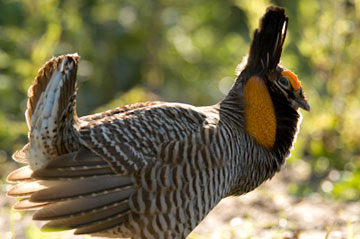 Houston Zoo, NASA and a Consortium of Gulf Coast Zoos Race to Save Prairie Chickens It’s not so complicated, but it’s much easier said than done. I’m referring to the restoration of a species to a habitat that has been transformed over time in the absence of keystone grazing species like bison which served essentially […]
Houston Zoo, NASA and a Consortium of Gulf Coast Zoos Race to Save Prairie Chickens It’s not so complicated, but it’s much easier said than done. I’m referring to the restoration of a species to a habitat that has been transformed over time in the absence of keystone grazing species like bison which served essentially […]
Golden toad saved from brink of extinction
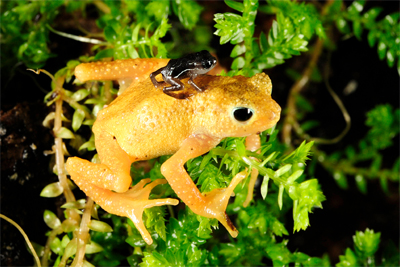 One hundred Kihansi Spray Toads have been flown to their native Tanzania after a close brush with extinction, reports the Wildlife Conservation Society (WCS). The species, which last year was declared extinct in the wild by the International Union for the Conservation of Nature (IUCN), was rehabilitated in captivity at the Bronx Zoo and the […]
One hundred Kihansi Spray Toads have been flown to their native Tanzania after a close brush with extinction, reports the Wildlife Conservation Society (WCS). The species, which last year was declared extinct in the wild by the International Union for the Conservation of Nature (IUCN), was rehabilitated in captivity at the Bronx Zoo and the […]
Guilty verdict over euthanizing tigers in Germany touches off debate about role of zoos
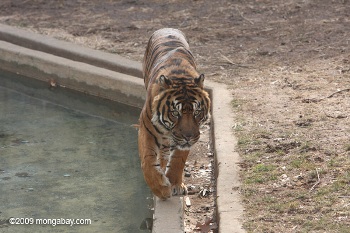 In June a German court handed down a guilty verdict to the Magdeburg Zoo director, Kai Perret, and three employees for euthanizing three tiger cubs in 2008. The zoo decided to kill the cubs when it was discovered that the cubs’ father was not a 100 percent Siberian tiger (i.e. he was a mix of […]
In June a German court handed down a guilty verdict to the Magdeburg Zoo director, Kai Perret, and three employees for euthanizing three tiger cubs in 2008. The zoo decided to kill the cubs when it was discovered that the cubs’ father was not a 100 percent Siberian tiger (i.e. he was a mix of […]
Endangered Animals: 10 Reasons for Hope
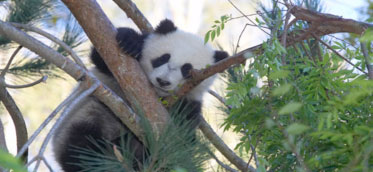 The San Diego Zoo Offers 10 Reasons for Hope and Steps Out with the Global Action Team Earlier last month the Zoological Society of San Diego launched two far reaching media and development projects which showcase the Zoo’s extensive global field conservation programs. Mongabay had the opportunity to attend the launch ceremony of the Zoo’s […]
The San Diego Zoo Offers 10 Reasons for Hope and Steps Out with the Global Action Team Earlier last month the Zoological Society of San Diego launched two far reaching media and development projects which showcase the Zoo’s extensive global field conservation programs. Mongabay had the opportunity to attend the launch ceremony of the Zoo’s […]
Indonesian people-not international donors or orangutan conservationists-will determine the ultimate fate of Indonesia’s forests
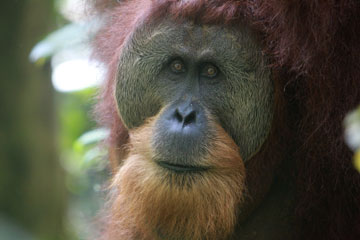 With 18,000 islands spanning two major bigeographic realms (and a curious outlier in Sulawesi) across an area of nearly 2 million square kilometers, Indonesia is one of the world’s most biodiverse countries. It has the world’s third largest extent of tropical forests, has the planet’s richest coral reefs, and is home to more than 12 […]
With 18,000 islands spanning two major bigeographic realms (and a curious outlier in Sulawesi) across an area of nearly 2 million square kilometers, Indonesia is one of the world’s most biodiverse countries. It has the world’s third largest extent of tropical forests, has the planet’s richest coral reefs, and is home to more than 12 […]
Captive orangutans: enriching bodies, minds, and lives
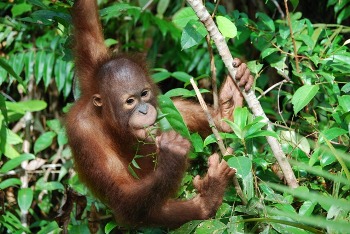 Visitors to the Orangutan Care Center and Quarantine (OCCQ) are always delighted by the sight of playful young orangutans. Hairy orange youngsters swinging through the branches or tossing balls around always induce fits of cooing and camera clicking. These activities appear to be so natural that it is easy to forget these are orphans in […]
Visitors to the Orangutan Care Center and Quarantine (OCCQ) are always delighted by the sight of playful young orangutans. Hairy orange youngsters swinging through the branches or tossing balls around always induce fits of cooing and camera clicking. These activities appear to be so natural that it is easy to forget these are orphans in […]
To save species, Malaysia implements daring plan to trap wild Bornean rhino
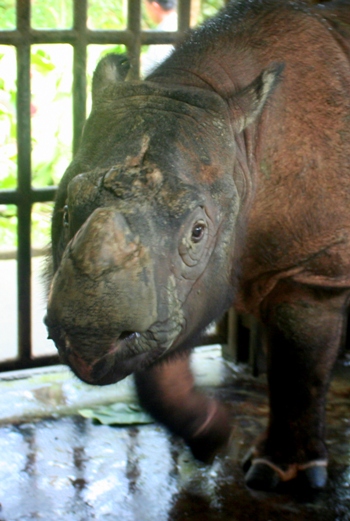 With less than 40 individuals left in the world, the Bornean rhino is a small step away from extinction. Yet conservationists and government officials in the Malaysian state of Sabah are not letting this subspecies of the Sumatran rhino go without a fight. Implementing a daring last-ditch plan to save the animal, officials are working […]
With less than 40 individuals left in the world, the Bornean rhino is a small step away from extinction. Yet conservationists and government officials in the Malaysian state of Sabah are not letting this subspecies of the Sumatran rhino go without a fight. Implementing a daring last-ditch plan to save the animal, officials are working […]
Kehamilan memberi harapan baru bagi badak yang berada di ujung kepunahan
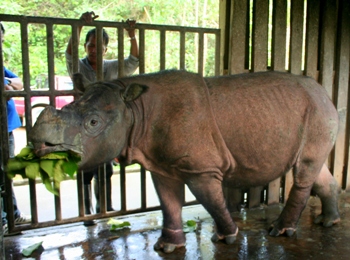 Meski tumbuh di bagian bumi yang berlainan, badak Sumatera Ratu dan Andalas telah memberikan para penggerak pelestarian harapan baru untuk menyelamatkan spesies yang sedang diperjuangkan. Pasangan badak ini sedang akan memiliki anak, menurut Perlindungan Badak Sumarera di Way Kambas, Indonesia. Satu dari mamalia besar yang paling terancam di dunia, badak Sumatera unik karena badannya yang […]
Meski tumbuh di bagian bumi yang berlainan, badak Sumatera Ratu dan Andalas telah memberikan para penggerak pelestarian harapan baru untuk menyelamatkan spesies yang sedang diperjuangkan. Pasangan badak ini sedang akan memiliki anak, menurut Perlindungan Badak Sumarera di Way Kambas, Indonesia. Satu dari mamalia besar yang paling terancam di dunia, badak Sumatera unik karena badannya yang […]
World’s ‘number one frog’ faces extinction from New Zealand government
- Archey’s frog is a survivor: virtually unchanged evolutionarily for 150 million years, the species has survived the comet that decimated the dinosaurs, the Ice Age, and the splitting of continents.
- Seventy million years ago New Zealand broke away from Australia, essentially isolating Archey’s frog and its relatives from all predatory mammals.
- Yet, if the New Zealand government has its way this species may not survive the century, let alone the next few decades.
World failing on every environmental issue: an op-ed for Earth Day
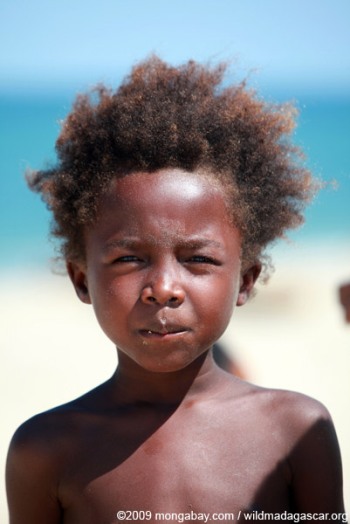 The biodiversity crisis, the climate crisis, the deforestation crisis: we are living in an age when environmental issues have moved from regional problems to global ones. A generation or two before ours and one might speak of saving the beauty of Northern California; conserving a single species—say the white rhino—from extinction; or preserving an ecological […]
The biodiversity crisis, the climate crisis, the deforestation crisis: we are living in an age when environmental issues have moved from regional problems to global ones. A generation or two before ours and one might speak of saving the beauty of Northern California; conserving a single species—say the white rhino—from extinction; or preserving an ecological […]
Photos: rescued sun bears in Borneo moved to new facility
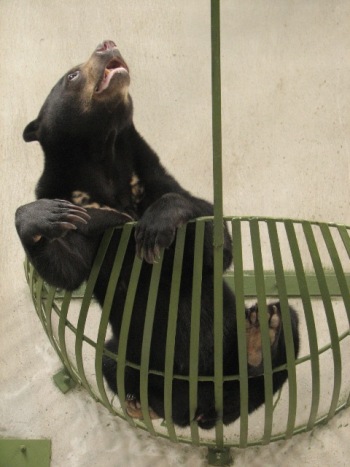 Rescued sun bears in Sabah, Borneo are getting a new home this week. The Bornean Sun Bear Conservation Center (BSBCC) has finished Phase 1 of its construction of a new home for the bears. Eventually the center will include visitor facilities and observation gallery where tourists will have the chance to watch the bears. For […]
Rescued sun bears in Sabah, Borneo are getting a new home this week. The Bornean Sun Bear Conservation Center (BSBCC) has finished Phase 1 of its construction of a new home for the bears. Eventually the center will include visitor facilities and observation gallery where tourists will have the chance to watch the bears. For […]
Seed dispersal in the face of climate change, an interview with Arndt Hampe
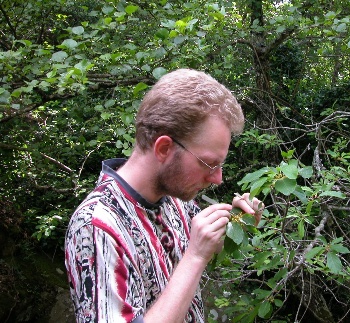 The second in an interview series with participants in the 5th Frugivore and Seed Dispersal International Symposium. Without seed dispersal plants could not survive. Seed dispersal—i.e. birds spreading seeds or wind carrying seeds—means the mechanism by which a seed is moved from its parent tree to a new area; if fortunate the seed will sprout […]
The second in an interview series with participants in the 5th Frugivore and Seed Dispersal International Symposium. Without seed dispersal plants could not survive. Seed dispersal—i.e. birds spreading seeds or wind carrying seeds—means the mechanism by which a seed is moved from its parent tree to a new area; if fortunate the seed will sprout […]
Sumatran rhino loses pregnancy: conservationists saddened but remain resolute
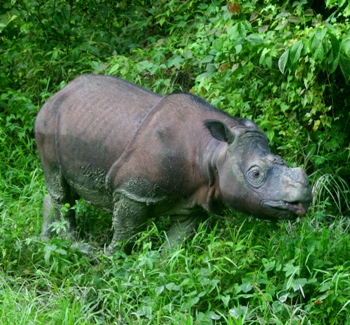 Rhino conservationists’ hopes were dampened today by news that Ratu, a female Sumatran rhino, had lost her pregnancy. Just months after the announcement of the pregnancy—the first at Indonesia’s Sumatran Rhino Sanctuary in Way Kambas National Park—Ratu lost the embryo. Still, say conservationists, the very fact that Ratu became pregnant at all should keep hope […]
Rhino conservationists’ hopes were dampened today by news that Ratu, a female Sumatran rhino, had lost her pregnancy. Just months after the announcement of the pregnancy—the first at Indonesia’s Sumatran Rhino Sanctuary in Way Kambas National Park—Ratu lost the embryo. Still, say conservationists, the very fact that Ratu became pregnant at all should keep hope […]
Frog in Australia goes from ‘extinct’ to very, very endangered
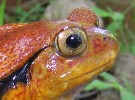 Facing habitat loss, pollution, climate change, and the devastating chytrid fungus, there has been little positive news about amphibians recently. However, a story out of Australia brings a much needed respite from bad news. In 2008 Luke Pearce, a fisheries conservation officer, stumbled on a frog that had been thought to be extinct for over […]
Facing habitat loss, pollution, climate change, and the devastating chytrid fungus, there has been little positive news about amphibians recently. However, a story out of Australia brings a much needed respite from bad news. In 2008 Luke Pearce, a fisheries conservation officer, stumbled on a frog that had been thought to be extinct for over […]
Savior of endangered crocodiles dies of malaria
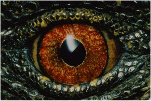 Crocodile-expert and conservationist, Dr. John Thorbjarnarson, died of falciparum malaria in India on February 14th at the age of fifty-two. While many conservationists work with publicly popular animals like tigers and whales, Thorbjarnarson’s passion was for crocodiles. A Senior Conservation Scientist with the Wildlife Conservation Society (WCS), Thorbjarnarson proved instrumental in saving both the Orinoco […]
Crocodile-expert and conservationist, Dr. John Thorbjarnarson, died of falciparum malaria in India on February 14th at the age of fifty-two. While many conservationists work with publicly popular animals like tigers and whales, Thorbjarnarson’s passion was for crocodiles. A Senior Conservation Scientist with the Wildlife Conservation Society (WCS), Thorbjarnarson proved instrumental in saving both the Orinoco […]
Pregnancy gives new hope for rhino on-the-brink of extinction
 Though they grew up world’s apart, Sumatran rhinos Ratu and Andalas have given conservationists new-found hope for saving the embattled species. The rhino couple is expecting, according to the Sumatran Rhino Sanctuary at Way Kambas, Indonesia. One of the world’s most endangered big mammals, Sumatran rhinos are unique due to their hairy bodies and small […]
Though they grew up world’s apart, Sumatran rhinos Ratu and Andalas have given conservationists new-found hope for saving the embattled species. The rhino couple is expecting, according to the Sumatran Rhino Sanctuary at Way Kambas, Indonesia. One of the world’s most endangered big mammals, Sumatran rhinos are unique due to their hairy bodies and small […]
The Critically Endangered South China Tiger Roars Again in 2010, the Chinese Year of the Tiger
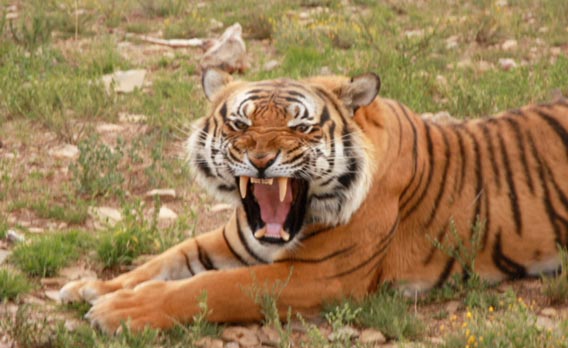 Today marks the Chinese New Year for 2010, and the start of the traditional “Year of the Tiger.” The people of China might be celebrating future Years of the Tigers without their native and critically endangered South China Tiger (Panthera tigris amoyensis) if not for the efforts of Save China’s Tigers (SCT), a grassroots conservation […]
Today marks the Chinese New Year for 2010, and the start of the traditional “Year of the Tiger.” The people of China might be celebrating future Years of the Tigers without their native and critically endangered South China Tiger (Panthera tigris amoyensis) if not for the efforts of Save China’s Tigers (SCT), a grassroots conservation […]
Forgotten Species: the fiery Luristan Newt
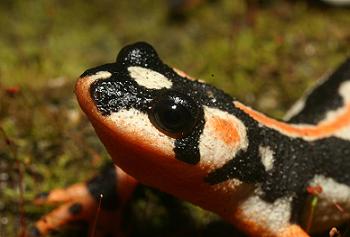 Everyone knows the tiger, the panda, the blue whale, but what about the other five to thirty million species estimated to inhabit our Earth? Many of these marvelous, stunning, and rare species have received little attention from the media, conservation groups, and the public. This series is an attempt to give these ‘forgotten species‘ some […]
Everyone knows the tiger, the panda, the blue whale, but what about the other five to thirty million species estimated to inhabit our Earth? Many of these marvelous, stunning, and rare species have received little attention from the media, conservation groups, and the public. This series is an attempt to give these ‘forgotten species‘ some […]
Tales From A Frozen Zoo
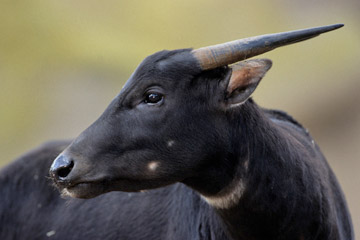 “No one would have ever predicted that we could turn the cells in our collection into stem cells and that you would be able to clone animals from these (stem) cells; or that you could sequence the genomes of these animals on any kind of scale. At the time when this collection was first banked, […]
“No one would have ever predicted that we could turn the cells in our collection into stem cells and that you would be able to clone animals from these (stem) cells; or that you could sequence the genomes of these animals on any kind of scale. At the time when this collection was first banked, […]
Bronx Zoo puts ‘extinct’ frogs on display
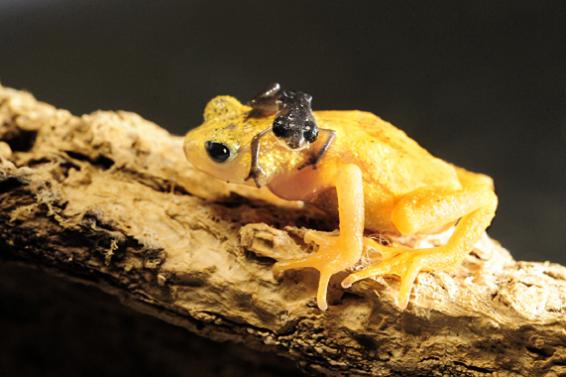 The Bronx Zoo has a put a most unusual frog on display: the Kihansi spray toad. For one thing, the Kihansi spray toad survived on only 5 acres in the Kihansi gorge in Tanzania, adapted to the areas’ unique and constant mist from the gorge and a waterfall. For another, female Kihansi spray toads give […]
The Bronx Zoo has a put a most unusual frog on display: the Kihansi spray toad. For one thing, the Kihansi spray toad survived on only 5 acres in the Kihansi gorge in Tanzania, adapted to the areas’ unique and constant mist from the gorge and a waterfall. For another, female Kihansi spray toads give […]
Indonesia plans to sell endangered tigers as pets to the wealthy
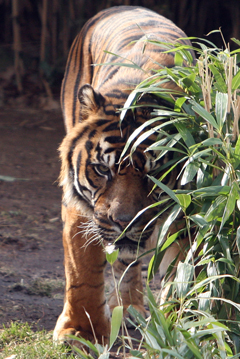 Indonesia has a new plan to save the Critically Endangered Sumatran tiger, reports the AFP: sell captive-born tigers as pets. The proposed price is 100,000 US dollars for a pair of Sumatran tigers with the money going to conservation efforts, though it was unclear who would manage these funds. “We’re not selling or renting tigers. […]
Indonesia has a new plan to save the Critically Endangered Sumatran tiger, reports the AFP: sell captive-born tigers as pets. The proposed price is 100,000 US dollars for a pair of Sumatran tigers with the money going to conservation efforts, though it was unclear who would manage these funds. “We’re not selling or renting tigers. […]
Conservation organization, Durrell Wildlife Trust, forced to cut staff due to economic downturn
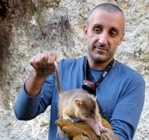 The Durrell Wildlife Trust—which turned fifty last year—has announced that it will be cutting back 10 percent of its workforce, approximately 12-14 positions, due to an ongoing deficit caused by the economic recession. “It is extremely sad that we have to take these actions, including the need to lose staff who work so passionately in […]
The Durrell Wildlife Trust—which turned fifty last year—has announced that it will be cutting back 10 percent of its workforce, approximately 12-14 positions, due to an ongoing deficit caused by the economic recession. “It is extremely sad that we have to take these actions, including the need to lose staff who work so passionately in […]
UK planning to reintroduce insects
 When one thinks of reintroducing wildlife, one usually thinks of big charismatic mammals, such as wolves or beaver, or desperate birds like the Californian condor. But the Royal Society for the Protection of Birds (RSPB) in Scotland is going one step further to save the UK’s unique ecology with plans to reintroduce four species of […]
When one thinks of reintroducing wildlife, one usually thinks of big charismatic mammals, such as wolves or beaver, or desperate birds like the Californian condor. But the Royal Society for the Protection of Birds (RSPB) in Scotland is going one step further to save the UK’s unique ecology with plans to reintroduce four species of […]
Gone: a look at extinction over the past decade
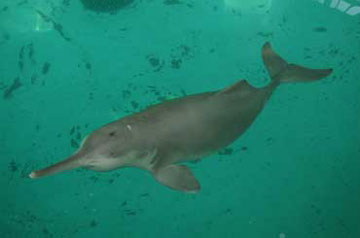 A survey of twelve species lost to extinction over the past ten years. No one can say with any certainty how many species went extinct from 2000-2009. Because no one knows if the world’s species number 3 million or 30 million, it is impossible to guess how many known species—let alone unknown—may have vanished recently. […]
A survey of twelve species lost to extinction over the past ten years. No one can say with any certainty how many species went extinct from 2000-2009. Because no one knows if the world’s species number 3 million or 30 million, it is impossible to guess how many known species—let alone unknown—may have vanished recently. […]
Last breeding northern white rhinos will return to Africa
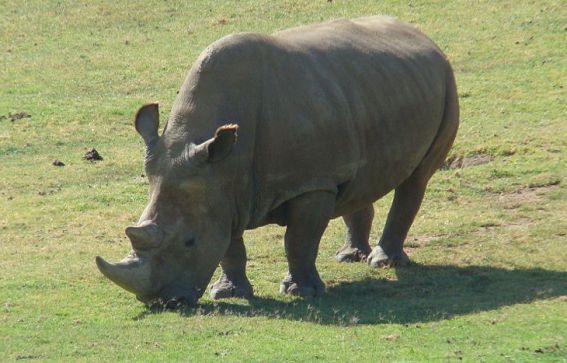 Only eight individual northern white rhinos survive in the world, making it the world’s most endangered large mammal. Unfortunately, half of the rhinos are unable to breed. The remaining four—the last hope for the subspecies—will be moved this weekend from Dvur Kralove Zoo in the Czech Republic to conservancy in Kenya. “They are listed as […]
Only eight individual northern white rhinos survive in the world, making it the world’s most endangered large mammal. Unfortunately, half of the rhinos are unable to breed. The remaining four—the last hope for the subspecies—will be moved this weekend from Dvur Kralove Zoo in the Czech Republic to conservancy in Kenya. “They are listed as […]
Cattle company bulldozing UNESCO site, threatening uncontacted natives
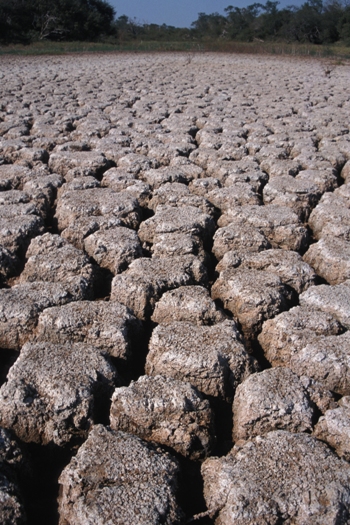 A Brazilian ranching company is bulldozing land within UNESCO Chaco Biosphere Reserve in Paraguay, home to the only uncontacted natives outside of the Amazon in South America. While the UNESCO status provides no legal protections to the area, it is meant as an international marker to protect the tribe of the Ayoreo-Totobiegosode and the forest […]
A Brazilian ranching company is bulldozing land within UNESCO Chaco Biosphere Reserve in Paraguay, home to the only uncontacted natives outside of the Amazon in South America. While the UNESCO status provides no legal protections to the area, it is meant as an international marker to protect the tribe of the Ayoreo-Totobiegosode and the forest […]
Photos: four Critically Endangered Somali wild ass born at preserve in Qatar
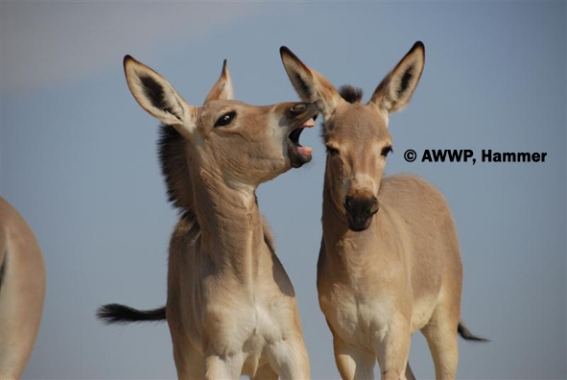 Four Somalia wild ass were born at the Al Wabra Wildlife Preservation (AWWP) in Qatar. The Somali wild ass (Equus africanus somaliensis) is a subspecies of the African wild ass, both of which are classified by the IUCN Red List as Critically Endangered. The four foals all have the same father, a stallion named ‘Hector’ […]
Four Somalia wild ass were born at the Al Wabra Wildlife Preservation (AWWP) in Qatar. The Somali wild ass (Equus africanus somaliensis) is a subspecies of the African wild ass, both of which are classified by the IUCN Red List as Critically Endangered. The four foals all have the same father, a stallion named ‘Hector’ […]
Face-to-face with what may be the last of the world’s smallest rhino, the Bornean rhinoceros
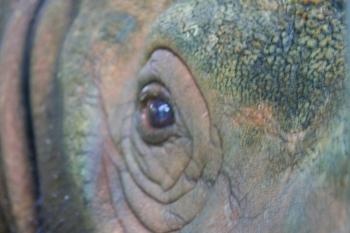 Meeting Tam in Borneo: our last chance to save Asia’s two horned rhino Nothing can really prepare a person for coming face-to-face with what may be the last of a species. I had known for a week that I would be fortunate enough to meet Tam. I’d heard stories of his gentle demeanor, discussed his […]
Meeting Tam in Borneo: our last chance to save Asia’s two horned rhino Nothing can really prepare a person for coming face-to-face with what may be the last of a species. I had known for a week that I would be fortunate enough to meet Tam. I’d heard stories of his gentle demeanor, discussed his […]
Zoos call for deeper emission cuts to save life on Earth
 To save species around the world zoos say deeper emission cuts are needed than governments are currently proposing. Over 200 zoos worldwide have signed a petition calling on governments to set the target of atmospheric carbon below 350 parts per million (ppm) far lower than most government targets. The signatories, each a member of the […]
To save species around the world zoos say deeper emission cuts are needed than governments are currently proposing. Over 200 zoos worldwide have signed a petition calling on governments to set the target of atmospheric carbon below 350 parts per million (ppm) far lower than most government targets. The signatories, each a member of the […]
DNA uncovers nearly extinct Siamese crocodiles in captivity
 The Critically Endangered Siamese crocodile, once believed to be extinct in the wild, received some uplifting news this week. DNA testing of 69 rescued crocodiles at Phnom Tama Wildlife Rescue Center (PTWRC) in Cambodia found 35 purebred Siamese crocodiles. “This could provide a critical lifeline for the long-term preservation of this critically endangered species,” said […]
The Critically Endangered Siamese crocodile, once believed to be extinct in the wild, received some uplifting news this week. DNA testing of 69 rescued crocodiles at Phnom Tama Wildlife Rescue Center (PTWRC) in Cambodia found 35 purebred Siamese crocodiles. “This could provide a critical lifeline for the long-term preservation of this critically endangered species,” said […]
Kihansi spray toad goes extinct in the wild
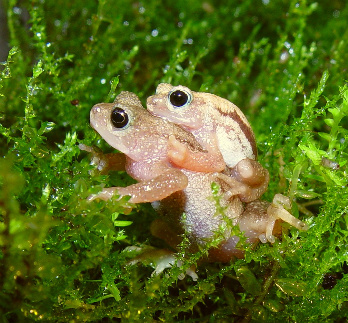 This year’s IUCN Red List has updated its assessment of the Kihansi spray toad, moving the species from Critically Endangered to Extinct in the Wild. With that another amphibian species has been lost to a combination of habitat loss and the devastating amphibian disease, the chytrid fungus. The Kihansi spray toad Nectophrynoides asperginis, which still […]
This year’s IUCN Red List has updated its assessment of the Kihansi spray toad, moving the species from Critically Endangered to Extinct in the Wild. With that another amphibian species has been lost to a combination of habitat loss and the devastating amphibian disease, the chytrid fungus. The Kihansi spray toad Nectophrynoides asperginis, which still […]
Vlad the Impaler of the bird world now at Bronx Zoo: skewers prey on thorns and barbed wire
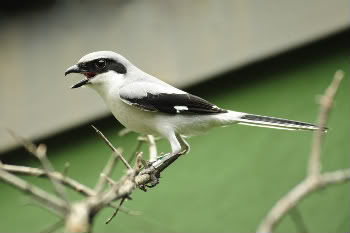 The loggerhead shrike, also known as the ‘butcher bird’, employs a feeding strategy that would have been right at home in 15th Century Transylvania. Like the infamous Vlad the Impaler (the brutal prince which Bram Stoker based Dracula off), the loggerhead shrike is truly skilled at impaling. Using its hooked beak to break the spines […]
The loggerhead shrike, also known as the ‘butcher bird’, employs a feeding strategy that would have been right at home in 15th Century Transylvania. Like the infamous Vlad the Impaler (the brutal prince which Bram Stoker based Dracula off), the loggerhead shrike is truly skilled at impaling. Using its hooked beak to break the spines […]
Saving the last megafauna of Malaysia, an interview with Reuben Clements
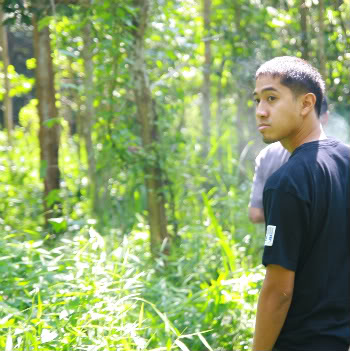 Reuben Clements is the species conservation manager for WWF-Malaysia’s Malayan tiger and Sumatran rhino projects. Mongabay.com’s fifth in a series of interviews with ‘Young Scientists’. And second in a series of interviews with participants at the 2009 Association of Tropical Biology and Conservation (ATBC) conference. Reuben Clements has achieved one success after another since graduating […]
Reuben Clements is the species conservation manager for WWF-Malaysia’s Malayan tiger and Sumatran rhino projects. Mongabay.com’s fifth in a series of interviews with ‘Young Scientists’. And second in a series of interviews with participants at the 2009 Association of Tropical Biology and Conservation (ATBC) conference. Reuben Clements has achieved one success after another since graduating […]
Sheikh goes from collector to conservationist in effort to save the world’s rarest parrot
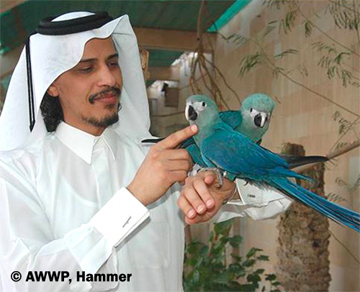 From Collectors to Conservationists: Al Wabra Wildlife Preservation Al Wabra Wildlife Preservation (AWWP) is a private conservation and endangered species breeding-center located in the Arabian gulf State of Qatar. Founded by Sheikh Saoud Bin Mohammed Bin Ali Al-Thani, the facility focuses on work with threatened antelope and bird species. Although AWWP has had great success […]
From Collectors to Conservationists: Al Wabra Wildlife Preservation Al Wabra Wildlife Preservation (AWWP) is a private conservation and endangered species breeding-center located in the Arabian gulf State of Qatar. Founded by Sheikh Saoud Bin Mohammed Bin Ali Al-Thani, the facility focuses on work with threatened antelope and bird species. Although AWWP has had great success […]
World’s only Sumatran rhino to give birth in captivity dies at Cincinnati Zoo
Emi, the world’s only Sumatran rhino to give birth in captivity, died on Saturday at the Cincinnati zoo. She successfully gave birth to three offspring, one of which has been released back into the wild in Indonesia. “Naturally it’s always devastating when an animal reaches the end of its life, but certainly one as beloved […]
46 rescued orangutans returned to the wild by helicopter in Borneo
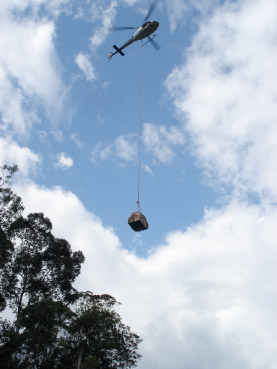 The Borneo Orangutan Survival Foundation (BOSF) has successfully released 46 orangutans back into the wild. The orangutans had been rescued from forest fragments and housed for months at the Nyaru Menteng Rescue and Reintroduction Project in Central Kalimantan until suitable — and secure — habitat was located. The release site is a section of rainforest […]
The Borneo Orangutan Survival Foundation (BOSF) has successfully released 46 orangutans back into the wild. The orangutans had been rescued from forest fragments and housed for months at the Nyaru Menteng Rescue and Reintroduction Project in Central Kalimantan until suitable — and secure — habitat was located. The release site is a section of rainforest […]
Critically-endangered turtle seen in the wild for the first time by scientists
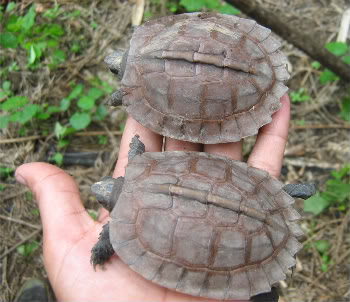 Scientists have stumbled on the Arakan forest turtle for the first time in the wild, according to a report by the Wildlife Conservation Society (WCS). One of the world’s rarest turtles, the Arakan forest turtle was thought to be extinct for 86 years, before being discovered in an Asian food market in 1994. It has […]
Scientists have stumbled on the Arakan forest turtle for the first time in the wild, according to a report by the Wildlife Conservation Society (WCS). One of the world’s rarest turtles, the Arakan forest turtle was thought to be extinct for 86 years, before being discovered in an Asian food market in 1994. It has […]
Saving Africa’s ‘unicorn’, the okapi
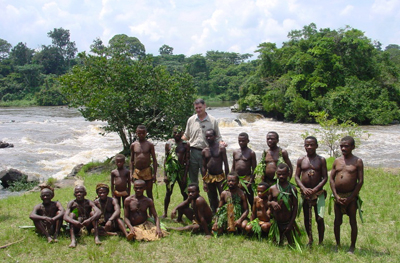 Conservationists work with local communities to protect the okapi, and its rainforest habitat, in the aftermath of a brutal civil war.
Conservationists work with local communities to protect the okapi, and its rainforest habitat, in the aftermath of a brutal civil war.
New non-invasive painkiller developed for the world’s biggest cats
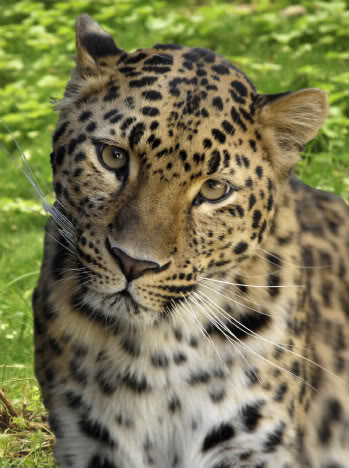
World’s rarest duck flies closer to extinction’s edge

Tiger brutally killed in zoo, body parts taken to sell for Chinese medicine
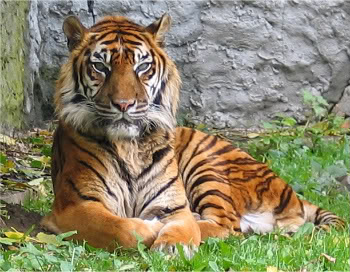
Rehabilitation not enough to solve orangutan crisis in Indonesia
 Growing numbers of “palm oil orphans” in rehab centers present a challenge to conservationists. NOTE: A shorter version of this article was published on Yale e360 in June. A baby orangutan ambles across the grass at the Borneo Orangutan Survival Foundation’s Nyaru Menteng rehabilitation center in Central Kalimantan, in the heart of Indonesian Borneo. The […]
Growing numbers of “palm oil orphans” in rehab centers present a challenge to conservationists. NOTE: A shorter version of this article was published on Yale e360 in June. A baby orangutan ambles across the grass at the Borneo Orangutan Survival Foundation’s Nyaru Menteng rehabilitation center in Central Kalimantan, in the heart of Indonesian Borneo. The […]
50 of the world’s most endangered crocodiles released into the wild in the Philippines

Borneo orangutan release in jeopardy over fate of coal mining concession
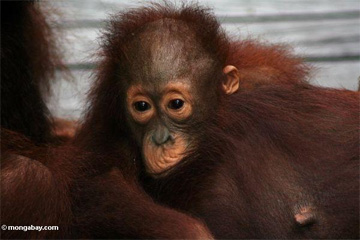 A plan to release orangutans in a 250,000-hectare (618,000-acre) tract of forest in the Heart of Borneo has been disrupted by uncertainty around BHP Billiton’s decision to pull out of a coal mining project in Kalimantan, the Indonesian part of Borneo, reports the Independent and conservation groups familiar with the situation. BHP Billiton had provided […]
A plan to release orangutans in a 250,000-hectare (618,000-acre) tract of forest in the Heart of Borneo has been disrupted by uncertainty around BHP Billiton’s decision to pull out of a coal mining project in Kalimantan, the Indonesian part of Borneo, reports the Independent and conservation groups familiar with the situation. BHP Billiton had provided […]
Photos: 5 baby lemurs born at the Bronx Zoo
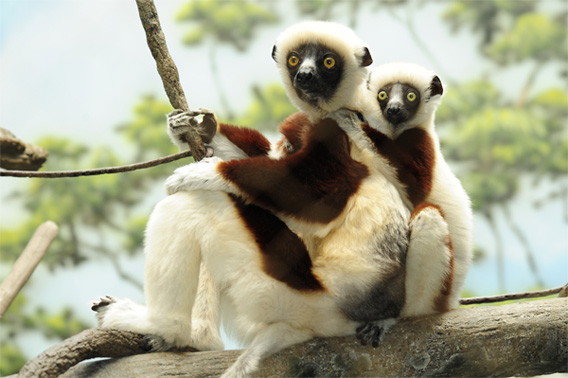 Five baby lemurs have been born at the Bronx Zoo’s Madagascar exhibit in the year since it opened, reports the Wildlife Conservation Society. Three red ruffed lemurs, one collared lemur and one Coquerel’s sifaka were born at the exhibit. Jim Breheny, Director of the Bronx Zoo and Senior Vice President of WCS’s Living Institutions, said […]
Five baby lemurs have been born at the Bronx Zoo’s Madagascar exhibit in the year since it opened, reports the Wildlife Conservation Society. Three red ruffed lemurs, one collared lemur and one Coquerel’s sifaka were born at the exhibit. Jim Breheny, Director of the Bronx Zoo and Senior Vice President of WCS’s Living Institutions, said […]
First captive bonobos released into the wild
 A group of 17 orphaned bonobos are being released into the wild for the first time this month. Set free by the world’s only bonobo sanctuary, Lola ya Bonobo in the Democratic Republic of Congo (DRC), the bonobos will be released into a 50,000 acre (20,000 hectare) forest where the species has been absent for […]
A group of 17 orphaned bonobos are being released into the wild for the first time this month. Set free by the world’s only bonobo sanctuary, Lola ya Bonobo in the Democratic Republic of Congo (DRC), the bonobos will be released into a 50,000 acre (20,000 hectare) forest where the species has been absent for […]
Extinction of Christmas Island Pipistrelle bat predicted in less than six months
The Australasian Bat Society predicts that the Christmas Island Pipistrelle bat has less than six months left until extinction, unless measures are taken immediately to set-up a captive breeding population. Found only on Christmas Island in the Indian Ocean—an Australian territory—the Christmas Island Pipistrelle bat was first labelled as Critically Endangered by the Environment Protection […]
Conservation through commerce in Costa Rica
 An interview with Alvaro del Castillo, director of Proyecto Asís in Costa Rica While Costa Rica is lauded for its conservation ethic, environmental concerns remain in the country. Overdevelopment is tied to many issues, including pollution, degradation of ecosystems, deforestation, and soil erosion, while unsustainable fishing plagues coastal waters. Costa Rica’s wildlife is also directly […]
An interview with Alvaro del Castillo, director of Proyecto Asís in Costa Rica While Costa Rica is lauded for its conservation ethic, environmental concerns remain in the country. Overdevelopment is tied to many issues, including pollution, degradation of ecosystems, deforestation, and soil erosion, while unsustainable fishing plagues coastal waters. Costa Rica’s wildlife is also directly […]
Successful reintroduction of world’s smallest hog
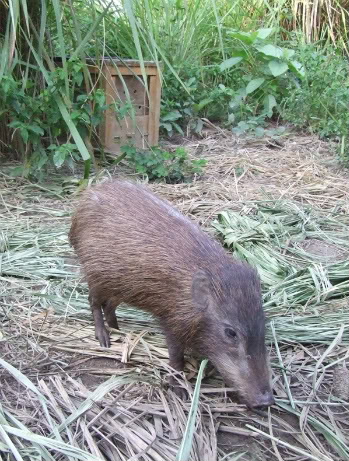 The critically-endangered pygmy hog Porcula salvania (also known as Sus salvanius) is thriving one year after being reintroduced into Sonai Rupai Wildlife Sanctuary in Assam, India. According to researchers with the Durrell Wildlife Conservation Trust (DWCT), surveys and camera traps have shown that two-thirds of the 16 originally released pygmy hogs have survived their first […]
The critically-endangered pygmy hog Porcula salvania (also known as Sus salvanius) is thriving one year after being reintroduced into Sonai Rupai Wildlife Sanctuary in Assam, India. According to researchers with the Durrell Wildlife Conservation Trust (DWCT), surveys and camera traps have shown that two-thirds of the 16 originally released pygmy hogs have survived their first […]
Fish operated on at ZSL London Zoo: Photo
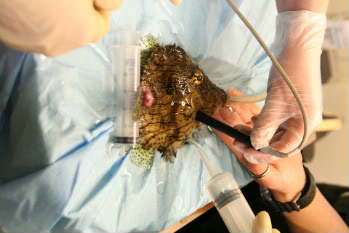 A female prickly leatherjacket triggerfish Chaetodermis penicilligerus underwent an operation to remove a benign tumor from her tail at the Zoological Society of London (ZSL) Zoo. Named Prudence, the fish was given a general anesthetic before the hour-long operation in which she was kept constantly wet. Returned to the zoo’s Aquarium after the operation, Prudence […]
A female prickly leatherjacket triggerfish Chaetodermis penicilligerus underwent an operation to remove a benign tumor from her tail at the Zoological Society of London (ZSL) Zoo. Named Prudence, the fish was given a general anesthetic before the hour-long operation in which she was kept constantly wet. Returned to the zoo’s Aquarium after the operation, Prudence […]
Bronx zoo closes exhibits, evicts hundreds of animals following budget crisis
Following a budget shortfall of 15 million dollars, the Bronx Zoo has announced that it will be closing several exhibits and sending away hundreds of animals. The World of Darkness and the Rare Animal Range will both be closed. Animals from porcupines to guanacos, and Formosan sika deer to sugar gliders will be sent away […]
Flu epidemic killing bonobos in Congo sanctuary
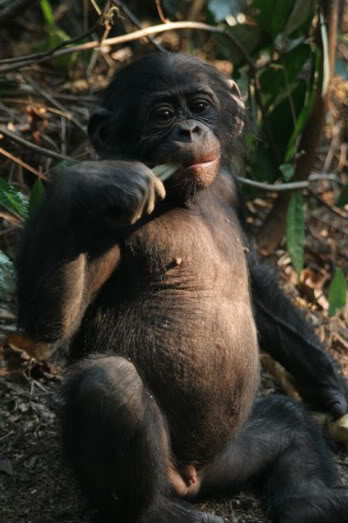 Six bonobos, a species of chimpanzee, have died from a flu epidemic in a month at the Lola Ya Bonobo in the Democratic Republic of Congo (DRC). Ten more have contracted the flu. “There is no fever. Antibiotics don’t do anything. The bonobos have severe respiratory infections and then they can’t breath for 3 days […]
Six bonobos, a species of chimpanzee, have died from a flu epidemic in a month at the Lola Ya Bonobo in the Democratic Republic of Congo (DRC). Ten more have contracted the flu. “There is no fever. Antibiotics don’t do anything. The bonobos have severe respiratory infections and then they can’t breath for 3 days […]
After seizure, gorilla receives MRI scan free of charge
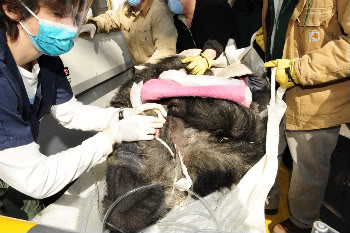 The Wildlife Conservation Society announced today that a 42-year-old western lowland gorilla named Fubo received a free MRI scan after suffering a seizure at his home in the Bronx Zoo’s Congo Gorilla Forest exhibit. The MRI was provided by The Brain Tumor Foundation, which sent a 48-foot-long moveable MRI facility to the zoo. Overseen by […]
The Wildlife Conservation Society announced today that a 42-year-old western lowland gorilla named Fubo received a free MRI scan after suffering a seizure at his home in the Bronx Zoo’s Congo Gorilla Forest exhibit. The MRI was provided by The Brain Tumor Foundation, which sent a 48-foot-long moveable MRI facility to the zoo. Overseen by […]
New York zoos, aquariums saved from funding cut
NY governor to cut zoo and aquarium budgets 55%
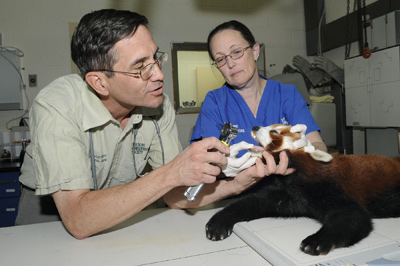
Elephants die significantly earlier in zoos than in wild
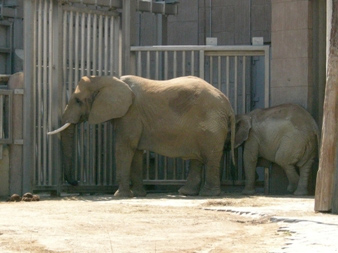 Elephants die significantly earlier in zoos than in wild Elephants die significantly earlier in zoos than in wild Jeremy Hance, mongabay.com December 11, 2008
Elephants die significantly earlier in zoos than in wild Elephants die significantly earlier in zoos than in wild Jeremy Hance, mongabay.com December 11, 2008
Rare rhino rat snake hatches in London zoo
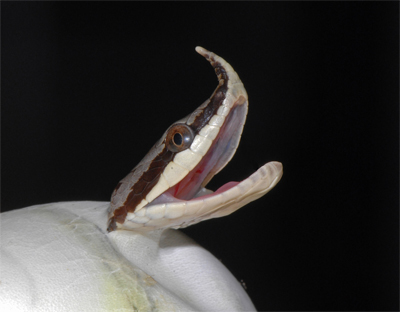 Photos: Rare rhino rat snake hatches in London zoo Rare rhino rat snake hatches in London zoo Jeremy Hance, mongabay.com November 13, 2008
Photos: Rare rhino rat snake hatches in London zoo Rare rhino rat snake hatches in London zoo Jeremy Hance, mongabay.com November 13, 2008
Prioritizing amphibian species for captive breeding to save them from extinction
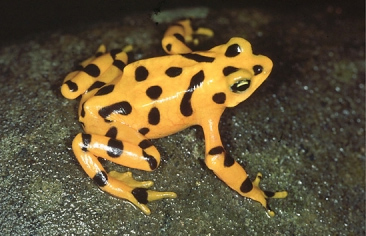 Prioritizing amphibian species for captive breeding to save them from extinction Prioritizing amphibian species for captive breeding to save them from extinction STRI November 19, 2008
Prioritizing amphibian species for captive breeding to save them from extinction Prioritizing amphibian species for captive breeding to save them from extinction STRI November 19, 2008
Pumpkins used for behavioral enrichment of zoo animals
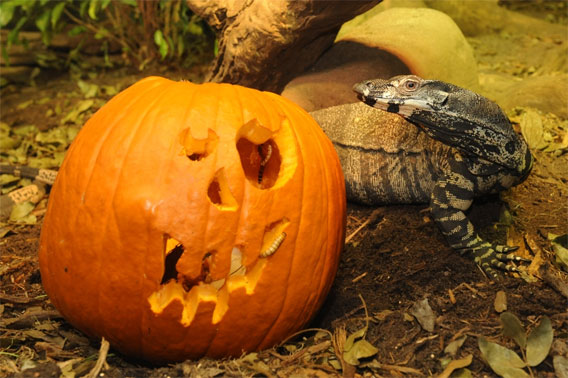 Pumpkins used for behavioral enrichment of zoo animals Pumpkins used for behavioral enrichment of zoo animals mongabay.com October 19, 2008
Pumpkins used for behavioral enrichment of zoo animals Pumpkins used for behavioral enrichment of zoo animals mongabay.com October 19, 2008
Mass amphibian die-offs affect ecosystems
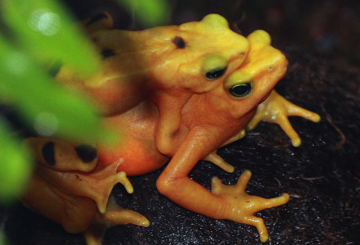 Mass amphibian die-offs affect ecosystems Mass amphibian die-offs affect ecosystems mongabay.com October 18, 2008
Mass amphibian die-offs affect ecosystems Mass amphibian die-offs affect ecosystems mongabay.com October 18, 2008
Armageddon for amphibians? Frog-killing disease jumps Panama Canal
 Armageddon for amphibians? Frog-killing disease jumps Panama Canal Armageddon for amphibians? Frog-killing disease jumps Panama Canal Rhett A. Butler, mongabay.com October 12, 2008
Armageddon for amphibians? Frog-killing disease jumps Panama Canal Armageddon for amphibians? Frog-killing disease jumps Panama Canal Rhett A. Butler, mongabay.com October 12, 2008
Zoos: Why a Revolution is Necessary to Justify Them
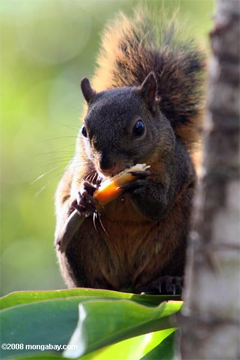 <!DOCTYPE HTML PUBLIC "-//W3C//DTD HTML 3.2//EN"> Zoos: Why a Revolution is Necessary to Justify Them Zoos: Why a Revolution is Necessary to Justify Them Jeremy Leon Hance, mongabay.com October 6, 2008 When the Grey Squirrel Met the Siberian Tiger
<!DOCTYPE HTML PUBLIC "-//W3C//DTD HTML 3.2//EN"> Zoos: Why a Revolution is Necessary to Justify Them Zoos: Why a Revolution is Necessary to Justify Them Jeremy Leon Hance, mongabay.com October 6, 2008 When the Grey Squirrel Met the Siberian Tiger
First captive black rhinos released into the wild in 25 years
 First captive black rhinos released into the wild in 25 years First captive black rhinos released into the wild in 25 years Jeremy Hance, mongabay.com October 3, 2008
First captive black rhinos released into the wild in 25 years First captive black rhinos released into the wild in 25 years Jeremy Hance, mongabay.com October 3, 2008
Logging, wildlife trade drive sun bears toward extinction
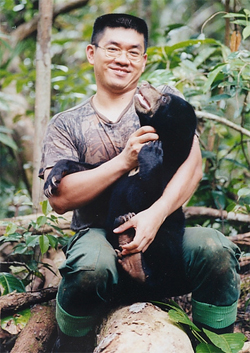 Habitat destruction, logging, wildlife trade drive sun bears toward extinction An Interview with sun bear expert Siew Te Wong:Habitat destruction, logging, wildlife trade drive sun bears toward extinction Rhett A. Butler, mongabay.com September 25, 2008 Industrial logging, large-scale forest conversion for oil palm plantations, and the illegal wildlife trade have left sun bears the rarest […]
Habitat destruction, logging, wildlife trade drive sun bears toward extinction An Interview with sun bear expert Siew Te Wong:Habitat destruction, logging, wildlife trade drive sun bears toward extinction Rhett A. Butler, mongabay.com September 25, 2008 Industrial logging, large-scale forest conversion for oil palm plantations, and the illegal wildlife trade have left sun bears the rarest […]
Photo: commonly-kept gecko was thought to be extinct in the wild
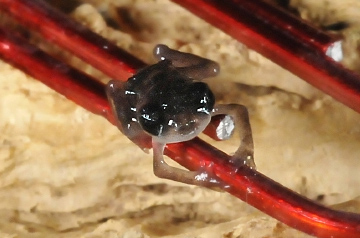 Yellow toad births offer hope for extinct-in-the-wild species Yellow toad births offer hope for extinct-in-the-wild species Rhett A. Butler, mongabay.com September 4, 2008 The birth of Kihansi spray toadlets at the Wildlife Conservation Society’s Bronx Zoo has renewed hopes that the species can someday be successfully reintroduced to its natural habitat in a remote gorge […]
Yellow toad births offer hope for extinct-in-the-wild species Yellow toad births offer hope for extinct-in-the-wild species Rhett A. Butler, mongabay.com September 4, 2008 The birth of Kihansi spray toadlets at the Wildlife Conservation Society’s Bronx Zoo has renewed hopes that the species can someday be successfully reintroduced to its natural habitat in a remote gorge […]
Human-testing for animal medications?
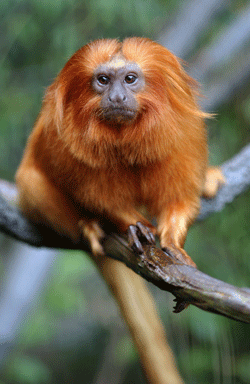 Human medical tests keep some of the world’s smallest monkeys healthy Testing on humans for animal medications? Jeremy Hance, mongabay.com August 6, 2008 Medical advances for humans have largely been dependent on other species: deriving chemical compounds from plants, employing molds for vaccines, or testing drugs on mammals. However, in an intriguing twist the Wildlife […]
Human medical tests keep some of the world’s smallest monkeys healthy Testing on humans for animal medications? Jeremy Hance, mongabay.com August 6, 2008 Medical advances for humans have largely been dependent on other species: deriving chemical compounds from plants, employing molds for vaccines, or testing drugs on mammals. However, in an intriguing twist the Wildlife […]
Australia declares its largest tropical rainforest park
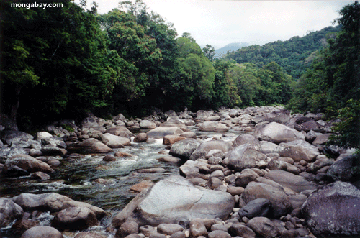 Australia declares its largest tropical rainforest park Australia declares its largest tropical rainforest park mongabay.com August 6, 2008 Autralia will protect its most pristine rainforest a nearly twenty year battle between conservationists and land owners, according to a statement from the government of Queensland. The 160,000-hectare Kulla National Park is located in the McIlwraith Ranges […]
Australia declares its largest tropical rainforest park Australia declares its largest tropical rainforest park mongabay.com August 6, 2008 Autralia will protect its most pristine rainforest a nearly twenty year battle between conservationists and land owners, according to a statement from the government of Queensland. The 160,000-hectare Kulla National Park is located in the McIlwraith Ranges […]
Photos of surgery on an injured red-tailed hawk
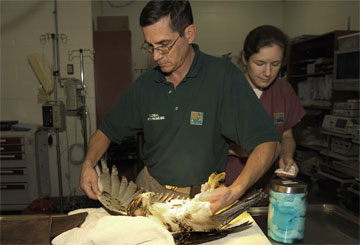 Photos of surgery on a red-tailed hawk Photos of surgery on a red-tailed hawk mongabay.com August 1, 2008 The Wildlife Health Center is a 30,000-square-foot medical and applied research facility located on the grounds of the Bronx Zoo. The facility houses specialized areas for the performance of pathology exams as well as suites for sterile […]
Photos of surgery on a red-tailed hawk Photos of surgery on a red-tailed hawk mongabay.com August 1, 2008 The Wildlife Health Center is a 30,000-square-foot medical and applied research facility located on the grounds of the Bronx Zoo. The facility houses specialized areas for the performance of pathology exams as well as suites for sterile […]
Critically endangered fruit bat born in New York City
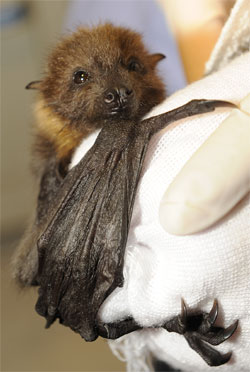 Photo: Critically endangered fruit bat born in New York City Critically endangered fruit bat born in New York City mongabay.com August 1, 2008 A critically endangered fruit bat was born last month at the Bronx Zoo. The female Rodriguez fruit bat was born July 6 and has been named “Buffy” by staff Veterinarians at the […]
Photo: Critically endangered fruit bat born in New York City Critically endangered fruit bat born in New York City mongabay.com August 1, 2008 A critically endangered fruit bat was born last month at the Bronx Zoo. The female Rodriguez fruit bat was born July 6 and has been named “Buffy” by staff Veterinarians at the […]
Rock star or marine biologist? Hans Walters chose both
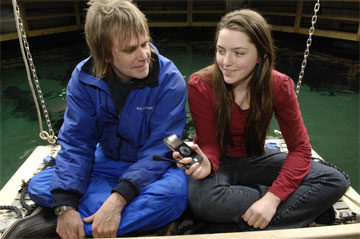 Rock star or marine biologist? How about both Rock star or marine biologist? Hans Walters chose both By Julie and Megan Maher, special to mongabay.com July 31, 2008 There aren’t many who swim with sharks by day and rock out on a stage at night, but Hans Walters does just that! A man with two […]
Rock star or marine biologist? How about both Rock star or marine biologist? Hans Walters chose both By Julie and Megan Maher, special to mongabay.com July 31, 2008 There aren’t many who swim with sharks by day and rock out on a stage at night, but Hans Walters does just that! A man with two […]
Photo: World’s oldest Fly River Turtle turns 50
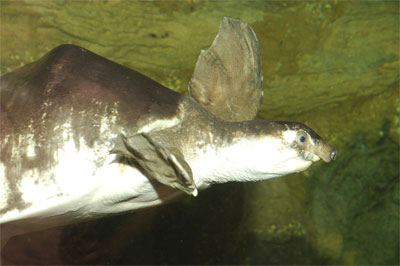 Photo: World’s oldest Fly River Turtle turns 50 Photo: World’s oldest Fly River Turtle turns 50 mongabay.com July 31, 2008 Last Saturday “Freddy”, a Fly River Turtle, turned 50. He is the oldest known individual of his species. Staff from the Wildlife Conservation Society’s Bronx Zoo Reptile Department treated Freddy to a turtle biscuit and […]
Photo: World’s oldest Fly River Turtle turns 50 Photo: World’s oldest Fly River Turtle turns 50 mongabay.com July 31, 2008 Last Saturday “Freddy”, a Fly River Turtle, turned 50. He is the oldest known individual of his species. Staff from the Wildlife Conservation Society’s Bronx Zoo Reptile Department treated Freddy to a turtle biscuit and […]
Meet Spook, the world’s oldest gray seal
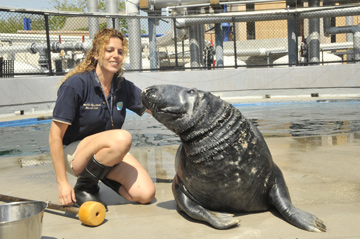 Meet Spook, the world’s oldest gray seal Spook, the gray seal, is a living legend By Julie and Megan Maher and Joanne Sottile special to mongabay.com July 2, 2008 Bringing Spook’s story to life through photographs and words, they hope to inspire the world to know that animal as well as human care has no […]
Meet Spook, the world’s oldest gray seal Spook, the gray seal, is a living legend By Julie and Megan Maher and Joanne Sottile special to mongabay.com July 2, 2008 Bringing Spook’s story to life through photographs and words, they hope to inspire the world to know that animal as well as human care has no […]
Geriatric turtle sex only hope for world’s rarest reptile
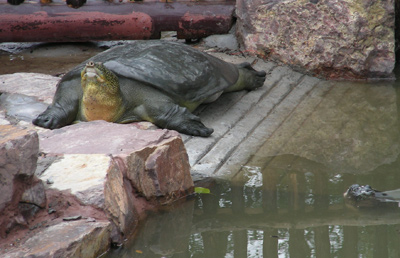 Geriatric turtle sex only hope for world’s rarest reptile Geriatric turtle sex only hope for world’s rarest reptile mongabay.com May 21, 2008 With only four individuals of the Yangtze giant softshell turtle left on Earth—one in the wild and three in captivity—conservationists have launched a desperate attempt to save the species from extinction. The Wildlife […]
Geriatric turtle sex only hope for world’s rarest reptile Geriatric turtle sex only hope for world’s rarest reptile mongabay.com May 21, 2008 With only four individuals of the Yangtze giant softshell turtle left on Earth—one in the wild and three in captivity—conservationists have launched a desperate attempt to save the species from extinction. The Wildlife […]
Naming rights for newly discovered ‘walking frog’ to be auctioned for conservation
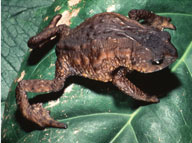 Naming rights for newly discovered ‘walking frog’ to be auctioned for conservation Naming rights for newly discovered ‘walking frog’ to be auctioned for conservation mongabay.com May 20, 2008 The Amphibian Ark, an initiative to save disappearing amphibians from extinction, will auction of the naming rights of a newly discovered ‘walking frog’ in Ecuador to raise […]
Naming rights for newly discovered ‘walking frog’ to be auctioned for conservation Naming rights for newly discovered ‘walking frog’ to be auctioned for conservation mongabay.com May 20, 2008 The Amphibian Ark, an initiative to save disappearing amphibians from extinction, will auction of the naming rights of a newly discovered ‘walking frog’ in Ecuador to raise […]
Rare frog breeds in captivity for the first time
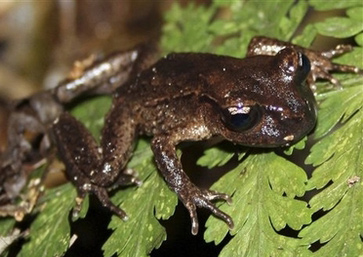 Rare frog breeds in captivity for the first time Rare frog breeds in captivity for the first time mongabay.com March 3, 2008 A rare species of frog has been found breeding in captivity in New Zealand, reports the Associated Press. The finding offers hope that the species’ vulnerability to extinction can be reduced. 13 Maud […]
Rare frog breeds in captivity for the first time Rare frog breeds in captivity for the first time mongabay.com March 3, 2008 A rare species of frog has been found breeding in captivity in New Zealand, reports the Associated Press. The finding offers hope that the species’ vulnerability to extinction can be reduced. 13 Maud […]
Saving forgotten species: An interview with Carly Waterman, Program Coordinator of EDGE
 Saving forgotten species Saving forgotten species An interview with Carly Waterman, Program Coordinator of EDGE Jeremy Hance, mongabay.com February 28, 2008 In January 2007 a new conservation initiative arrived with an unusual level of media attention. The attention was due to the fact that the organization was doing things differently—very differently. Instead of focusing their […]
Saving forgotten species Saving forgotten species An interview with Carly Waterman, Program Coordinator of EDGE Jeremy Hance, mongabay.com February 28, 2008 In January 2007 a new conservation initiative arrived with an unusual level of media attention. The attention was due to the fact that the organization was doing things differently—very differently. Instead of focusing their […]
A Doomsday Vault for Frogs?
 A Doomsday Vault for Frogs? A Doomsday Vault for Frogs? mongabay.com February 27, 2008 The Amphibian Ark, a doomsday vault for amphibians, will highlight Leap Day, February 29th, to recognize 2008 as the Year of the Frog. The campaign seeks to raise awareness of the global plight of frogs and other amphibians threatened by habitat […]
A Doomsday Vault for Frogs? A Doomsday Vault for Frogs? mongabay.com February 27, 2008 The Amphibian Ark, a doomsday vault for amphibians, will highlight Leap Day, February 29th, to recognize 2008 as the Year of the Frog. The campaign seeks to raise awareness of the global plight of frogs and other amphibians threatened by habitat […]
Photos: Top 100 most threatened amphibians named
- As amphibians decline worldwide, organization releases list of the 100 most endangered and unique.
Two-thirds of carnivores die when reintroduced into the wild
 Lions in South Africa Carnivores reintroduced to the wild as part of conservation programs fare poorly, reports a new study published online in the journal Biological Conservation. The study, which reviewed 45 case studies involving 17 carnivore species, found that only 30 percent of captive animals released survived. Over half the deaths were caused by […]
Lions in South Africa Carnivores reintroduced to the wild as part of conservation programs fare poorly, reports a new study published online in the journal Biological Conservation. The study, which reviewed 45 case studies involving 17 carnivore species, found that only 30 percent of captive animals released survived. Over half the deaths were caused by […]
Photos: rare aye-aye lemur born at Bristol Zoo Gardens
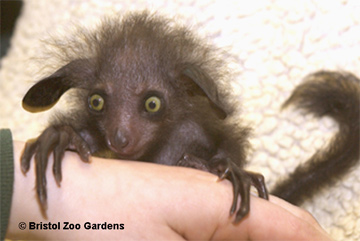 Photos: rare aye-aye lemur born at Bristol Zoo Gardens Photos: rare aye-aye lemur born at Bristol Zoo Gardens Jeremy Hance, mongabay.com January 16, 2008 Photos courtesy of Bristol Zoo Gardens Born on November 23rd, 2007 at Bristol Zoo Gardens this baby Aye-aye was given the name Raz. According to the EDGE (Evolutionary Distinct and Globally […]
Photos: rare aye-aye lemur born at Bristol Zoo Gardens Photos: rare aye-aye lemur born at Bristol Zoo Gardens Jeremy Hance, mongabay.com January 16, 2008 Photos courtesy of Bristol Zoo Gardens Born on November 23rd, 2007 at Bristol Zoo Gardens this baby Aye-aye was given the name Raz. According to the EDGE (Evolutionary Distinct and Globally […]
Male lion licking a female’s head
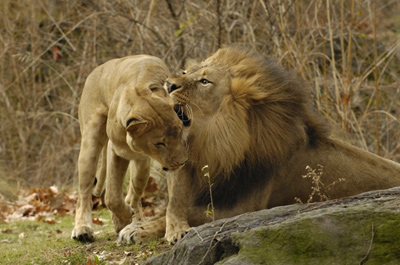 Photo: Male lion licking a female’s head Photo: Male lion licking a female’s head Julie Larsen Maher, special to mongabay.com January 8, 2008 A hippo photo safari by Julie Larsen Maher of the Wildlife Conservation Society Bronx Zoo’s newest lions, male M’wasi and female Sukari, have recently been introduced on the Zoo’s Africa Plains. A […]
Photo: Male lion licking a female’s head Photo: Male lion licking a female’s head Julie Larsen Maher, special to mongabay.com January 8, 2008 A hippo photo safari by Julie Larsen Maher of the Wildlife Conservation Society Bronx Zoo’s newest lions, male M’wasi and female Sukari, have recently been introduced on the Zoo’s Africa Plains. A […]
As amphibians leap toward extinction, alliance pushes “The Year of the Frog”
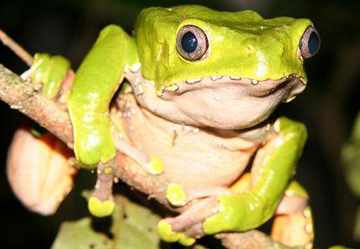 As amphibians leap toward extinction, alliance pushes “The Year of the Frog” As amphibians leap toward extinction, alliance pushes “The Year of the Frog” Rhett A. Butler, mongabay.com December 31, 2007 With amphibians experiencing dramatic die-offs in pristine habitats worldwide, an alliance of zoos, botanical gardens and aquariums has launched a desperate public appeal to […]
As amphibians leap toward extinction, alliance pushes “The Year of the Frog” As amphibians leap toward extinction, alliance pushes “The Year of the Frog” Rhett A. Butler, mongabay.com December 31, 2007 With amphibians experiencing dramatic die-offs in pristine habitats worldwide, an alliance of zoos, botanical gardens and aquariums has launched a desperate public appeal to […]
Photo: African wild dog pup gets a health check up
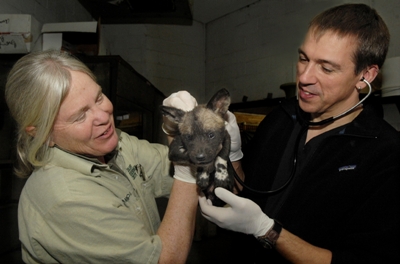 Photo: African wild dog pup gets a health check up Photo: African wild dog pup gets a health check up mongabay.com December 14, 2007 African wild dogs are among the most threatened canines on the planet. Living in the savannas of sub-Saharan Africa, wild dogs are threatened by habitat loss and killing as pests by […]
Photo: African wild dog pup gets a health check up Photo: African wild dog pup gets a health check up mongabay.com December 14, 2007 African wild dogs are among the most threatened canines on the planet. Living in the savannas of sub-Saharan Africa, wild dogs are threatened by habitat loss and killing as pests by […]
Photo of the Venomous Gila Monster Getting an X-ray
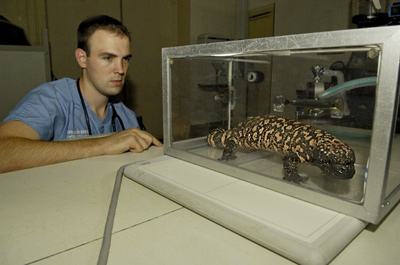 Photo of the Venomous Gila Monster Getting an X-ray Photo of the Venomous Gila Monster Getting an X-ray mongabay.com November 28, 2007 Dr. Tim Georoff, a veterinarian for the Wildlife Conservation Society’s Bronx Zoo, handles this venomous lizard with great care as he prepares this female for an radiograph (X-ray). The Plexiglass housing is part […]
Photo of the Venomous Gila Monster Getting an X-ray Photo of the Venomous Gila Monster Getting an X-ray mongabay.com November 28, 2007 Dr. Tim Georoff, a veterinarian for the Wildlife Conservation Society’s Bronx Zoo, handles this venomous lizard with great care as he prepares this female for an radiograph (X-ray). The Plexiglass housing is part […]
Feeds: news | india | latam | brasil | indonesia
 Can a sanctuary in Indonesia keep the world’s most imperiled rhino from extinction? “One percent of the world’s population,” veterinarian Zulfi Arsan says as he nods towards Bina, a 714-kilogram (1,574-pound), 30-year-old female Sumatran rhinoceros leisurely crunching branches whole. A gentle and easygoing rhino, pink-hued Bina doesn’t seem to mind the two-legged hominids snapping pictures […]
Can a sanctuary in Indonesia keep the world’s most imperiled rhino from extinction? “One percent of the world’s population,” veterinarian Zulfi Arsan says as he nods towards Bina, a 714-kilogram (1,574-pound), 30-year-old female Sumatran rhinoceros leisurely crunching branches whole. A gentle and easygoing rhino, pink-hued Bina doesn’t seem to mind the two-legged hominids snapping pictures […]BenTapley.jpg) The new Annam leaf turtle exhibit at the London Zoo. Photo by: Ben Tapley/ZSL. Usually animal pens in zoos are designed to resemble a species’ native habitat: lions in sprawling savanna, pandas in bamboo forests, and crocodiles in mangroves. But a new pen at the Zoological Society of London (ZSL)’s London Zoo is meant to […]
The new Annam leaf turtle exhibit at the London Zoo. Photo by: Ben Tapley/ZSL. Usually animal pens in zoos are designed to resemble a species’ native habitat: lions in sprawling savanna, pandas in bamboo forests, and crocodiles in mangroves. But a new pen at the Zoological Society of London (ZSL)’s London Zoo is meant to […] Malaysian officials admit the Bornean rhino may only be represented by three surviving captive animals Tam, here at Borneo Rhino Sanctuary in Sabah, may be the world’s last male Bornean rhino and one of the last Sumatran rhinos. Photo by: Jeremy Hance. There are no Sumatran rhinos left in the wild in the Malaysian state […]
Malaysian officials admit the Bornean rhino may only be represented by three surviving captive animals Tam, here at Borneo Rhino Sanctuary in Sabah, may be the world’s last male Bornean rhino and one of the last Sumatran rhinos. Photo by: Jeremy Hance. There are no Sumatran rhinos left in the wild in the Malaysian state […] As if news for rhinos couldn’t get any worse: this weekend, Angalifu, died a the San Diego Zoo. Forty four-year-old Angalifu was a male northern white rhino (Ceratotherium simum cottoni) and his death means only five of this subspecies remains on the planet. Angalifu’s death, which keepers suspect was simply from old age, follows soon […]
As if news for rhinos couldn’t get any worse: this weekend, Angalifu, died a the San Diego Zoo. Forty four-year-old Angalifu was a male northern white rhino (Ceratotherium simum cottoni) and his death means only five of this subspecies remains on the planet. Angalifu’s death, which keepers suspect was simply from old age, follows soon […] Rhino conservation suffered another tragic setback this weekend with the sudden death of Suni, a male northern white rhinoceros (Ceratotherium simum cottoni) at the Ol Pejeta Conservancy in Kenya. Suni’s passing means there are only six northern white rhinos left in the world, and only one breeding male. “Consequently the species now stands at the […]
Rhino conservation suffered another tragic setback this weekend with the sudden death of Suni, a male northern white rhinoceros (Ceratotherium simum cottoni) at the Ol Pejeta Conservancy in Kenya. Suni’s passing means there are only six northern white rhinos left in the world, and only one breeding male. “Consequently the species now stands at the […] An hirola in Tsavo East National Park. Photo by: James Probert. In 2008 and 2009, severe droughts killed numerous elephants, hippos and rhinos in Kenya’s Tsavo East National Park. But the tiny population of the Critically Endangered Hunter’s hartebeest or hirola (Beatragus hunteri) survived without any catastrophic consequences, a recent study has found. “Hirola are […]
An hirola in Tsavo East National Park. Photo by: James Probert. In 2008 and 2009, severe droughts killed numerous elephants, hippos and rhinos in Kenya’s Tsavo East National Park. But the tiny population of the Critically Endangered Hunter’s hartebeest or hirola (Beatragus hunteri) survived without any catastrophic consequences, a recent study has found. “Hirola are […] How the world’s best zoos are working to save biodiversity in an age of extinction. Tiger meets human at the Minnesota Zoo. Physical spaces where people can easily encounter and connect with wild species, zoos and aquariums are unique institutions. Yet in an age of environmental crises, are they doing enough to save species from […]
How the world’s best zoos are working to save biodiversity in an age of extinction. Tiger meets human at the Minnesota Zoo. Physical spaces where people can easily encounter and connect with wild species, zoos and aquariums are unique institutions. Yet in an age of environmental crises, are they doing enough to save species from […] Among the largest and most endangered crocodilians in the world, the gharial (Gavialis gangeticus) is on the verge of extinction today. This harmless fish-eating crocodile has fewer than 200 adult breeding individuals in the wild, their numbers having plummeted rapidly over the past few decades due to destruction of their riverine habitats, entanglement in fishing […]
Among the largest and most endangered crocodilians in the world, the gharial (Gavialis gangeticus) is on the verge of extinction today. This harmless fish-eating crocodile has fewer than 200 adult breeding individuals in the wild, their numbers having plummeted rapidly over the past few decades due to destruction of their riverine habitats, entanglement in fishing […] Conservation for Sumatran rhinos suffered another blow last week, only days after Suci—one of only ten rhinos in captive breeding efforts—died at Cincinnati Zoo. Scientists in the Malaysian state of Sabah revealed that a newly captured female, Iman, suffers from an assortment of tumors in her uterus, hugely complicating reproduction efforts. Conservationists believe less than […]
Conservation for Sumatran rhinos suffered another blow last week, only days after Suci—one of only ten rhinos in captive breeding efforts—died at Cincinnati Zoo. Scientists in the Malaysian state of Sabah revealed that a newly captured female, Iman, suffers from an assortment of tumors in her uterus, hugely complicating reproduction efforts. Conservationists believe less than […] Just over two weeks ago, conservationists in the Malaysian state of Sabah managed to finally catch a wild Sumatran rhino female after months of failed attempts; the female, named Iman, was quickly helicoptered to a semi-wild rhino reserve in hopes that she may breed with the resident male, Tam. But following such hopeful events, comes […]
Just over two weeks ago, conservationists in the Malaysian state of Sabah managed to finally catch a wild Sumatran rhino female after months of failed attempts; the female, named Iman, was quickly helicoptered to a semi-wild rhino reserve in hopes that she may breed with the resident male, Tam. But following such hopeful events, comes […] Iman wallowing in the mud. Photo by: John Payne/BORA. Hopes for one of the world’s most imperiled megafauna rose this month when wildlife conservationists succeeded in catching a female Sumatran rhino named Iman in the Malaysian state of Sabah. The female, which experts believe to be fertile, has since been successfully transferred via helicopter to […]
Iman wallowing in the mud. Photo by: John Payne/BORA. Hopes for one of the world’s most imperiled megafauna rose this month when wildlife conservationists succeeded in catching a female Sumatran rhino named Iman in the Malaysian state of Sabah. The female, which experts believe to be fertile, has since been successfully transferred via helicopter to […] Conservationists have succeeded in catching a wild Sumatran rhino in the Malaysia state of Sabah in Borneo, according to local media reports. Officials are currently transferring the rhino, an unnamed female, to a rhino sanctuary in Tabin National Park where experts will attempt to mate her with the resident male, Tam. The Sumatran rhino (Dicerorhinus […]
Conservationists have succeeded in catching a wild Sumatran rhino in the Malaysia state of Sabah in Borneo, according to local media reports. Officials are currently transferring the rhino, an unnamed female, to a rhino sanctuary in Tabin National Park where experts will attempt to mate her with the resident male, Tam. The Sumatran rhino (Dicerorhinus […]
 Mangarahara cichlid (Ptychochromis Insolitus). (c) ZSL Researchers are celebrating after an urgent global search turned up a female mate for a fish that is on the brink of extinction. In May, aquarists at ZSL London Zoo launched a worldwide appeal to find a female Mangarahara cichlid (Ptychochromis Insolitus), a fish that was feared to be […]
Mangarahara cichlid (Ptychochromis Insolitus). (c) ZSL Researchers are celebrating after an urgent global search turned up a female mate for a fish that is on the brink of extinction. In May, aquarists at ZSL London Zoo launched a worldwide appeal to find a female Mangarahara cichlid (Ptychochromis Insolitus), a fish that was feared to be […] The unmistakable northern bald ibis (Geronticus eremita). Photo by: Waldrappteam. The northern bald ibis (Geronticus eremita), also called the hermit ibis or waldrapp, is a migratory bird. Once, the bald ibis lived in the Middle East, northern Africa and southern and central Europe, but due to hunting, loss of habitat and pesticide-use, the birds disappeared […]
The unmistakable northern bald ibis (Geronticus eremita). Photo by: Waldrappteam. The northern bald ibis (Geronticus eremita), also called the hermit ibis or waldrapp, is a migratory bird. Once, the bald ibis lived in the Middle East, northern Africa and southern and central Europe, but due to hunting, loss of habitat and pesticide-use, the birds disappeared […] After this story was published, Dallas World Aquarium (DWA) complained that its side of the story had not been fairly represented, that elements of our reporting contained inaccuracies and made legal threats against Mongabay. As a result of the new input we have added a series of annotations, correcting several points and adding DWA’s views. […]
After this story was published, Dallas World Aquarium (DWA) complained that its side of the story had not been fairly represented, that elements of our reporting contained inaccuracies and made legal threats against Mongabay. As a result of the new input we have added a series of annotations, correcting several points and adding DWA’s views. […] In 2010, Bulgarian airport authorities confiscated 108 African grey parrots (Psittacus erithacus) from a smuggler. Last month, the 28 parrots who survived the stress of being stuffed into dog kennels, constantly handled by humans, and the absence of their native habitat, completed their three-year journey to freedom. The journey began late one afternoon in 2010, […]
In 2010, Bulgarian airport authorities confiscated 108 African grey parrots (Psittacus erithacus) from a smuggler. Last month, the 28 parrots who survived the stress of being stuffed into dog kennels, constantly handled by humans, and the absence of their native habitat, completed their three-year journey to freedom. The journey began late one afternoon in 2010, […] In a large room that used to house aquatic mammals at the Minnesota Zoo, Erik Runquist holds up a vial and says, “Here are its eggs.” I peer inside and see small specks, pale with a dot of brown at the top; they look like a single grain of cous cous or quinoa. Runquist explains […]
In a large room that used to house aquatic mammals at the Minnesota Zoo, Erik Runquist holds up a vial and says, “Here are its eggs.” I peer inside and see small specks, pale with a dot of brown at the top; they look like a single grain of cous cous or quinoa. Runquist explains […].600.jpg) The 2013 Zoos and Aquariums: Committing to Conservation (ZACC) conference runs from July 8th – July 12th in Des Moines, Iowa, hosted by the Blank Park Zoo. Ahead of the event, Mongabay.com is running a series of Q&As with presenters. For more interviews, please see our ZACC feed. Red wolf: after going extinct in the […]
The 2013 Zoos and Aquariums: Committing to Conservation (ZACC) conference runs from July 8th – July 12th in Des Moines, Iowa, hosted by the Blank Park Zoo. Ahead of the event, Mongabay.com is running a series of Q&As with presenters. For more interviews, please see our ZACC feed. Red wolf: after going extinct in the […] A new study argues for treating endangered Sumatran populations in Borneo and Sumatra as “a single conservation unit”, lending academic support to a controversial proposal to move wild rhinos from Malaysia to Indonesia. The paper, authored by an international team of rhino experts and published in the journal Oryx, says that genetic differences between the […]
A new study argues for treating endangered Sumatran populations in Borneo and Sumatra as “a single conservation unit”, lending academic support to a controversial proposal to move wild rhinos from Malaysia to Indonesia. The paper, authored by an international team of rhino experts and published in the journal Oryx, says that genetic differences between the […] Aquarists at ZSL London Zoo have launched a worldwide appeal to find a female mate for a fish species that is believed to have gone extinct in the wild. The fish, Mangarahara cichlid (Ptychochromis Insolitus), was once found in the Mangarahara River in Madagascar, but dams have dried up its habitat. The last two known […]
Aquarists at ZSL London Zoo have launched a worldwide appeal to find a female mate for a fish species that is believed to have gone extinct in the wild. The fish, Mangarahara cichlid (Ptychochromis Insolitus), was once found in the Mangarahara River in Madagascar, but dams have dried up its habitat. The last two known […] After a final sighting in 1991, the Madagascar pochard was thought to have vanished for good. But this diving duck was rediscovered in 2006 when a flock of 22 individuals was found on Lake Matsaborimena in northern Madagascar by conservationists during an expedition. Soon after Madagascar pochard eggs were taken and incubated in a joint […]
After a final sighting in 1991, the Madagascar pochard was thought to have vanished for good. But this diving duck was rediscovered in 2006 when a flock of 22 individuals was found on Lake Matsaborimena in northern Madagascar by conservationists during an expedition. Soon after Madagascar pochard eggs were taken and incubated in a joint […] Conservationists and officials meeting last month at a rhino crisis summit in Singapore agreed to a radical plan to loan Sumatran rhinos between nations if it means saving the critically endangered species from extinction. The proposal, which could still be thwarted by red tape and political opposition, could lead Malaysia to send some of its […]
Conservationists and officials meeting last month at a rhino crisis summit in Singapore agreed to a radical plan to loan Sumatran rhinos between nations if it means saving the critically endangered species from extinction. The proposal, which could still be thwarted by red tape and political opposition, could lead Malaysia to send some of its […] How many animal individuals are needed to ensure a species isn’t doomed to extinction even with our best conservation efforts? While no one knows exactly, scientists have created complex models to attempt an answer. They call this important threshold the “minimum viable population” and have spilled plenty of ink trying to decipher estimates, many of […]
How many animal individuals are needed to ensure a species isn’t doomed to extinction even with our best conservation efforts? While no one knows exactly, scientists have created complex models to attempt an answer. They call this important threshold the “minimum viable population” and have spilled plenty of ink trying to decipher estimates, many of […] Less than 100 Sumatran rhinos survive in the world today, according to a bleak new population estimate by experts. The last survey in 2008 estimated that around 250 Sumatran rhinos survived, but that estimate now appears optimistic and has been slashed by 60 percent. However conservationists are responding with a major new agreement between the […]
Less than 100 Sumatran rhinos survive in the world today, according to a bleak new population estimate by experts. The last survey in 2008 estimated that around 250 Sumatran rhinos survived, but that estimate now appears optimistic and has been slashed by 60 percent. However conservationists are responding with a major new agreement between the […] For the Wildlife Conservation Society’s new CEO, scientific principles and working partnerships are key to conservation. A Man of Science: Dr Cristian Samper, CEO of the WCS. The Wildlife Conservation Society (WCS) is one of the world’s leading environmental organizations. Founded in 1895 (originally as the New York Zoological Society), the WCS manages 200 million […]
For the Wildlife Conservation Society’s new CEO, scientific principles and working partnerships are key to conservation. A Man of Science: Dr Cristian Samper, CEO of the WCS. The Wildlife Conservation Society (WCS) is one of the world’s leading environmental organizations. Founded in 1895 (originally as the New York Zoological Society), the WCS manages 200 million […] Barbary sheep in Tennoji Zoo. Photo by: Kuribo. The Barbary sheep (Ammotragus lervia), or aoudad, is a goat-antelope found in northern Africa. It is currently listed as Vulnerable by the IUCN Red List, with populations imperiled by hunting, habitat loss, and competition with livestock. Still little is known about its remaining population, prompting scientists in […]
Barbary sheep in Tennoji Zoo. Photo by: Kuribo. The Barbary sheep (Ammotragus lervia), or aoudad, is a goat-antelope found in northern Africa. It is currently listed as Vulnerable by the IUCN Red List, with populations imperiled by hunting, habitat loss, and competition with livestock. Still little is known about its remaining population, prompting scientists in […] Australian scientists have produced cloned embryos of an extinct species of frog known for its strange reproductive behavior, reports the University of New South Wales. The amphibian, the gastric-brooding frog (Rheobatrachus silus), one of only two species that swallowed its eggs, brooded the young in its stomach, and gave birth through its mouth. But it […]
Australian scientists have produced cloned embryos of an extinct species of frog known for its strange reproductive behavior, reports the University of New South Wales. The amphibian, the gastric-brooding frog (Rheobatrachus silus), one of only two species that swallowed its eggs, brooded the young in its stomach, and gave birth through its mouth. But it […] World Pangolin Day is celebrated this weekend: Saturday, February 16th, 2013 Last year tens-of-thousands of elephants and hundreds of rhinos were butchered to feed the growing appetite of the illegal wildlife trade. This black market, largely centered in East Asia, also devoured tigers, sharks, leopards, turtles, snakes, and hundreds of other animals. Estimated at $19 […]
World Pangolin Day is celebrated this weekend: Saturday, February 16th, 2013 Last year tens-of-thousands of elephants and hundreds of rhinos were butchered to feed the growing appetite of the illegal wildlife trade. This black market, largely centered in East Asia, also devoured tigers, sharks, leopards, turtles, snakes, and hundreds of other animals. Estimated at $19 […] Behind bars and waiting for science: the power of genetic testing for the Addis Fifteen. Male and female Addis lions in the Addis Ababa Lion Zoo. Photo courtesy of: Klaus Eulenberger. They languished behind bars in squalid conditions, their very survival in jeopardy. Outside, an international team of advocates strove to bring worldwide attention to […]
Behind bars and waiting for science: the power of genetic testing for the Addis Fifteen. Male and female Addis lions in the Addis Ababa Lion Zoo. Photo courtesy of: Klaus Eulenberger. They languished behind bars in squalid conditions, their very survival in jeopardy. Outside, an international team of advocates strove to bring worldwide attention to […] Chinese Yellow-headed Box Turtle. Photo by Julie Larsen Maher of WCS Turtle conservationists received some good news this week when five critically endangered Chinese yellow-headed box turtles hatched at Wildlife Conservation Society’s Bronx Zoo. The breeding program is part of WCS’s conservation initiative that targets half the world’s 25 most critically endangered turtle species. With […]
Chinese Yellow-headed Box Turtle. Photo by Julie Larsen Maher of WCS Turtle conservationists received some good news this week when five critically endangered Chinese yellow-headed box turtles hatched at Wildlife Conservation Society’s Bronx Zoo. The breeding program is part of WCS’s conservation initiative that targets half the world’s 25 most critically endangered turtle species. With […] Jon Forrest Dohlin, director of the WCS New York Aquarium, surveying a sea lion exhibit while walking through flood waters. Photo by Julie Larsen Maher of WCS The Wildlife Conservation Society (WCS) today released pictures showing damage caused earlier this week at the New York Aquarium by Hurricane Sandy. The photos show extensive flooding in […]
Jon Forrest Dohlin, director of the WCS New York Aquarium, surveying a sea lion exhibit while walking through flood waters. Photo by Julie Larsen Maher of WCS The Wildlife Conservation Society (WCS) today released pictures showing damage caused earlier this week at the New York Aquarium by Hurricane Sandy. The photos show extensive flooding in […] A captive Kihansi spray toad at the WCS Bronx Zoo. Photo by: Rhett A. Butler. In 1996 scientists discovered a new species of dwarf toad: the Kihansi spray toad (Nectophrynoides asperginis). Although surviving on only two hectares near the Kihansi Gorge in Tanzania, the toads proved populous: around 17,000 individuals crowded the smallest known habitat […]
A captive Kihansi spray toad at the WCS Bronx Zoo. Photo by: Rhett A. Butler. In 1996 scientists discovered a new species of dwarf toad: the Kihansi spray toad (Nectophrynoides asperginis). Although surviving on only two hectares near the Kihansi Gorge in Tanzania, the toads proved populous: around 17,000 individuals crowded the smallest known habitat […] Update: New York Aquarium closed indefinitely The WCS New York Aquarium sits on the boardwalk of Coney Island. Photo by: David Shankbone. Hurricane Sandy, which brought storm surges that reportedly reached 14 feet to New York City, has put the Wildlife Conservation Society’s New York Aquarium “under water,” according to a statement from the organization. […]
Update: New York Aquarium closed indefinitely The WCS New York Aquarium sits on the boardwalk of Coney Island. Photo by: David Shankbone. Hurricane Sandy, which brought storm surges that reportedly reached 14 feet to New York City, has put the Wildlife Conservation Society’s New York Aquarium “under water,” according to a statement from the organization. […] Blue iguana in Queen Elizabeth II Botanic Park. Photo by: Lhb1239. The wild blue iguana population has increased by at least 15 times in the last ten years, prompting the IUCN Red List to move the species from Critically Endangered to just Endangered. A targeted, ambitious conservation program, headed by the Blue Iguana Recovery Team, […]
Blue iguana in Queen Elizabeth II Botanic Park. Photo by: Lhb1239. The wild blue iguana population has increased by at least 15 times in the last ten years, prompting the IUCN Red List to move the species from Critically Endangered to just Endangered. A targeted, ambitious conservation program, headed by the Blue Iguana Recovery Team, […] Eight week old pygmy hippo calf, Georgina, born at Zoological Society of London (ZSL) Whipsnade Zoo. Photo courtesy of ZSL Whipsnade Zoo. A new pygmy hippo calf has been born at the Zoological Society of London (ZSL) Whipsnade Zoo. Named Georgina, the calf is the second for parents Flora and Tapon. Found in the rainforests […]
Eight week old pygmy hippo calf, Georgina, born at Zoological Society of London (ZSL) Whipsnade Zoo. Photo courtesy of ZSL Whipsnade Zoo. A new pygmy hippo calf has been born at the Zoological Society of London (ZSL) Whipsnade Zoo. Named Georgina, the calf is the second for parents Flora and Tapon. Found in the rainforests […] Three-week old Grevy’s zebra at the Zoological Society of London’s (ZSL) Whipsnade Zoo. Photo by: ZSL. Not only is the Grevy’s zebra (Equus grevyi) the biggest of the three zebra species, it is also the world’s largest wild horse species. Once roaming throughout the horn of Africa, today the species is confined to a few […]
Three-week old Grevy’s zebra at the Zoological Society of London’s (ZSL) Whipsnade Zoo. Photo by: ZSL. Not only is the Grevy’s zebra (Equus grevyi) the biggest of the three zebra species, it is also the world’s largest wild horse species. Once roaming throughout the horn of Africa, today the species is confined to a few […] Two blue-throated macaws perch on a branch in the historic aviary at the Wildlife Conservation Society’s Queens Zoo. Photo by: Julie Larsen Maher. Found in only one location in northern Bolivia, the blue-throated macaw (Ara glaucogularis) is thought to number little more than 100 individuals in the wild. However the species is protected from utter […]
Two blue-throated macaws perch on a branch in the historic aviary at the Wildlife Conservation Society’s Queens Zoo. Photo by: Julie Larsen Maher. Found in only one location in northern Bolivia, the blue-throated macaw (Ara glaucogularis) is thought to number little more than 100 individuals in the wild. However the species is protected from utter […] Orange-tailed skink hatchlings meet their match in a matchstick. Photo courtesy of the Durrell Wildlife Conservation Trust (DWCT). Three female orange-tailed skinks skinks have produced 16 skink babies in just four months, according to the Durrell Wildlife Conservation Trust (DWCT), which is captive breeding the Critically Endangered species. The breeding efforts are all the more […]
Orange-tailed skink hatchlings meet their match in a matchstick. Photo courtesy of the Durrell Wildlife Conservation Trust (DWCT). Three female orange-tailed skinks skinks have produced 16 skink babies in just four months, according to the Durrell Wildlife Conservation Trust (DWCT), which is captive breeding the Critically Endangered species. The breeding efforts are all the more […] This African penguin chick is the first one to be born at the Wildlife Conservation Society’s (WCS) New York Aquarium in 15 years. Photo by: Julie Larsen Maher. Found along the coast of southern Africa, the African penguin (Spheniscus demersus) is listed as Endangered by the IUCN Red List largely due to overfishing, which is […]
This African penguin chick is the first one to be born at the Wildlife Conservation Society’s (WCS) New York Aquarium in 15 years. Photo by: Julie Larsen Maher. Found along the coast of southern Africa, the African penguin (Spheniscus demersus) is listed as Endangered by the IUCN Red List largely due to overfishing, which is […] A newborn greater bamboo lemur baby at the Port Lympne Wild Animal Park. Photo by: Dave Rolfe. Greater bamboo lemurs (Prolemur simus) are one of over a hundred lemur species found only on the island of Madagascar. Listed as Critically Endangered, there are only around 150 individuals known in the wild, making them one of […]
A newborn greater bamboo lemur baby at the Port Lympne Wild Animal Park. Photo by: Dave Rolfe. Greater bamboo lemurs (Prolemur simus) are one of over a hundred lemur species found only on the island of Madagascar. Listed as Critically Endangered, there are only around 150 individuals known in the wild, making them one of […] This young California sea lion was saved after stranding herself one too many times. Photo by: Julie Larsen Maher. A young female California sea lion (Zalophus californianus), who had stranded herself three times, has found a new home at the Bronx Zoo. After her most recent escapade of showing up at a beachside bar in […]
This young California sea lion was saved after stranding herself one too many times. Photo by: Julie Larsen Maher. A young female California sea lion (Zalophus californianus), who had stranded herself three times, has found a new home at the Bronx Zoo. After her most recent escapade of showing up at a beachside bar in […] On early Saturday morning, scientists were elated when first-time Sumatran rhino mother, Ratu, gave birth to a healthy male calf. The birth was filmed with footage also taken of the little tike—with massive eyes—nursing (see videos below). The new calf gives hope to a species on the very brink of extinction. “We are overjoyed that […]
On early Saturday morning, scientists were elated when first-time Sumatran rhino mother, Ratu, gave birth to a healthy male calf. The birth was filmed with footage also taken of the little tike—with massive eyes—nursing (see videos below). The new calf gives hope to a species on the very brink of extinction. “We are overjoyed that […] Moose twins born at the ZSL Whipsnade Zoo. Photo by: ZSL Whipsnade Zoo. On May 21st, two Eurasian moose twins (Alces alces) were born at the Zoological Society of London’s (ZSL) Whipsnade Zoo. The twins were named Toffee and Caramel. Moose, also known as elk in Europe, are the world’s largest deer. They span the […]
Moose twins born at the ZSL Whipsnade Zoo. Photo by: ZSL Whipsnade Zoo. On May 21st, two Eurasian moose twins (Alces alces) were born at the Zoological Society of London’s (ZSL) Whipsnade Zoo. The twins were named Toffee and Caramel. Moose, also known as elk in Europe, are the world’s largest deer. They span the […] Ratu (above) and the baby male are doing well. Photo by: International Rhino Foundation. After two miscarriages and a pregnancy that lasted 15 months, Ratu, a female Sumatra rhino, has given birth to a healthy male calf, conservationists happily announced this weekend. The birth at a rhino sanctuary in Way Kambas National Park in Sumatra […]
Ratu (above) and the baby male are doing well. Photo by: International Rhino Foundation. After two miscarriages and a pregnancy that lasted 15 months, Ratu, a female Sumatra rhino, has given birth to a healthy male calf, conservationists happily announced this weekend. The birth at a rhino sanctuary in Way Kambas National Park in Sumatra […] Everyone knows the tiger, the panda, the blue whale, but what about the other five to thirty million species estimated to inhabit our Earth? Many of these marvelous, stunning, and rare species have received little attention from the media, conservation groups, and the public. This series is an attempt to give these ‘forgotten species‘ some […]
Everyone knows the tiger, the panda, the blue whale, but what about the other five to thirty million species estimated to inhabit our Earth? Many of these marvelous, stunning, and rare species have received little attention from the media, conservation groups, and the public. This series is an attempt to give these ‘forgotten species‘ some […] Now extinct: the Christmas Island pipistrelle. Photo by: Lindy Lumsden. Nights on Christmas Island in the Indian Ocean will never again be the same. The last echolocation call of a tiny bat native to the island, the Christmas Island pipistrelle (Pipistrellus murrayi), was recorded on August 26th 2009, and since then there has been only […]
Now extinct: the Christmas Island pipistrelle. Photo by: Lindy Lumsden. Nights on Christmas Island in the Indian Ocean will never again be the same. The last echolocation call of a tiny bat native to the island, the Christmas Island pipistrelle (Pipistrellus murrayi), was recorded on August 26th 2009, and since then there has been only […] Roti snake island turtle, which is number 12 of the world’s most endangered turtles, are being captive bred at the WCS’s Bronx Zoo. Photo by: Julie Larsen Maher/WCS. The Wildlife Conservation Society (WCS) has pledged to work with all of its institutions to save at least half of the world’s most 25 endangered turtles as […]
Roti snake island turtle, which is number 12 of the world’s most endangered turtles, are being captive bred at the WCS’s Bronx Zoo. Photo by: Julie Larsen Maher/WCS. The Wildlife Conservation Society (WCS) has pledged to work with all of its institutions to save at least half of the world’s most 25 endangered turtles as […] An interview with John Payne Puntung, a female Sumatran rhino, is captured safely in a pit trap after years of monitoring and planning in Malaysian Borneo. Photo by: Dr Zainal Zahari Zainuddin/BORA. On December 18th, 2011, a female Sumatran rhino took a sudden plunge. Falling into a manmade pit trap, the rhino may have feared […]
An interview with John Payne Puntung, a female Sumatran rhino, is captured safely in a pit trap after years of monitoring and planning in Malaysian Borneo. Photo by: Dr Zainal Zahari Zainuddin/BORA. On December 18th, 2011, a female Sumatran rhino took a sudden plunge. Falling into a manmade pit trap, the rhino may have feared […] The baby giraffe was born at 6 feet tall and weighing in at around 100 pounds. Photo by: Julie Larsen Maher/WCS. A baby Rothschild’s giraffe (Giraffa camelopardalis rothschildi) was recently born at the Wildlife Conservation Society’s (WCS) Bronx Zoo. The subspecies was classified as Endangered in 2010 with a wild population of less than 700 […]
The baby giraffe was born at 6 feet tall and weighing in at around 100 pounds. Photo by: Julie Larsen Maher/WCS. A baby Rothschild’s giraffe (Giraffa camelopardalis rothschildi) was recently born at the Wildlife Conservation Society’s (WCS) Bronx Zoo. The subspecies was classified as Endangered in 2010 with a wild population of less than 700 […] Baby bongo. Photo courtesy of ZSL Whipsande Zoo. A female bongo (Tragelaphus eurycerus) was born at the Zoological Society of London’s Whipsnade Zoo last month. “The calf and her mum are happy to sit with other members of the group and the calf is not always found with mum—babysitting is common with the bongo,” Mark […]
Baby bongo. Photo courtesy of ZSL Whipsande Zoo. A female bongo (Tragelaphus eurycerus) was born at the Zoological Society of London’s Whipsnade Zoo last month. “The calf and her mum are happy to sit with other members of the group and the calf is not always found with mum—babysitting is common with the bongo,” Mark […] Calf scott and mother Azizah on their walkabout. Photo courtesy of ZSL Whipsnade Zoo. Elephants have been spotted roaming the pastoral fields of eastern England. Released for a jaunt from the Zoological Society of London’s Whipsnade Zoo, a herd of Asian elephants (Elephas maximus), including a four-month-old calf named Scott, took in the scenic views […]
Calf scott and mother Azizah on their walkabout. Photo courtesy of ZSL Whipsnade Zoo. Elephants have been spotted roaming the pastoral fields of eastern England. Released for a jaunt from the Zoological Society of London’s Whipsnade Zoo, a herd of Asian elephants (Elephas maximus), including a four-month-old calf named Scott, took in the scenic views […] Pot-bellied seahorse: adult and baby. Babies, or fry, are brown black but turn yellow over time. Photo by: Julie Larsen Maher. The Wildlife Conservation Society’s (WCS) New York Aquarium has recently celebrated the arrival of “fry” (baby) pot-bellied seahorses (Hippocampus abdominalis). Found in the seas surrounding Australia, the pot-bellied seahorse is protected under CITES (Convention […]
Pot-bellied seahorse: adult and baby. Babies, or fry, are brown black but turn yellow over time. Photo by: Julie Larsen Maher. The Wildlife Conservation Society’s (WCS) New York Aquarium has recently celebrated the arrival of “fry” (baby) pot-bellied seahorses (Hippocampus abdominalis). Found in the seas surrounding Australia, the pot-bellied seahorse is protected under CITES (Convention […] Mom and baby enjoy lunch. Malagasy giant jumping rats are born blind and hairless. Photo courtesy of ZSL. Twin Malagasy giant jumping rats (Hypogeomys antimena) were born in the Zoological Society of London’s (ZSL) zoo in London this month. Found only on the island of Madagascar, also home to the world’s lemurs, these rodents are […]
Mom and baby enjoy lunch. Malagasy giant jumping rats are born blind and hairless. Photo courtesy of ZSL. Twin Malagasy giant jumping rats (Hypogeomys antimena) were born in the Zoological Society of London’s (ZSL) zoo in London this month. Found only on the island of Madagascar, also home to the world’s lemurs, these rodents are […] Orphaned Bornean orangutan in the Indonesian state of Kalimantan on the island of Borneo. Photo by: Rhett A. Butler. Born to be Wild 3D, an IMAX documentary in part about the plight of orphaned and injured Bornean orangutans (Pongo pygmaeus), will soon be aired in the rainforest that inspired it. Producer Drew Fellman is setting […]
Orphaned Bornean orangutan in the Indonesian state of Kalimantan on the island of Borneo. Photo by: Rhett A. Butler. Born to be Wild 3D, an IMAX documentary in part about the plight of orphaned and injured Bornean orangutans (Pongo pygmaeus), will soon be aired in the rainforest that inspired it. Producer Drew Fellman is setting […] The San Diego Zoo Institute for Conservation Research in California, USA has been a partner in the recovery of the Southern California population of Mountain Yellow-legged Frogs, Rana muscosa, over the past five years and continues to make progress in captive breeding and reintroduction efforts of this endangered species. Photo: Ken Bohn, San Diego Zoo. […]
The San Diego Zoo Institute for Conservation Research in California, USA has been a partner in the recovery of the Southern California population of Mountain Yellow-legged Frogs, Rana muscosa, over the past five years and continues to make progress in captive breeding and reintroduction efforts of this endangered species. Photo: Ken Bohn, San Diego Zoo. […] Conservationists hope Ratu, pictured above, has a successful third pregnancy. Photo by: International Rhino Foundation. Ratu, a female Sumatra rhino (Dicerorhinus sumatrensis), is in the eleventh month of her third pregnancy raising hopes for a successful birth of one of the world’s most imperiled big mammals. Ratu suffered two prior miscarriages, but researchers believe the […]
Conservationists hope Ratu, pictured above, has a successful third pregnancy. Photo by: International Rhino Foundation. Ratu, a female Sumatra rhino (Dicerorhinus sumatrensis), is in the eleventh month of her third pregnancy raising hopes for a successful birth of one of the world’s most imperiled big mammals. Ratu suffered two prior miscarriages, but researchers believe the […] A close up of Puntung taken by Assoc. Prof. Abdul Hamid Ahmad, Chairman of BORA. Photo credit BORA/Abdul Hamid Ahmad. Conservationists and wildlife officials in the Malaysian state of Sabah airlifted a young female Sumatran Rhinoceros — one of the world’s most endangered animals — to an area of forest where she would encounter a […]
A close up of Puntung taken by Assoc. Prof. Abdul Hamid Ahmad, Chairman of BORA. Photo credit BORA/Abdul Hamid Ahmad. Conservationists and wildlife officials in the Malaysian state of Sabah airlifted a young female Sumatran Rhinoceros — one of the world’s most endangered animals — to an area of forest where she would encounter a […] Matilda’s horned viper. Photo by: Tim Davenport. In a remote forest fragment in Tanzania, scientists have made a remarkable discovery: a uniquely-colored horned viper extending over two feet long (643 millimeters) that evolved from its closest relative over two million years ago. Unfortunately, however, the new species—named Matilda’s horned viper (Atheris matildae)—survives in a small […]
Matilda’s horned viper. Photo by: Tim Davenport. In a remote forest fragment in Tanzania, scientists have made a remarkable discovery: a uniquely-colored horned viper extending over two feet long (643 millimeters) that evolved from its closest relative over two million years ago. Unfortunately, however, the new species—named Matilda’s horned viper (Atheris matildae)—survives in a small […] Dr George Schaller is a veteran ecologist affiliated with two conservation organizations in New York, Panthera and the Wildlife Conservation Society. Spending much of his time during the past six decades in various countries of Asia, Africa and South America, he has studied and helped protect species as diverse as the Tiger, Mountain Gorilla, Giant […]
Dr George Schaller is a veteran ecologist affiliated with two conservation organizations in New York, Panthera and the Wildlife Conservation Society. Spending much of his time during the past six decades in various countries of Asia, Africa and South America, he has studied and helped protect species as diverse as the Tiger, Mountain Gorilla, Giant […] The Panamanian golden toad, a species now extinct in the wild, is being bred in a number of facilities around the world to ensure its survival. Photo by Rhett A. Butler. An effort to save the world’s most endangered amphibians has won mongabay.com’s 2011 conservation award. Amphibian Ark [Donate] — a joint effort of the […]
The Panamanian golden toad, a species now extinct in the wild, is being bred in a number of facilities around the world to ensure its survival. Photo by Rhett A. Butler. An effort to save the world’s most endangered amphibians has won mongabay.com’s 2011 conservation award. Amphibian Ark [Donate] — a joint effort of the […] Baby Francois langur at ZSL A three-week-old Francois langur monkey that was rejected by its mother is now in the care of a zookeeper at the London Zoo, says the Zoological Society of London (ZSL). The endangered newborn, which measures a mere four inches in length, is now out of intensive care and is being […]
Baby Francois langur at ZSL A three-week-old Francois langur monkey that was rejected by its mother is now in the care of a zookeeper at the London Zoo, says the Zoological Society of London (ZSL). The endangered newborn, which measures a mere four inches in length, is now out of intensive care and is being […] Chinstrap penguin chick. Photo by: Julie Larsen Maher. A new blog, dubbed the Real Chicks of Central Park, is allowing visitors an intimate look at eight impossibly-cute penguin chicks. Including video, photos, and interviews the blog is an attempt to raise awareness about penguins. The highlighted chicks include four gentoo penguins (Pygoscelis papua) and four […]
Chinstrap penguin chick. Photo by: Julie Larsen Maher. A new blog, dubbed the Real Chicks of Central Park, is allowing visitors an intimate look at eight impossibly-cute penguin chicks. Including video, photos, and interviews the blog is an attempt to raise awareness about penguins. The highlighted chicks include four gentoo penguins (Pygoscelis papua) and four […] New Zealand’s Powelliphanta snail. Photo by: Alan Liefting. Eight hundred large carnivorous snails, known as Powelliphanta snails (Powelliphanta augusta), died in a Department of Conservation (DOC) fridge in New Zealand over the weekend. A faulty temperature gauge caused the fridge to cool down to zero degrees Celsius, slowly killing all the molluscs but a lone […]
New Zealand’s Powelliphanta snail. Photo by: Alan Liefting. Eight hundred large carnivorous snails, known as Powelliphanta snails (Powelliphanta augusta), died in a Department of Conservation (DOC) fridge in New Zealand over the weekend. A faulty temperature gauge caused the fridge to cool down to zero degrees Celsius, slowly killing all the molluscs but a lone […] Hawaii evokes images of a tropical paradise where fragrant flowers, vivid colors, exotic plants, birds, and fish abound. Unfortunately, much of Hawaii’s original native flora and fauna has disappeared since the arrival of Europeans in the 18th Century. Hawaii now has the dubious distinction as having become the planet’s extinction capital, having lost more than […]
Hawaii evokes images of a tropical paradise where fragrant flowers, vivid colors, exotic plants, birds, and fish abound. Unfortunately, much of Hawaii’s original native flora and fauna has disappeared since the arrival of Europeans in the 18th Century. Hawaii now has the dubious distinction as having become the planet’s extinction capital, having lost more than […] Tam, a male Sumatran rhino is kept in semi-captivity in Borneo with hopes to mate him with a female. The Sumatran rhinos on Borneo are actually a unique subspecies, dubbed the Borneo rhino, they are the world’s smallest.Photo by: Jeremy Hance. Malaysia must take immediate action to prevent the extinction of the handful of rhinos […]
Tam, a male Sumatran rhino is kept in semi-captivity in Borneo with hopes to mate him with a female. The Sumatran rhinos on Borneo are actually a unique subspecies, dubbed the Borneo rhino, they are the world’s smallest.Photo by: Jeremy Hance. Malaysia must take immediate action to prevent the extinction of the handful of rhinos […] The golden toad (Bufo periglenes) is one of well-over a hundred frogs that are believed to have gone extinct over the past few decades. Photo by: US Fish and Wildlife Service. A new initiative by the conservation group, Amphibian Ark, hopes to match lonely, vanishing frogs with a prince/princess to to save them. Dubbed FrogMatchMaker.com […]
The golden toad (Bufo periglenes) is one of well-over a hundred frogs that are believed to have gone extinct over the past few decades. Photo by: US Fish and Wildlife Service. A new initiative by the conservation group, Amphibian Ark, hopes to match lonely, vanishing frogs with a prince/princess to to save them. Dubbed FrogMatchMaker.com […] Scientist trying to save a La Loma tree frog, a species imperiled by chytridiomycosis at Panama’s Amphibian Rescue and Conservation Project. Photo by: Rhett A. Butler. Scientists with Cornell have discovered genetics that may provide immunity to frogs in face of the killer amphibian-disease chytridiomycosis. This plague, which is spreading to amphibian populations worldwide, is […]
Scientist trying to save a La Loma tree frog, a species imperiled by chytridiomycosis at Panama’s Amphibian Rescue and Conservation Project. Photo by: Rhett A. Butler. Scientists with Cornell have discovered genetics that may provide immunity to frogs in face of the killer amphibian-disease chytridiomycosis. This plague, which is spreading to amphibian populations worldwide, is […] Focused conservation efforts, including reintroduction of captive individuals into the wild, have saved the golden lion tamarin from extinction. Photo by: Rhett A. Butler. Don’t despair: that’s the message of a new paper in Trends in Ecology and Evolution, which argues that decades of conservation actions at multiple scales have had a positive impact for […]
Focused conservation efforts, including reintroduction of captive individuals into the wild, have saved the golden lion tamarin from extinction. Photo by: Rhett A. Butler. Don’t despair: that’s the message of a new paper in Trends in Ecology and Evolution, which argues that decades of conservation actions at multiple scales have had a positive impact for […] A young blue iguana awaiting a health assessment. Photo credit: Julie Larsen Maher/Wildlife Conservation Society. The blue iguana (Cyclura lewisi) was once king of the Caribbean Island, Grand Cayman. Weighting in at 25 pounds, measuring over 5 feet, and living for over sixty years, nothing could touch this regal lizard. But then the unthinkable happened: […]
A young blue iguana awaiting a health assessment. Photo credit: Julie Larsen Maher/Wildlife Conservation Society. The blue iguana (Cyclura lewisi) was once king of the Caribbean Island, Grand Cayman. Weighting in at 25 pounds, measuring over 5 feet, and living for over sixty years, nothing could touch this regal lizard. But then the unthinkable happened: […] Everyone knows the tiger, the panda, the blue whale, but what about the other five to thirty million species estimated to inhabit our Earth? Many of these marvelous, stunning, and rare species have received little attention from the media, conservation groups, and the public. This series is an attempt to give these ‘forgotten species‘ some […]
Everyone knows the tiger, the panda, the blue whale, but what about the other five to thirty million species estimated to inhabit our Earth? Many of these marvelous, stunning, and rare species have received little attention from the media, conservation groups, and the public. This series is an attempt to give these ‘forgotten species‘ some […] Tam, a male Sumatran rhino is kept in semi-captivity in Borneo with hopes to mate him with a female. The Sumatran rhinos on Borneo are actually a unique subspecies, dubbed the Borneo rhino, they are the world’s smallest.Photo by: Jeremy Hance. Some conservation challenges are more daunting than others. For example, how do you save […]
Tam, a male Sumatran rhino is kept in semi-captivity in Borneo with hopes to mate him with a female. The Sumatran rhinos on Borneo are actually a unique subspecies, dubbed the Borneo rhino, they are the world’s smallest.Photo by: Jeremy Hance. Some conservation challenges are more daunting than others. For example, how do you save […] Down to a few hundred individuals, every Philippine eagle is important if the species is to survive. However, the Philippine Eagle Foundation (PEF) has recently announced that people continue to illegally trap and keep eagles captive. Since December the organization has taken-in four confiscated Philippine eagles (Pithecophaga jefferyi), according to The Philippine Star. One died […]
Down to a few hundred individuals, every Philippine eagle is important if the species is to survive. However, the Philippine Eagle Foundation (PEF) has recently announced that people continue to illegally trap and keep eagles captive. Since December the organization has taken-in four confiscated Philippine eagles (Pithecophaga jefferyi), according to The Philippine Star. One died […] Hyloscirtus colymba tree frog being fed after being treated for Chytridiomycosis. Photo taken by Rhett A. Butler at Summit Park. In forests, ponds, swamps, and other ecosystems around the world, amphibians are dying at rates never before observed. The reasons are many: habitat destruction, pollution from pesticides, climate change, invasive species, and the emergence of […]
Hyloscirtus colymba tree frog being fed after being treated for Chytridiomycosis. Photo taken by Rhett A. Butler at Summit Park. In forests, ponds, swamps, and other ecosystems around the world, amphibians are dying at rates never before observed. The reasons are many: habitat destruction, pollution from pesticides, climate change, invasive species, and the emergence of […] Richard Branson’s plan to introduce lemurs on one of his private islands in the Caribbean is a terrible idea if his aim is really to protect the primates from extinction. Beyond the much-discussed ecological impact of bringing in non-native primates, Branson’s scheme risks undermining conservation efforts where lemurs actually exist in the wild: Madagascar. As […]
Richard Branson’s plan to introduce lemurs on one of his private islands in the Caribbean is a terrible idea if his aim is really to protect the primates from extinction. Beyond the much-discussed ecological impact of bringing in non-native primates, Branson’s scheme risks undermining conservation efforts where lemurs actually exist in the wild: Madagascar. As […] The missing Bronx Zoo cobra has been recaptured. Photo by Julie Larsen Maher of WCS. The missing Bronx Zoo cobra that became a pop culture sensation and caused consternation among some New York residents whas been found after a thorough search of the zoo’s Reptile House. The escaped serpent was found in a non-public, off-exhibit […]
The missing Bronx Zoo cobra has been recaptured. Photo by Julie Larsen Maher of WCS. The missing Bronx Zoo cobra that became a pop culture sensation and caused consternation among some New York residents whas been found after a thorough search of the zoo’s Reptile House. The escaped serpent was found in a non-public, off-exhibit […] Very few studies have been conducted on invasive species in Nigeria, however a new study in mongabay.com’s open access journal Tropical Conservation Science has discovered 25 invasive plants in a field gene bank at the National Center for Genetic Resources and Biotechnology (NASGRAB) in Ibadan. The gene bank is used to establish populations of important […]
Very few studies have been conducted on invasive species in Nigeria, however a new study in mongabay.com’s open access journal Tropical Conservation Science has discovered 25 invasive plants in a field gene bank at the National Center for Genetic Resources and Biotechnology (NASGRAB) in Ibadan. The gene bank is used to establish populations of important […] This interview is an excerpt from The WildLife with Laurel Neme, a program that explores the mysteries of the animal world through interviews with scientists and other wildlife investigators. “The WildLife” airs every Monday from 1-2 pm EST on WOMM-LP, 105.9 FM in Burlington, Vermont. You can livestream it at theradiator.org or download the podcast […]
This interview is an excerpt from The WildLife with Laurel Neme, a program that explores the mysteries of the animal world through interviews with scientists and other wildlife investigators. “The WildLife” airs every Monday from 1-2 pm EST on WOMM-LP, 105.9 FM in Burlington, Vermont. You can livestream it at theradiator.org or download the podcast […] Surviving hundreds of millions of years on Earth have not saved turtles from facing extinction at human hands. A new report by the Wildlife Conservation Society (WCS) and the Turtle Conservation Coalition, identifies the world’s 25 most imperiled turtles, including one that is practically assured extinction: ‘Lonesome George’ the last Abdington Island tortoise in the […]
Surviving hundreds of millions of years on Earth have not saved turtles from facing extinction at human hands. A new report by the Wildlife Conservation Society (WCS) and the Turtle Conservation Coalition, identifies the world’s 25 most imperiled turtles, including one that is practically assured extinction: ‘Lonesome George’ the last Abdington Island tortoise in the […] Twelve percent of the world’s species are considered threatened with extinction according to the IUCN Red List, the authority on such matters. While habitat destruction and alien invasive species bear the brunt of the responsibility, the commercial pet trade has contributed to the decline of some of the world’s most beautiful species. But with several […]
Twelve percent of the world’s species are considered threatened with extinction according to the IUCN Red List, the authority on such matters. While habitat destruction and alien invasive species bear the brunt of the responsibility, the commercial pet trade has contributed to the decline of some of the world’s most beautiful species. But with several […] This interview is an excerpt from The WildLife with Laurel Neme, a program that explores the mysteries of the animal world through interviews with scientists and other wildlife investigators. “The WildLife” airs every Monday from 1-2 pm EST on WOMM-LP, 105.9 FM in Burlington, Vermont. You can livestream it at theradiator.org or download the podcast […]
This interview is an excerpt from The WildLife with Laurel Neme, a program that explores the mysteries of the animal world through interviews with scientists and other wildlife investigators. “The WildLife” airs every Monday from 1-2 pm EST on WOMM-LP, 105.9 FM in Burlington, Vermont. You can livestream it at theradiator.org or download the podcast […] This interview is an excerpt from The WildLife with Laurel Neme, a program that explores the mysteries of the animal world through interviews with scientists and other wildlife investigators. “The WildLife” airs every Monday from 1-2 pm EST on WOMM-LP, 105.9 FM in Burlington, Vermont. You can livestream it at theradiator.org or download the podcast […]
This interview is an excerpt from The WildLife with Laurel Neme, a program that explores the mysteries of the animal world through interviews with scientists and other wildlife investigators. “The WildLife” airs every Monday from 1-2 pm EST on WOMM-LP, 105.9 FM in Burlington, Vermont. You can livestream it at theradiator.org or download the podcast […] An interview with Alasdair Cameron of the Environmental Investigation Agency (EIA). A recent interview with Kirsten Conrad on how legalizing the tiger trade could possibly save wild tigers sparked off some heated reactions, ranging from well-thought out to deeply emotional. While, we at mongabay.com were not at all surprised by this, we felt it was […]
An interview with Alasdair Cameron of the Environmental Investigation Agency (EIA). A recent interview with Kirsten Conrad on how legalizing the tiger trade could possibly save wild tigers sparked off some heated reactions, ranging from well-thought out to deeply emotional. While, we at mongabay.com were not at all surprised by this, we felt it was […] An interview with Kirsten Conrad. Just the mention of the idea is enough to send shivers down many tiger conservationists’ spines: re-legalize the trade in tiger parts. The trade has been largely illegal since 1975 under the Convention on International Trade in Endangered Species (CITES). The concept was, of course, a reasonable one: if we […]
An interview with Kirsten Conrad. Just the mention of the idea is enough to send shivers down many tiger conservationists’ spines: re-legalize the trade in tiger parts. The trade has been largely illegal since 1975 under the Convention on International Trade in Endangered Species (CITES). The concept was, of course, a reasonable one: if we […] Rehabilitation is a powerful word these days. Fashionable, too. In wildlife conservation, rehabilitation can serve functions ranging from augmenting threatened animal populations to desperate attempts to save species from permanent extinction. At its base, rehabilitation consists of handling, preparing and releasing wild animals that have been in some way negatively affected by humans. Rehabilitation programs […]
Rehabilitation is a powerful word these days. Fashionable, too. In wildlife conservation, rehabilitation can serve functions ranging from augmenting threatened animal populations to desperate attempts to save species from permanent extinction. At its base, rehabilitation consists of handling, preparing and releasing wild animals that have been in some way negatively affected by humans. Rehabilitation programs […] A fifth of the world’s vertebrate species (i.e. mammals, birds, reptiles, amphibians, and fish) are threatened with extinction, according to a massive new study by the International Union for the Conservation of Nature (IUCN); and the situation is worsening for the world’s wildlife: on average 52 species of mammals, birds, and amphibians move one category […]
A fifth of the world’s vertebrate species (i.e. mammals, birds, reptiles, amphibians, and fish) are threatened with extinction, according to a massive new study by the International Union for the Conservation of Nature (IUCN); and the situation is worsening for the world’s wildlife: on average 52 species of mammals, birds, and amphibians move one category […] Alejandra Goyenechea, International Counsel at Defenders of Wildlife and Chair of the Species Survival Network’s (SSN) Amphibian Working Group, spoke with Laurel Neme on her “The WildLife” radio show and podcast about the global amphibian trade. This interview originally aired February 8, 2010. Assistance for this article was provided by Ben Kennedy. Alejandra Goyenechea, International […]
Alejandra Goyenechea, International Counsel at Defenders of Wildlife and Chair of the Species Survival Network’s (SSN) Amphibian Working Group, spoke with Laurel Neme on her “The WildLife” radio show and podcast about the global amphibian trade. This interview originally aired February 8, 2010. Assistance for this article was provided by Ben Kennedy. Alejandra Goyenechea, International […] Houston Zoo, NASA and a Consortium of Gulf Coast Zoos Race to Save Prairie Chickens It’s not so complicated, but it’s much easier said than done. I’m referring to the restoration of a species to a habitat that has been transformed over time in the absence of keystone grazing species like bison which served essentially […]
Houston Zoo, NASA and a Consortium of Gulf Coast Zoos Race to Save Prairie Chickens It’s not so complicated, but it’s much easier said than done. I’m referring to the restoration of a species to a habitat that has been transformed over time in the absence of keystone grazing species like bison which served essentially […] One hundred Kihansi Spray Toads have been flown to their native Tanzania after a close brush with extinction, reports the Wildlife Conservation Society (WCS). The species, which last year was declared extinct in the wild by the International Union for the Conservation of Nature (IUCN), was rehabilitated in captivity at the Bronx Zoo and the […]
One hundred Kihansi Spray Toads have been flown to their native Tanzania after a close brush with extinction, reports the Wildlife Conservation Society (WCS). The species, which last year was declared extinct in the wild by the International Union for the Conservation of Nature (IUCN), was rehabilitated in captivity at the Bronx Zoo and the […] In June a German court handed down a guilty verdict to the Magdeburg Zoo director, Kai Perret, and three employees for euthanizing three tiger cubs in 2008. The zoo decided to kill the cubs when it was discovered that the cubs’ father was not a 100 percent Siberian tiger (i.e. he was a mix of […]
In June a German court handed down a guilty verdict to the Magdeburg Zoo director, Kai Perret, and three employees for euthanizing three tiger cubs in 2008. The zoo decided to kill the cubs when it was discovered that the cubs’ father was not a 100 percent Siberian tiger (i.e. he was a mix of […] The San Diego Zoo Offers 10 Reasons for Hope and Steps Out with the Global Action Team Earlier last month the Zoological Society of San Diego launched two far reaching media and development projects which showcase the Zoo’s extensive global field conservation programs. Mongabay had the opportunity to attend the launch ceremony of the Zoo’s […]
The San Diego Zoo Offers 10 Reasons for Hope and Steps Out with the Global Action Team Earlier last month the Zoological Society of San Diego launched two far reaching media and development projects which showcase the Zoo’s extensive global field conservation programs. Mongabay had the opportunity to attend the launch ceremony of the Zoo’s […] With 18,000 islands spanning two major bigeographic realms (and a curious outlier in Sulawesi) across an area of nearly 2 million square kilometers, Indonesia is one of the world’s most biodiverse countries. It has the world’s third largest extent of tropical forests, has the planet’s richest coral reefs, and is home to more than 12 […]
With 18,000 islands spanning two major bigeographic realms (and a curious outlier in Sulawesi) across an area of nearly 2 million square kilometers, Indonesia is one of the world’s most biodiverse countries. It has the world’s third largest extent of tropical forests, has the planet’s richest coral reefs, and is home to more than 12 […] Visitors to the Orangutan Care Center and Quarantine (OCCQ) are always delighted by the sight of playful young orangutans. Hairy orange youngsters swinging through the branches or tossing balls around always induce fits of cooing and camera clicking. These activities appear to be so natural that it is easy to forget these are orphans in […]
Visitors to the Orangutan Care Center and Quarantine (OCCQ) are always delighted by the sight of playful young orangutans. Hairy orange youngsters swinging through the branches or tossing balls around always induce fits of cooing and camera clicking. These activities appear to be so natural that it is easy to forget these are orphans in […] With less than 40 individuals left in the world, the Bornean rhino is a small step away from extinction. Yet conservationists and government officials in the Malaysian state of Sabah are not letting this subspecies of the Sumatran rhino go without a fight. Implementing a daring last-ditch plan to save the animal, officials are working […]
With less than 40 individuals left in the world, the Bornean rhino is a small step away from extinction. Yet conservationists and government officials in the Malaysian state of Sabah are not letting this subspecies of the Sumatran rhino go without a fight. Implementing a daring last-ditch plan to save the animal, officials are working […] Meski tumbuh di bagian bumi yang berlainan, badak Sumatera Ratu dan Andalas telah memberikan para penggerak pelestarian harapan baru untuk menyelamatkan spesies yang sedang diperjuangkan. Pasangan badak ini sedang akan memiliki anak, menurut Perlindungan Badak Sumarera di Way Kambas, Indonesia. Satu dari mamalia besar yang paling terancam di dunia, badak Sumatera unik karena badannya yang […]
Meski tumbuh di bagian bumi yang berlainan, badak Sumatera Ratu dan Andalas telah memberikan para penggerak pelestarian harapan baru untuk menyelamatkan spesies yang sedang diperjuangkan. Pasangan badak ini sedang akan memiliki anak, menurut Perlindungan Badak Sumarera di Way Kambas, Indonesia. Satu dari mamalia besar yang paling terancam di dunia, badak Sumatera unik karena badannya yang […] The biodiversity crisis, the climate crisis, the deforestation crisis: we are living in an age when environmental issues have moved from regional problems to global ones. A generation or two before ours and one might speak of saving the beauty of Northern California; conserving a single species—say the white rhino—from extinction; or preserving an ecological […]
The biodiversity crisis, the climate crisis, the deforestation crisis: we are living in an age when environmental issues have moved from regional problems to global ones. A generation or two before ours and one might speak of saving the beauty of Northern California; conserving a single species—say the white rhino—from extinction; or preserving an ecological […] Rescued sun bears in Sabah, Borneo are getting a new home this week. The Bornean Sun Bear Conservation Center (BSBCC) has finished Phase 1 of its construction of a new home for the bears. Eventually the center will include visitor facilities and observation gallery where tourists will have the chance to watch the bears. For […]
Rescued sun bears in Sabah, Borneo are getting a new home this week. The Bornean Sun Bear Conservation Center (BSBCC) has finished Phase 1 of its construction of a new home for the bears. Eventually the center will include visitor facilities and observation gallery where tourists will have the chance to watch the bears. For […] The second in an interview series with participants in the 5th Frugivore and Seed Dispersal International Symposium. Without seed dispersal plants could not survive. Seed dispersal—i.e. birds spreading seeds or wind carrying seeds—means the mechanism by which a seed is moved from its parent tree to a new area; if fortunate the seed will sprout […]
The second in an interview series with participants in the 5th Frugivore and Seed Dispersal International Symposium. Without seed dispersal plants could not survive. Seed dispersal—i.e. birds spreading seeds or wind carrying seeds—means the mechanism by which a seed is moved from its parent tree to a new area; if fortunate the seed will sprout […] Rhino conservationists’ hopes were dampened today by news that Ratu, a female Sumatran rhino, had lost her pregnancy. Just months after the announcement of the pregnancy—the first at Indonesia’s Sumatran Rhino Sanctuary in Way Kambas National Park—Ratu lost the embryo. Still, say conservationists, the very fact that Ratu became pregnant at all should keep hope […]
Rhino conservationists’ hopes were dampened today by news that Ratu, a female Sumatran rhino, had lost her pregnancy. Just months after the announcement of the pregnancy—the first at Indonesia’s Sumatran Rhino Sanctuary in Way Kambas National Park—Ratu lost the embryo. Still, say conservationists, the very fact that Ratu became pregnant at all should keep hope […] Facing habitat loss, pollution, climate change, and the devastating chytrid fungus, there has been little positive news about amphibians recently. However, a story out of Australia brings a much needed respite from bad news. In 2008 Luke Pearce, a fisheries conservation officer, stumbled on a frog that had been thought to be extinct for over […]
Facing habitat loss, pollution, climate change, and the devastating chytrid fungus, there has been little positive news about amphibians recently. However, a story out of Australia brings a much needed respite from bad news. In 2008 Luke Pearce, a fisheries conservation officer, stumbled on a frog that had been thought to be extinct for over […] Crocodile-expert and conservationist, Dr. John Thorbjarnarson, died of falciparum malaria in India on February 14th at the age of fifty-two. While many conservationists work with publicly popular animals like tigers and whales, Thorbjarnarson’s passion was for crocodiles. A Senior Conservation Scientist with the Wildlife Conservation Society (WCS), Thorbjarnarson proved instrumental in saving both the Orinoco […]
Crocodile-expert and conservationist, Dr. John Thorbjarnarson, died of falciparum malaria in India on February 14th at the age of fifty-two. While many conservationists work with publicly popular animals like tigers and whales, Thorbjarnarson’s passion was for crocodiles. A Senior Conservation Scientist with the Wildlife Conservation Society (WCS), Thorbjarnarson proved instrumental in saving both the Orinoco […] Though they grew up world’s apart, Sumatran rhinos Ratu and Andalas have given conservationists new-found hope for saving the embattled species. The rhino couple is expecting, according to the Sumatran Rhino Sanctuary at Way Kambas, Indonesia. One of the world’s most endangered big mammals, Sumatran rhinos are unique due to their hairy bodies and small […]
Though they grew up world’s apart, Sumatran rhinos Ratu and Andalas have given conservationists new-found hope for saving the embattled species. The rhino couple is expecting, according to the Sumatran Rhino Sanctuary at Way Kambas, Indonesia. One of the world’s most endangered big mammals, Sumatran rhinos are unique due to their hairy bodies and small […] Today marks the Chinese New Year for 2010, and the start of the traditional “Year of the Tiger.” The people of China might be celebrating future Years of the Tigers without their native and critically endangered South China Tiger (Panthera tigris amoyensis) if not for the efforts of Save China’s Tigers (SCT), a grassroots conservation […]
Today marks the Chinese New Year for 2010, and the start of the traditional “Year of the Tiger.” The people of China might be celebrating future Years of the Tigers without their native and critically endangered South China Tiger (Panthera tigris amoyensis) if not for the efforts of Save China’s Tigers (SCT), a grassroots conservation […] Everyone knows the tiger, the panda, the blue whale, but what about the other five to thirty million species estimated to inhabit our Earth? Many of these marvelous, stunning, and rare species have received little attention from the media, conservation groups, and the public. This series is an attempt to give these ‘forgotten species‘ some […]
Everyone knows the tiger, the panda, the blue whale, but what about the other five to thirty million species estimated to inhabit our Earth? Many of these marvelous, stunning, and rare species have received little attention from the media, conservation groups, and the public. This series is an attempt to give these ‘forgotten species‘ some […] “No one would have ever predicted that we could turn the cells in our collection into stem cells and that you would be able to clone animals from these (stem) cells; or that you could sequence the genomes of these animals on any kind of scale. At the time when this collection was first banked, […]
“No one would have ever predicted that we could turn the cells in our collection into stem cells and that you would be able to clone animals from these (stem) cells; or that you could sequence the genomes of these animals on any kind of scale. At the time when this collection was first banked, […] The Bronx Zoo has a put a most unusual frog on display: the Kihansi spray toad. For one thing, the Kihansi spray toad survived on only 5 acres in the Kihansi gorge in Tanzania, adapted to the areas’ unique and constant mist from the gorge and a waterfall. For another, female Kihansi spray toads give […]
The Bronx Zoo has a put a most unusual frog on display: the Kihansi spray toad. For one thing, the Kihansi spray toad survived on only 5 acres in the Kihansi gorge in Tanzania, adapted to the areas’ unique and constant mist from the gorge and a waterfall. For another, female Kihansi spray toads give […] Indonesia has a new plan to save the Critically Endangered Sumatran tiger, reports the AFP: sell captive-born tigers as pets. The proposed price is 100,000 US dollars for a pair of Sumatran tigers with the money going to conservation efforts, though it was unclear who would manage these funds. “We’re not selling or renting tigers. […]
Indonesia has a new plan to save the Critically Endangered Sumatran tiger, reports the AFP: sell captive-born tigers as pets. The proposed price is 100,000 US dollars for a pair of Sumatran tigers with the money going to conservation efforts, though it was unclear who would manage these funds. “We’re not selling or renting tigers. […] The Durrell Wildlife Trust—which turned fifty last year—has announced that it will be cutting back 10 percent of its workforce, approximately 12-14 positions, due to an ongoing deficit caused by the economic recession. “It is extremely sad that we have to take these actions, including the need to lose staff who work so passionately in […]
The Durrell Wildlife Trust—which turned fifty last year—has announced that it will be cutting back 10 percent of its workforce, approximately 12-14 positions, due to an ongoing deficit caused by the economic recession. “It is extremely sad that we have to take these actions, including the need to lose staff who work so passionately in […] When one thinks of reintroducing wildlife, one usually thinks of big charismatic mammals, such as wolves or beaver, or desperate birds like the Californian condor. But the Royal Society for the Protection of Birds (RSPB) in Scotland is going one step further to save the UK’s unique ecology with plans to reintroduce four species of […]
When one thinks of reintroducing wildlife, one usually thinks of big charismatic mammals, such as wolves or beaver, or desperate birds like the Californian condor. But the Royal Society for the Protection of Birds (RSPB) in Scotland is going one step further to save the UK’s unique ecology with plans to reintroduce four species of […] A survey of twelve species lost to extinction over the past ten years. No one can say with any certainty how many species went extinct from 2000-2009. Because no one knows if the world’s species number 3 million or 30 million, it is impossible to guess how many known species—let alone unknown—may have vanished recently. […]
A survey of twelve species lost to extinction over the past ten years. No one can say with any certainty how many species went extinct from 2000-2009. Because no one knows if the world’s species number 3 million or 30 million, it is impossible to guess how many known species—let alone unknown—may have vanished recently. […] Only eight individual northern white rhinos survive in the world, making it the world’s most endangered large mammal. Unfortunately, half of the rhinos are unable to breed. The remaining four—the last hope for the subspecies—will be moved this weekend from Dvur Kralove Zoo in the Czech Republic to conservancy in Kenya. “They are listed as […]
Only eight individual northern white rhinos survive in the world, making it the world’s most endangered large mammal. Unfortunately, half of the rhinos are unable to breed. The remaining four—the last hope for the subspecies—will be moved this weekend from Dvur Kralove Zoo in the Czech Republic to conservancy in Kenya. “They are listed as […] A Brazilian ranching company is bulldozing land within UNESCO Chaco Biosphere Reserve in Paraguay, home to the only uncontacted natives outside of the Amazon in South America. While the UNESCO status provides no legal protections to the area, it is meant as an international marker to protect the tribe of the Ayoreo-Totobiegosode and the forest […]
A Brazilian ranching company is bulldozing land within UNESCO Chaco Biosphere Reserve in Paraguay, home to the only uncontacted natives outside of the Amazon in South America. While the UNESCO status provides no legal protections to the area, it is meant as an international marker to protect the tribe of the Ayoreo-Totobiegosode and the forest […] Four Somalia wild ass were born at the Al Wabra Wildlife Preservation (AWWP) in Qatar. The Somali wild ass (Equus africanus somaliensis) is a subspecies of the African wild ass, both of which are classified by the IUCN Red List as Critically Endangered. The four foals all have the same father, a stallion named ‘Hector’ […]
Four Somalia wild ass were born at the Al Wabra Wildlife Preservation (AWWP) in Qatar. The Somali wild ass (Equus africanus somaliensis) is a subspecies of the African wild ass, both of which are classified by the IUCN Red List as Critically Endangered. The four foals all have the same father, a stallion named ‘Hector’ […] Meeting Tam in Borneo: our last chance to save Asia’s two horned rhino Nothing can really prepare a person for coming face-to-face with what may be the last of a species. I had known for a week that I would be fortunate enough to meet Tam. I’d heard stories of his gentle demeanor, discussed his […]
Meeting Tam in Borneo: our last chance to save Asia’s two horned rhino Nothing can really prepare a person for coming face-to-face with what may be the last of a species. I had known for a week that I would be fortunate enough to meet Tam. I’d heard stories of his gentle demeanor, discussed his […] To save species around the world zoos say deeper emission cuts are needed than governments are currently proposing. Over 200 zoos worldwide have signed a petition calling on governments to set the target of atmospheric carbon below 350 parts per million (ppm) far lower than most government targets. The signatories, each a member of the […]
To save species around the world zoos say deeper emission cuts are needed than governments are currently proposing. Over 200 zoos worldwide have signed a petition calling on governments to set the target of atmospheric carbon below 350 parts per million (ppm) far lower than most government targets. The signatories, each a member of the […] The Critically Endangered Siamese crocodile, once believed to be extinct in the wild, received some uplifting news this week. DNA testing of 69 rescued crocodiles at Phnom Tama Wildlife Rescue Center (PTWRC) in Cambodia found 35 purebred Siamese crocodiles. “This could provide a critical lifeline for the long-term preservation of this critically endangered species,” said […]
The Critically Endangered Siamese crocodile, once believed to be extinct in the wild, received some uplifting news this week. DNA testing of 69 rescued crocodiles at Phnom Tama Wildlife Rescue Center (PTWRC) in Cambodia found 35 purebred Siamese crocodiles. “This could provide a critical lifeline for the long-term preservation of this critically endangered species,” said […] This year’s IUCN Red List has updated its assessment of the Kihansi spray toad, moving the species from Critically Endangered to Extinct in the Wild. With that another amphibian species has been lost to a combination of habitat loss and the devastating amphibian disease, the chytrid fungus. The Kihansi spray toad Nectophrynoides asperginis, which still […]
This year’s IUCN Red List has updated its assessment of the Kihansi spray toad, moving the species from Critically Endangered to Extinct in the Wild. With that another amphibian species has been lost to a combination of habitat loss and the devastating amphibian disease, the chytrid fungus. The Kihansi spray toad Nectophrynoides asperginis, which still […] The loggerhead shrike, also known as the ‘butcher bird’, employs a feeding strategy that would have been right at home in 15th Century Transylvania. Like the infamous Vlad the Impaler (the brutal prince which Bram Stoker based Dracula off), the loggerhead shrike is truly skilled at impaling. Using its hooked beak to break the spines […]
The loggerhead shrike, also known as the ‘butcher bird’, employs a feeding strategy that would have been right at home in 15th Century Transylvania. Like the infamous Vlad the Impaler (the brutal prince which Bram Stoker based Dracula off), the loggerhead shrike is truly skilled at impaling. Using its hooked beak to break the spines […] Reuben Clements is the species conservation manager for WWF-Malaysia’s Malayan tiger and Sumatran rhino projects. Mongabay.com’s fifth in a series of interviews with ‘Young Scientists’. And second in a series of interviews with participants at the 2009 Association of Tropical Biology and Conservation (ATBC) conference. Reuben Clements has achieved one success after another since graduating […]
Reuben Clements is the species conservation manager for WWF-Malaysia’s Malayan tiger and Sumatran rhino projects. Mongabay.com’s fifth in a series of interviews with ‘Young Scientists’. And second in a series of interviews with participants at the 2009 Association of Tropical Biology and Conservation (ATBC) conference. Reuben Clements has achieved one success after another since graduating […] From Collectors to Conservationists: Al Wabra Wildlife Preservation Al Wabra Wildlife Preservation (AWWP) is a private conservation and endangered species breeding-center located in the Arabian gulf State of Qatar. Founded by Sheikh Saoud Bin Mohammed Bin Ali Al-Thani, the facility focuses on work with threatened antelope and bird species. Although AWWP has had great success […]
From Collectors to Conservationists: Al Wabra Wildlife Preservation Al Wabra Wildlife Preservation (AWWP) is a private conservation and endangered species breeding-center located in the Arabian gulf State of Qatar. Founded by Sheikh Saoud Bin Mohammed Bin Ali Al-Thani, the facility focuses on work with threatened antelope and bird species. Although AWWP has had great success […] The Borneo Orangutan Survival Foundation (BOSF) has successfully released 46 orangutans back into the wild. The orangutans had been rescued from forest fragments and housed for months at the Nyaru Menteng Rescue and Reintroduction Project in Central Kalimantan until suitable — and secure — habitat was located. The release site is a section of rainforest […]
The Borneo Orangutan Survival Foundation (BOSF) has successfully released 46 orangutans back into the wild. The orangutans had been rescued from forest fragments and housed for months at the Nyaru Menteng Rescue and Reintroduction Project in Central Kalimantan until suitable — and secure — habitat was located. The release site is a section of rainforest […] Scientists have stumbled on the Arakan forest turtle for the first time in the wild, according to a report by the Wildlife Conservation Society (WCS). One of the world’s rarest turtles, the Arakan forest turtle was thought to be extinct for 86 years, before being discovered in an Asian food market in 1994. It has […]
Scientists have stumbled on the Arakan forest turtle for the first time in the wild, according to a report by the Wildlife Conservation Society (WCS). One of the world’s rarest turtles, the Arakan forest turtle was thought to be extinct for 86 years, before being discovered in an Asian food market in 1994. It has […] Conservationists work with local communities to protect the okapi, and its rainforest habitat, in the aftermath of a brutal civil war.
Conservationists work with local communities to protect the okapi, and its rainforest habitat, in the aftermath of a brutal civil war.


 Growing numbers of “palm oil orphans” in rehab centers present a challenge to conservationists. NOTE: A shorter version of this article was published on Yale e360 in June. A baby orangutan ambles across the grass at the Borneo Orangutan Survival Foundation’s Nyaru Menteng rehabilitation center in Central Kalimantan, in the heart of Indonesian Borneo. The […]
Growing numbers of “palm oil orphans” in rehab centers present a challenge to conservationists. NOTE: A shorter version of this article was published on Yale e360 in June. A baby orangutan ambles across the grass at the Borneo Orangutan Survival Foundation’s Nyaru Menteng rehabilitation center in Central Kalimantan, in the heart of Indonesian Borneo. The […]
 A plan to release orangutans in a 250,000-hectare (618,000-acre) tract of forest in the Heart of Borneo has been disrupted by uncertainty around BHP Billiton’s decision to pull out of a coal mining project in Kalimantan, the Indonesian part of Borneo, reports the Independent and conservation groups familiar with the situation. BHP Billiton had provided […]
A plan to release orangutans in a 250,000-hectare (618,000-acre) tract of forest in the Heart of Borneo has been disrupted by uncertainty around BHP Billiton’s decision to pull out of a coal mining project in Kalimantan, the Indonesian part of Borneo, reports the Independent and conservation groups familiar with the situation. BHP Billiton had provided […] Five baby lemurs have been born at the Bronx Zoo’s Madagascar exhibit in the year since it opened, reports the Wildlife Conservation Society. Three red ruffed lemurs, one collared lemur and one Coquerel’s sifaka were born at the exhibit. Jim Breheny, Director of the Bronx Zoo and Senior Vice President of WCS’s Living Institutions, said […]
Five baby lemurs have been born at the Bronx Zoo’s Madagascar exhibit in the year since it opened, reports the Wildlife Conservation Society. Three red ruffed lemurs, one collared lemur and one Coquerel’s sifaka were born at the exhibit. Jim Breheny, Director of the Bronx Zoo and Senior Vice President of WCS’s Living Institutions, said […] A group of 17 orphaned bonobos are being released into the wild for the first time this month. Set free by the world’s only bonobo sanctuary, Lola ya Bonobo in the Democratic Republic of Congo (DRC), the bonobos will be released into a 50,000 acre (20,000 hectare) forest where the species has been absent for […]
A group of 17 orphaned bonobos are being released into the wild for the first time this month. Set free by the world’s only bonobo sanctuary, Lola ya Bonobo in the Democratic Republic of Congo (DRC), the bonobos will be released into a 50,000 acre (20,000 hectare) forest where the species has been absent for […] An interview with Alvaro del Castillo, director of Proyecto Asís in Costa Rica While Costa Rica is lauded for its conservation ethic, environmental concerns remain in the country. Overdevelopment is tied to many issues, including pollution, degradation of ecosystems, deforestation, and soil erosion, while unsustainable fishing plagues coastal waters. Costa Rica’s wildlife is also directly […]
An interview with Alvaro del Castillo, director of Proyecto Asís in Costa Rica While Costa Rica is lauded for its conservation ethic, environmental concerns remain in the country. Overdevelopment is tied to many issues, including pollution, degradation of ecosystems, deforestation, and soil erosion, while unsustainable fishing plagues coastal waters. Costa Rica’s wildlife is also directly […] The critically-endangered pygmy hog Porcula salvania (also known as Sus salvanius) is thriving one year after being reintroduced into Sonai Rupai Wildlife Sanctuary in Assam, India. According to researchers with the Durrell Wildlife Conservation Trust (DWCT), surveys and camera traps have shown that two-thirds of the 16 originally released pygmy hogs have survived their first […]
The critically-endangered pygmy hog Porcula salvania (also known as Sus salvanius) is thriving one year after being reintroduced into Sonai Rupai Wildlife Sanctuary in Assam, India. According to researchers with the Durrell Wildlife Conservation Trust (DWCT), surveys and camera traps have shown that two-thirds of the 16 originally released pygmy hogs have survived their first […] A female prickly leatherjacket triggerfish Chaetodermis penicilligerus underwent an operation to remove a benign tumor from her tail at the Zoological Society of London (ZSL) Zoo. Named Prudence, the fish was given a general anesthetic before the hour-long operation in which she was kept constantly wet. Returned to the zoo’s Aquarium after the operation, Prudence […]
A female prickly leatherjacket triggerfish Chaetodermis penicilligerus underwent an operation to remove a benign tumor from her tail at the Zoological Society of London (ZSL) Zoo. Named Prudence, the fish was given a general anesthetic before the hour-long operation in which she was kept constantly wet. Returned to the zoo’s Aquarium after the operation, Prudence […] Six bonobos, a species of chimpanzee, have died from a flu epidemic in a month at the Lola Ya Bonobo in the Democratic Republic of Congo (DRC). Ten more have contracted the flu. “There is no fever. Antibiotics don’t do anything. The bonobos have severe respiratory infections and then they can’t breath for 3 days […]
Six bonobos, a species of chimpanzee, have died from a flu epidemic in a month at the Lola Ya Bonobo in the Democratic Republic of Congo (DRC). Ten more have contracted the flu. “There is no fever. Antibiotics don’t do anything. The bonobos have severe respiratory infections and then they can’t breath for 3 days […] The Wildlife Conservation Society announced today that a 42-year-old western lowland gorilla named Fubo received a free MRI scan after suffering a seizure at his home in the Bronx Zoo’s Congo Gorilla Forest exhibit. The MRI was provided by The Brain Tumor Foundation, which sent a 48-foot-long moveable MRI facility to the zoo. Overseen by […]
The Wildlife Conservation Society announced today that a 42-year-old western lowland gorilla named Fubo received a free MRI scan after suffering a seizure at his home in the Bronx Zoo’s Congo Gorilla Forest exhibit. The MRI was provided by The Brain Tumor Foundation, which sent a 48-foot-long moveable MRI facility to the zoo. Overseen by […]
 Elephants die significantly earlier in zoos than in wild Elephants die significantly earlier in zoos than in wild Jeremy Hance, mongabay.com December 11, 2008
Elephants die significantly earlier in zoos than in wild Elephants die significantly earlier in zoos than in wild Jeremy Hance, mongabay.com December 11, 2008 Photos: Rare rhino rat snake hatches in London zoo Rare rhino rat snake hatches in London zoo Jeremy Hance, mongabay.com November 13, 2008
Photos: Rare rhino rat snake hatches in London zoo Rare rhino rat snake hatches in London zoo Jeremy Hance, mongabay.com November 13, 2008 Prioritizing amphibian species for captive breeding to save them from extinction Prioritizing amphibian species for captive breeding to save them from extinction STRI November 19, 2008
Prioritizing amphibian species for captive breeding to save them from extinction Prioritizing amphibian species for captive breeding to save them from extinction STRI November 19, 2008 Pumpkins used for behavioral enrichment of zoo animals Pumpkins used for behavioral enrichment of zoo animals mongabay.com October 19, 2008
Pumpkins used for behavioral enrichment of zoo animals Pumpkins used for behavioral enrichment of zoo animals mongabay.com October 19, 2008 Mass amphibian die-offs affect ecosystems Mass amphibian die-offs affect ecosystems mongabay.com October 18, 2008
Mass amphibian die-offs affect ecosystems Mass amphibian die-offs affect ecosystems mongabay.com October 18, 2008 Armageddon for amphibians? Frog-killing disease jumps Panama Canal Armageddon for amphibians? Frog-killing disease jumps Panama Canal Rhett A. Butler, mongabay.com October 12, 2008
Armageddon for amphibians? Frog-killing disease jumps Panama Canal Armageddon for amphibians? Frog-killing disease jumps Panama Canal Rhett A. Butler, mongabay.com October 12, 2008 <!DOCTYPE HTML PUBLIC "-//W3C//DTD HTML 3.2//EN"> Zoos: Why a Revolution is Necessary to Justify Them Zoos: Why a Revolution is Necessary to Justify Them Jeremy Leon Hance, mongabay.com October 6, 2008 When the Grey Squirrel Met the Siberian Tiger
<!DOCTYPE HTML PUBLIC "-//W3C//DTD HTML 3.2//EN"> Zoos: Why a Revolution is Necessary to Justify Them Zoos: Why a Revolution is Necessary to Justify Them Jeremy Leon Hance, mongabay.com October 6, 2008 When the Grey Squirrel Met the Siberian Tiger First captive black rhinos released into the wild in 25 years First captive black rhinos released into the wild in 25 years Jeremy Hance, mongabay.com October 3, 2008
First captive black rhinos released into the wild in 25 years First captive black rhinos released into the wild in 25 years Jeremy Hance, mongabay.com October 3, 2008 Habitat destruction, logging, wildlife trade drive sun bears toward extinction An Interview with sun bear expert Siew Te Wong:Habitat destruction, logging, wildlife trade drive sun bears toward extinction Rhett A. Butler, mongabay.com September 25, 2008 Industrial logging, large-scale forest conversion for oil palm plantations, and the illegal wildlife trade have left sun bears the rarest […]
Habitat destruction, logging, wildlife trade drive sun bears toward extinction An Interview with sun bear expert Siew Te Wong:Habitat destruction, logging, wildlife trade drive sun bears toward extinction Rhett A. Butler, mongabay.com September 25, 2008 Industrial logging, large-scale forest conversion for oil palm plantations, and the illegal wildlife trade have left sun bears the rarest […] Yellow toad births offer hope for extinct-in-the-wild species Yellow toad births offer hope for extinct-in-the-wild species Rhett A. Butler, mongabay.com September 4, 2008 The birth of Kihansi spray toadlets at the Wildlife Conservation Society’s Bronx Zoo has renewed hopes that the species can someday be successfully reintroduced to its natural habitat in a remote gorge […]
Yellow toad births offer hope for extinct-in-the-wild species Yellow toad births offer hope for extinct-in-the-wild species Rhett A. Butler, mongabay.com September 4, 2008 The birth of Kihansi spray toadlets at the Wildlife Conservation Society’s Bronx Zoo has renewed hopes that the species can someday be successfully reintroduced to its natural habitat in a remote gorge […] Human medical tests keep some of the world’s smallest monkeys healthy Testing on humans for animal medications? Jeremy Hance, mongabay.com August 6, 2008 Medical advances for humans have largely been dependent on other species: deriving chemical compounds from plants, employing molds for vaccines, or testing drugs on mammals. However, in an intriguing twist the Wildlife […]
Human medical tests keep some of the world’s smallest monkeys healthy Testing on humans for animal medications? Jeremy Hance, mongabay.com August 6, 2008 Medical advances for humans have largely been dependent on other species: deriving chemical compounds from plants, employing molds for vaccines, or testing drugs on mammals. However, in an intriguing twist the Wildlife […] Australia declares its largest tropical rainforest park Australia declares its largest tropical rainforest park mongabay.com August 6, 2008 Autralia will protect its most pristine rainforest a nearly twenty year battle between conservationists and land owners, according to a statement from the government of Queensland. The 160,000-hectare Kulla National Park is located in the McIlwraith Ranges […]
Australia declares its largest tropical rainforest park Australia declares its largest tropical rainforest park mongabay.com August 6, 2008 Autralia will protect its most pristine rainforest a nearly twenty year battle between conservationists and land owners, according to a statement from the government of Queensland. The 160,000-hectare Kulla National Park is located in the McIlwraith Ranges […] Photos of surgery on a red-tailed hawk Photos of surgery on a red-tailed hawk mongabay.com August 1, 2008 The Wildlife Health Center is a 30,000-square-foot medical and applied research facility located on the grounds of the Bronx Zoo. The facility houses specialized areas for the performance of pathology exams as well as suites for sterile […]
Photos of surgery on a red-tailed hawk Photos of surgery on a red-tailed hawk mongabay.com August 1, 2008 The Wildlife Health Center is a 30,000-square-foot medical and applied research facility located on the grounds of the Bronx Zoo. The facility houses specialized areas for the performance of pathology exams as well as suites for sterile […] Photo: Critically endangered fruit bat born in New York City Critically endangered fruit bat born in New York City mongabay.com August 1, 2008 A critically endangered fruit bat was born last month at the Bronx Zoo. The female Rodriguez fruit bat was born July 6 and has been named “Buffy” by staff Veterinarians at the […]
Photo: Critically endangered fruit bat born in New York City Critically endangered fruit bat born in New York City mongabay.com August 1, 2008 A critically endangered fruit bat was born last month at the Bronx Zoo. The female Rodriguez fruit bat was born July 6 and has been named “Buffy” by staff Veterinarians at the […] Rock star or marine biologist? How about both Rock star or marine biologist? Hans Walters chose both By Julie and Megan Maher, special to mongabay.com July 31, 2008 There aren’t many who swim with sharks by day and rock out on a stage at night, but Hans Walters does just that! A man with two […]
Rock star or marine biologist? How about both Rock star or marine biologist? Hans Walters chose both By Julie and Megan Maher, special to mongabay.com July 31, 2008 There aren’t many who swim with sharks by day and rock out on a stage at night, but Hans Walters does just that! A man with two […] Photo: World’s oldest Fly River Turtle turns 50 Photo: World’s oldest Fly River Turtle turns 50 mongabay.com July 31, 2008 Last Saturday “Freddy”, a Fly River Turtle, turned 50. He is the oldest known individual of his species. Staff from the Wildlife Conservation Society’s Bronx Zoo Reptile Department treated Freddy to a turtle biscuit and […]
Photo: World’s oldest Fly River Turtle turns 50 Photo: World’s oldest Fly River Turtle turns 50 mongabay.com July 31, 2008 Last Saturday “Freddy”, a Fly River Turtle, turned 50. He is the oldest known individual of his species. Staff from the Wildlife Conservation Society’s Bronx Zoo Reptile Department treated Freddy to a turtle biscuit and […] Meet Spook, the world’s oldest gray seal Spook, the gray seal, is a living legend By Julie and Megan Maher and Joanne Sottile special to mongabay.com July 2, 2008 Bringing Spook’s story to life through photographs and words, they hope to inspire the world to know that animal as well as human care has no […]
Meet Spook, the world’s oldest gray seal Spook, the gray seal, is a living legend By Julie and Megan Maher and Joanne Sottile special to mongabay.com July 2, 2008 Bringing Spook’s story to life through photographs and words, they hope to inspire the world to know that animal as well as human care has no […] Geriatric turtle sex only hope for world’s rarest reptile Geriatric turtle sex only hope for world’s rarest reptile mongabay.com May 21, 2008 With only four individuals of the Yangtze giant softshell turtle left on Earth—one in the wild and three in captivity—conservationists have launched a desperate attempt to save the species from extinction. The Wildlife […]
Geriatric turtle sex only hope for world’s rarest reptile Geriatric turtle sex only hope for world’s rarest reptile mongabay.com May 21, 2008 With only four individuals of the Yangtze giant softshell turtle left on Earth—one in the wild and three in captivity—conservationists have launched a desperate attempt to save the species from extinction. The Wildlife […] Naming rights for newly discovered ‘walking frog’ to be auctioned for conservation Naming rights for newly discovered ‘walking frog’ to be auctioned for conservation mongabay.com May 20, 2008 The Amphibian Ark, an initiative to save disappearing amphibians from extinction, will auction of the naming rights of a newly discovered ‘walking frog’ in Ecuador to raise […]
Naming rights for newly discovered ‘walking frog’ to be auctioned for conservation Naming rights for newly discovered ‘walking frog’ to be auctioned for conservation mongabay.com May 20, 2008 The Amphibian Ark, an initiative to save disappearing amphibians from extinction, will auction of the naming rights of a newly discovered ‘walking frog’ in Ecuador to raise […] Rare frog breeds in captivity for the first time Rare frog breeds in captivity for the first time mongabay.com March 3, 2008 A rare species of frog has been found breeding in captivity in New Zealand, reports the Associated Press. The finding offers hope that the species’ vulnerability to extinction can be reduced. 13 Maud […]
Rare frog breeds in captivity for the first time Rare frog breeds in captivity for the first time mongabay.com March 3, 2008 A rare species of frog has been found breeding in captivity in New Zealand, reports the Associated Press. The finding offers hope that the species’ vulnerability to extinction can be reduced. 13 Maud […] Saving forgotten species Saving forgotten species An interview with Carly Waterman, Program Coordinator of EDGE Jeremy Hance, mongabay.com February 28, 2008 In January 2007 a new conservation initiative arrived with an unusual level of media attention. The attention was due to the fact that the organization was doing things differently—very differently. Instead of focusing their […]
Saving forgotten species Saving forgotten species An interview with Carly Waterman, Program Coordinator of EDGE Jeremy Hance, mongabay.com February 28, 2008 In January 2007 a new conservation initiative arrived with an unusual level of media attention. The attention was due to the fact that the organization was doing things differently—very differently. Instead of focusing their […] A Doomsday Vault for Frogs? A Doomsday Vault for Frogs? mongabay.com February 27, 2008 The Amphibian Ark, a doomsday vault for amphibians, will highlight Leap Day, February 29th, to recognize 2008 as the Year of the Frog. The campaign seeks to raise awareness of the global plight of frogs and other amphibians threatened by habitat […]
A Doomsday Vault for Frogs? A Doomsday Vault for Frogs? mongabay.com February 27, 2008 The Amphibian Ark, a doomsday vault for amphibians, will highlight Leap Day, February 29th, to recognize 2008 as the Year of the Frog. The campaign seeks to raise awareness of the global plight of frogs and other amphibians threatened by habitat […] Lions in South Africa Carnivores reintroduced to the wild as part of conservation programs fare poorly, reports a new study published online in the journal Biological Conservation. The study, which reviewed 45 case studies involving 17 carnivore species, found that only 30 percent of captive animals released survived. Over half the deaths were caused by […]
Lions in South Africa Carnivores reintroduced to the wild as part of conservation programs fare poorly, reports a new study published online in the journal Biological Conservation. The study, which reviewed 45 case studies involving 17 carnivore species, found that only 30 percent of captive animals released survived. Over half the deaths were caused by […] Photos: rare aye-aye lemur born at Bristol Zoo Gardens Photos: rare aye-aye lemur born at Bristol Zoo Gardens Jeremy Hance, mongabay.com January 16, 2008 Photos courtesy of Bristol Zoo Gardens Born on November 23rd, 2007 at Bristol Zoo Gardens this baby Aye-aye was given the name Raz. According to the EDGE (Evolutionary Distinct and Globally […]
Photos: rare aye-aye lemur born at Bristol Zoo Gardens Photos: rare aye-aye lemur born at Bristol Zoo Gardens Jeremy Hance, mongabay.com January 16, 2008 Photos courtesy of Bristol Zoo Gardens Born on November 23rd, 2007 at Bristol Zoo Gardens this baby Aye-aye was given the name Raz. According to the EDGE (Evolutionary Distinct and Globally […] Photo: Male lion licking a female’s head Photo: Male lion licking a female’s head Julie Larsen Maher, special to mongabay.com January 8, 2008 A hippo photo safari by Julie Larsen Maher of the Wildlife Conservation Society Bronx Zoo’s newest lions, male M’wasi and female Sukari, have recently been introduced on the Zoo’s Africa Plains. A […]
Photo: Male lion licking a female’s head Photo: Male lion licking a female’s head Julie Larsen Maher, special to mongabay.com January 8, 2008 A hippo photo safari by Julie Larsen Maher of the Wildlife Conservation Society Bronx Zoo’s newest lions, male M’wasi and female Sukari, have recently been introduced on the Zoo’s Africa Plains. A […] As amphibians leap toward extinction, alliance pushes “The Year of the Frog” As amphibians leap toward extinction, alliance pushes “The Year of the Frog” Rhett A. Butler, mongabay.com December 31, 2007 With amphibians experiencing dramatic die-offs in pristine habitats worldwide, an alliance of zoos, botanical gardens and aquariums has launched a desperate public appeal to […]
As amphibians leap toward extinction, alliance pushes “The Year of the Frog” As amphibians leap toward extinction, alliance pushes “The Year of the Frog” Rhett A. Butler, mongabay.com December 31, 2007 With amphibians experiencing dramatic die-offs in pristine habitats worldwide, an alliance of zoos, botanical gardens and aquariums has launched a desperate public appeal to […] Photo: African wild dog pup gets a health check up Photo: African wild dog pup gets a health check up mongabay.com December 14, 2007 African wild dogs are among the most threatened canines on the planet. Living in the savannas of sub-Saharan Africa, wild dogs are threatened by habitat loss and killing as pests by […]
Photo: African wild dog pup gets a health check up Photo: African wild dog pup gets a health check up mongabay.com December 14, 2007 African wild dogs are among the most threatened canines on the planet. Living in the savannas of sub-Saharan Africa, wild dogs are threatened by habitat loss and killing as pests by […] Photo of the Venomous Gila Monster Getting an X-ray Photo of the Venomous Gila Monster Getting an X-ray mongabay.com November 28, 2007 Dr. Tim Georoff, a veterinarian for the Wildlife Conservation Society’s Bronx Zoo, handles this venomous lizard with great care as he prepares this female for an radiograph (X-ray). The Plexiglass housing is part […]
Photo of the Venomous Gila Monster Getting an X-ray Photo of the Venomous Gila Monster Getting an X-ray mongabay.com November 28, 2007 Dr. Tim Georoff, a veterinarian for the Wildlife Conservation Society’s Bronx Zoo, handles this venomous lizard with great care as he prepares this female for an radiograph (X-ray). The Plexiglass housing is part […]